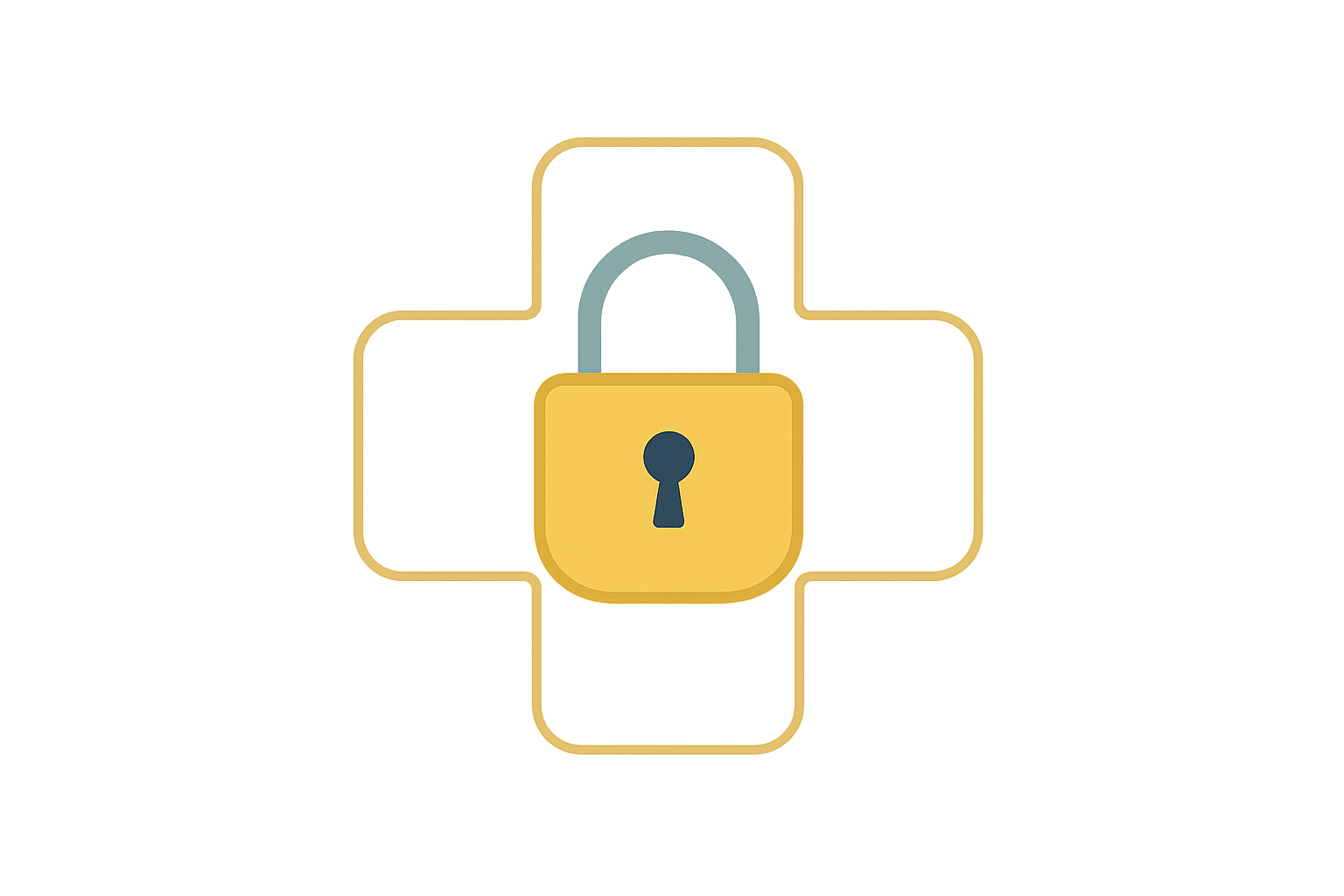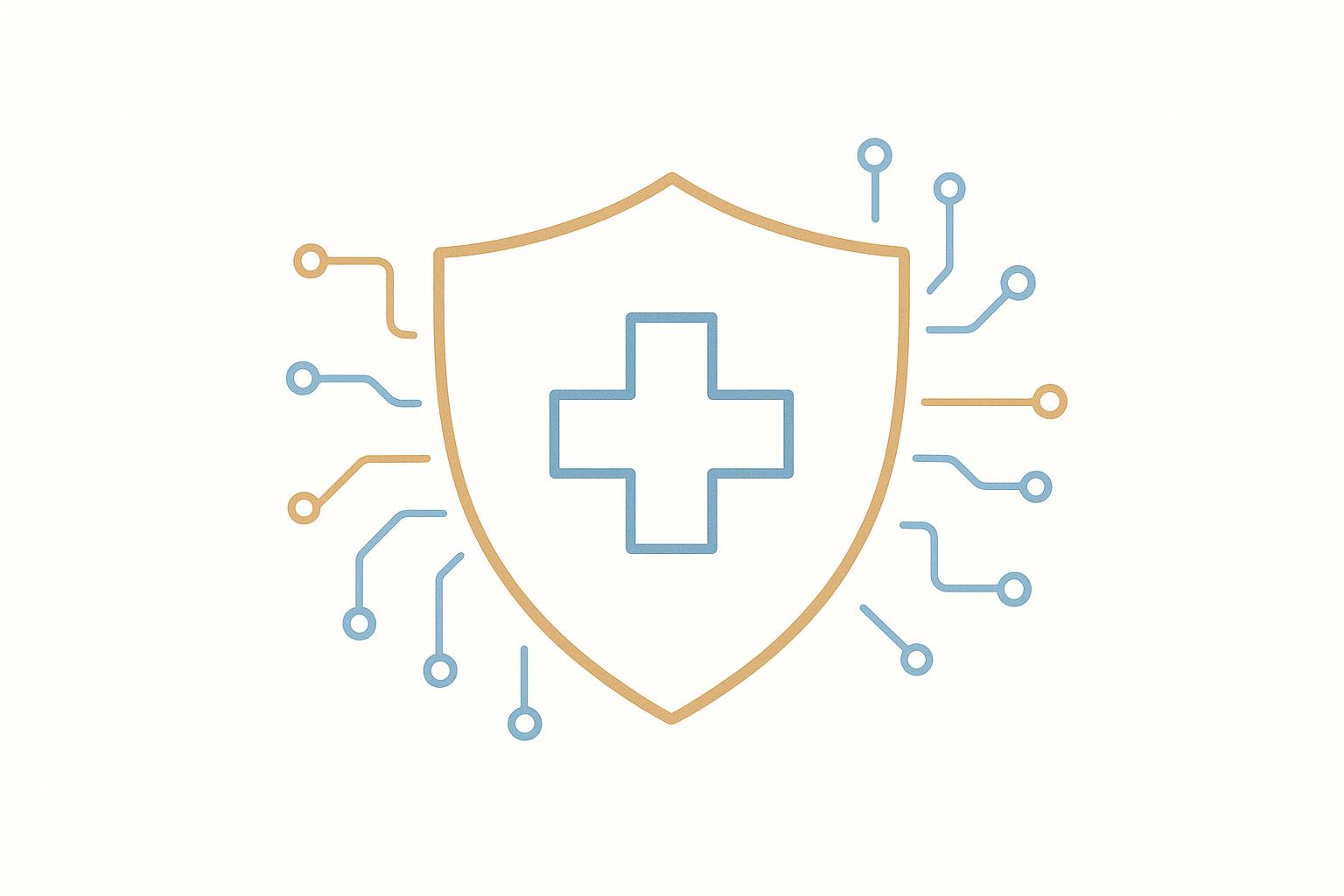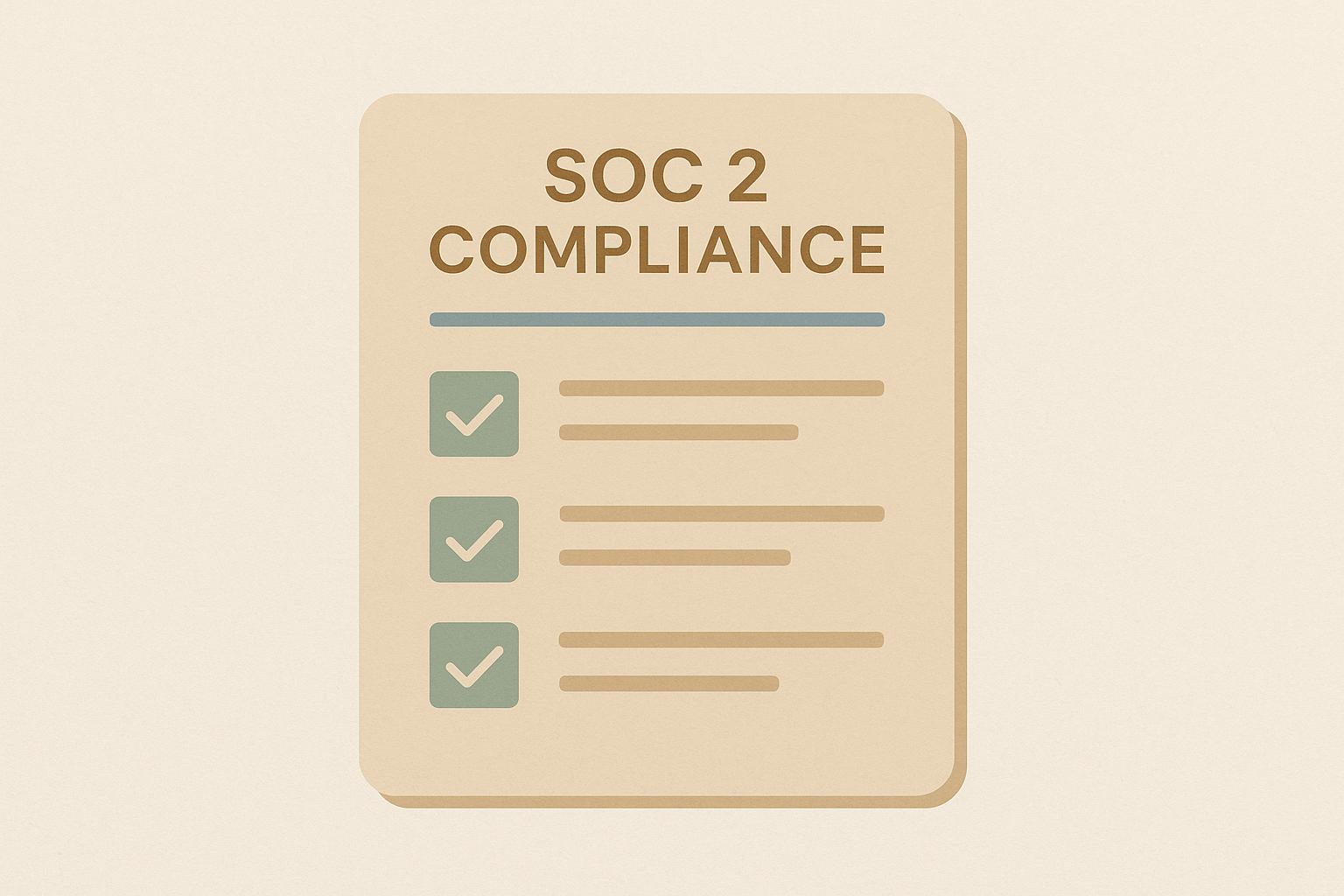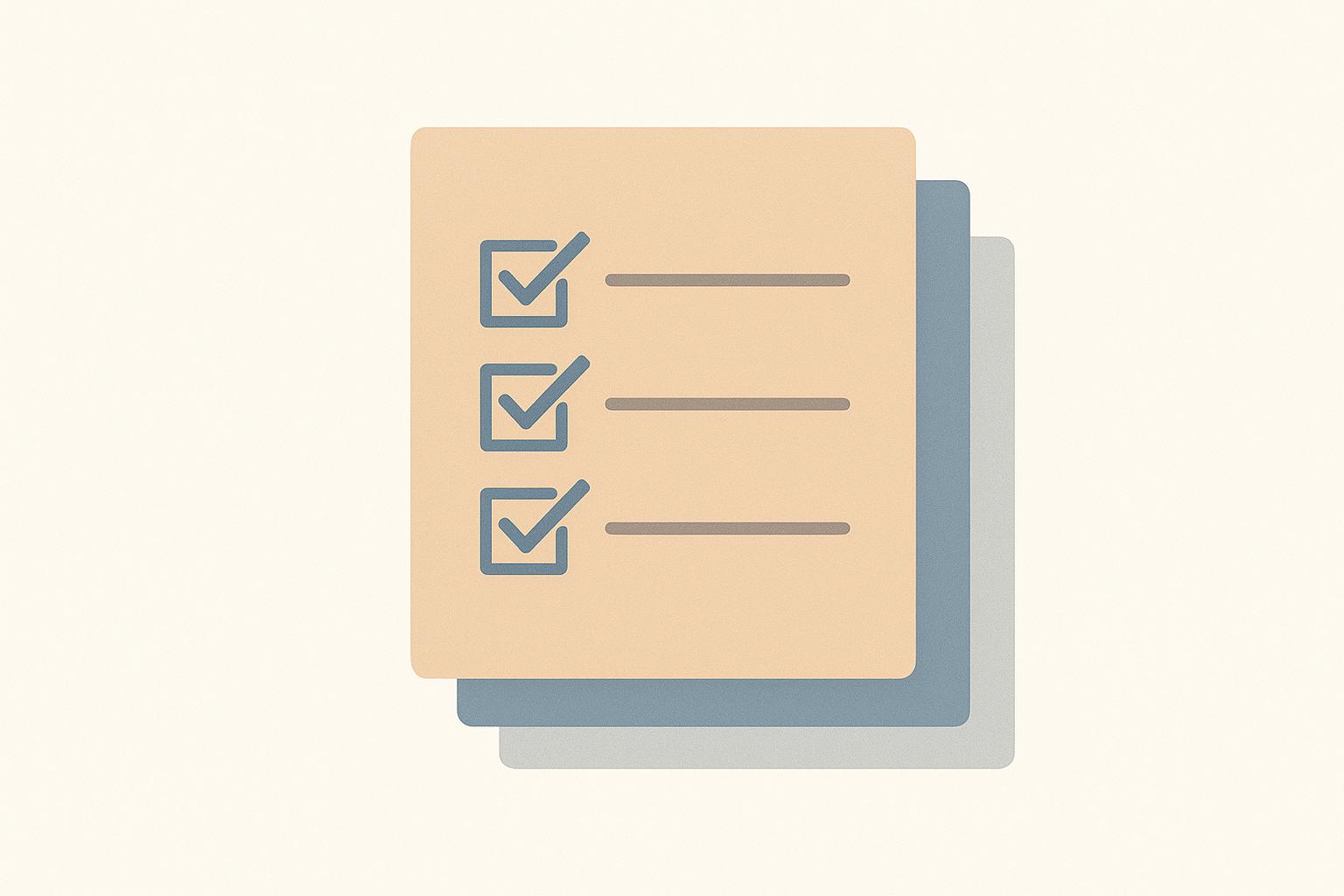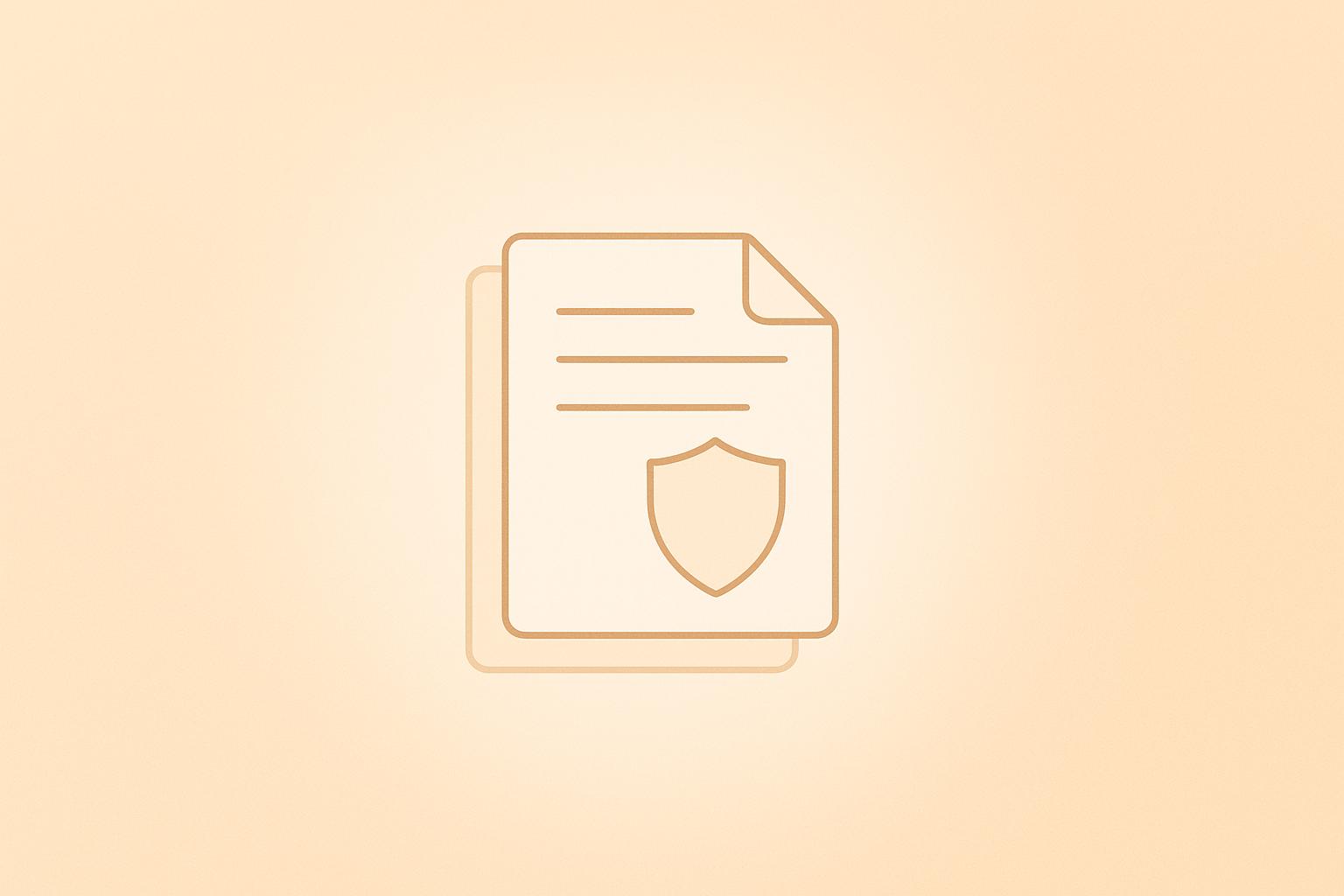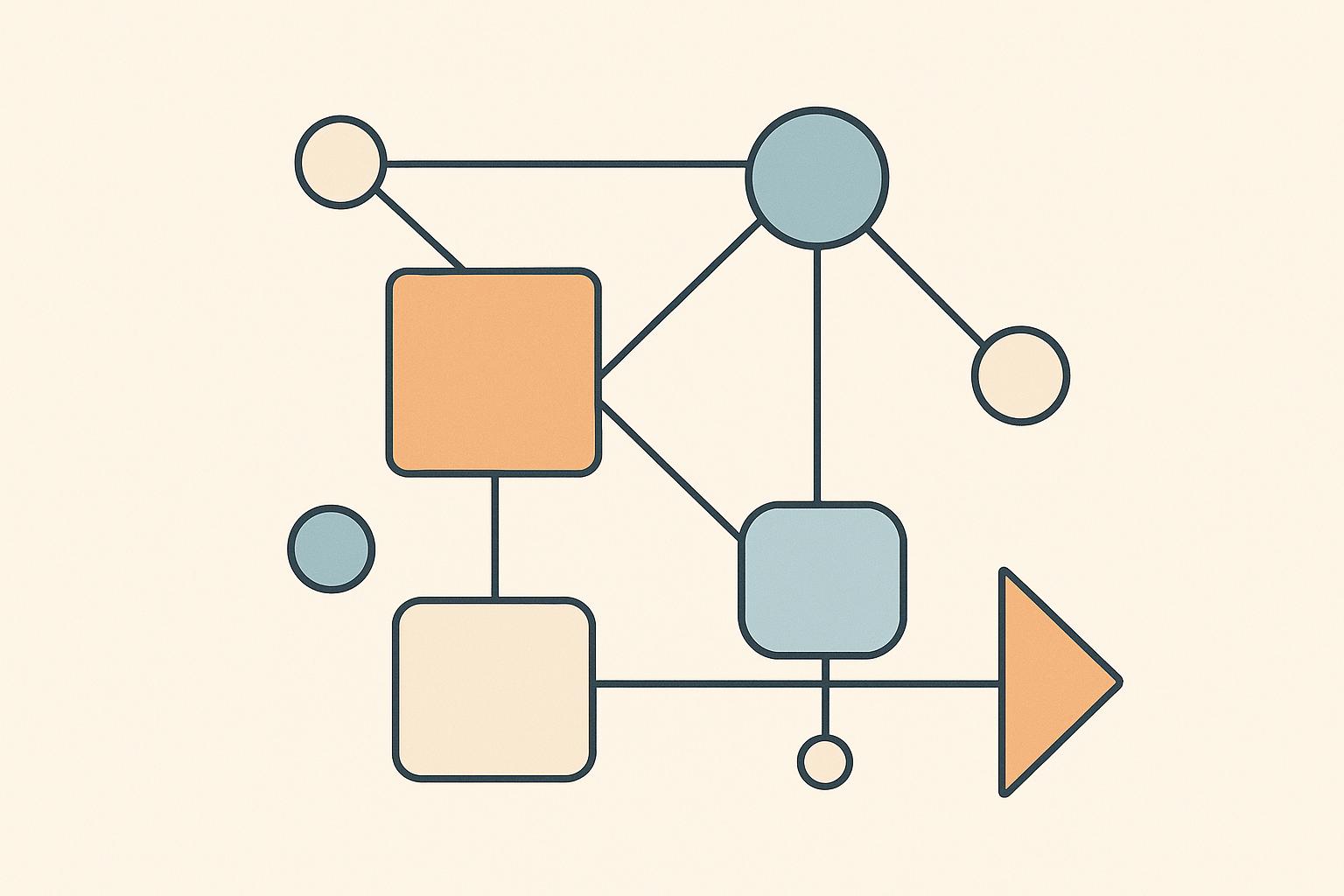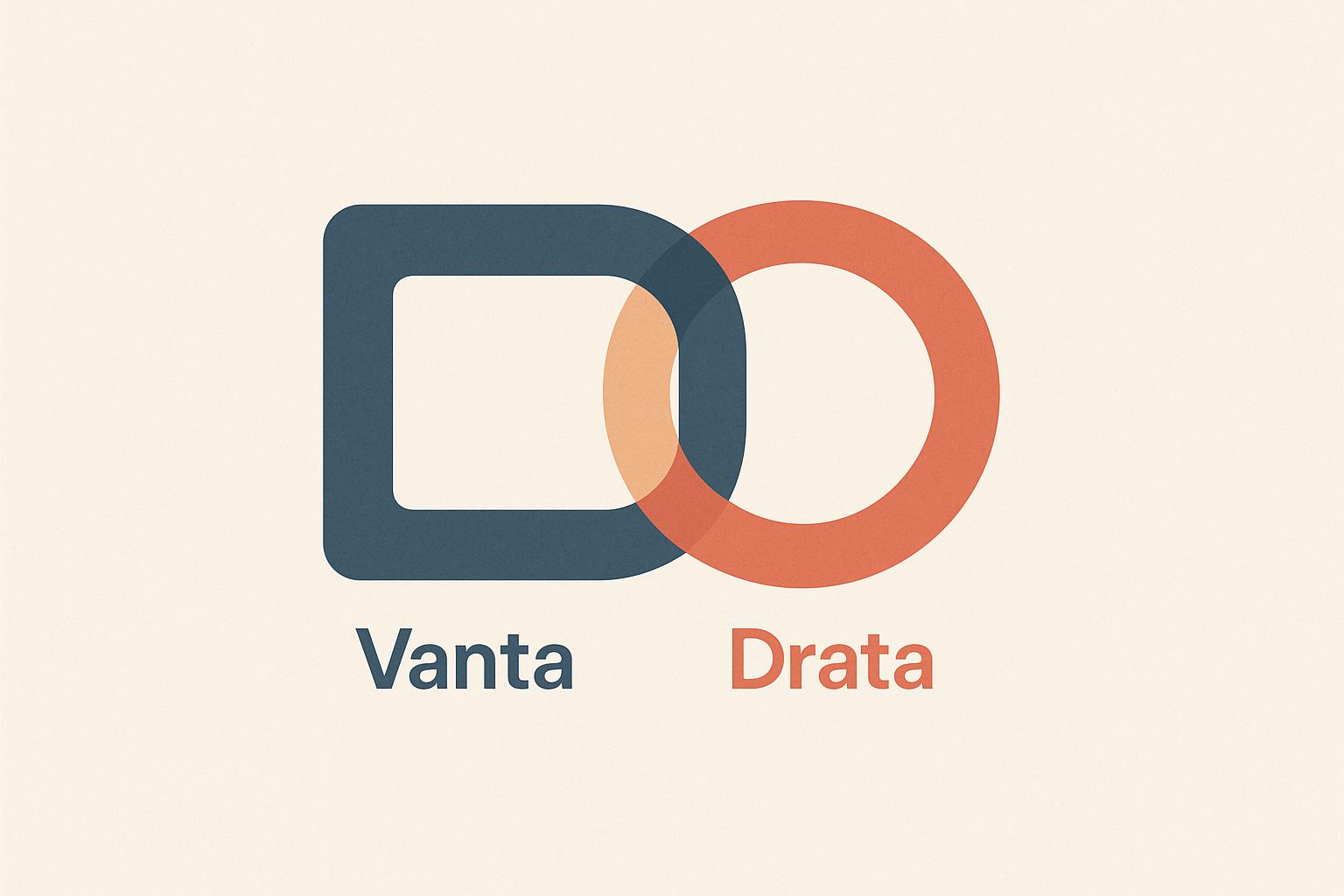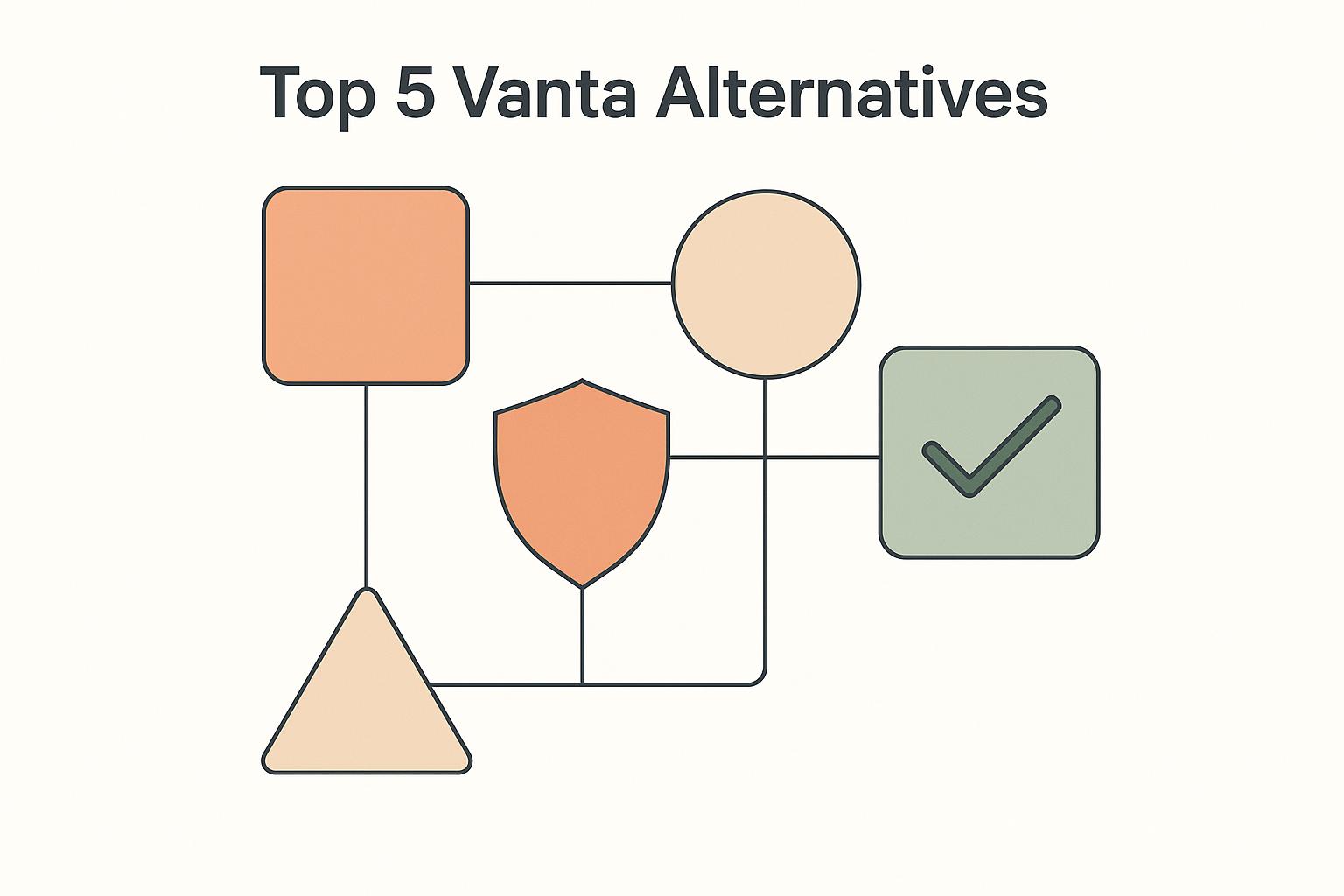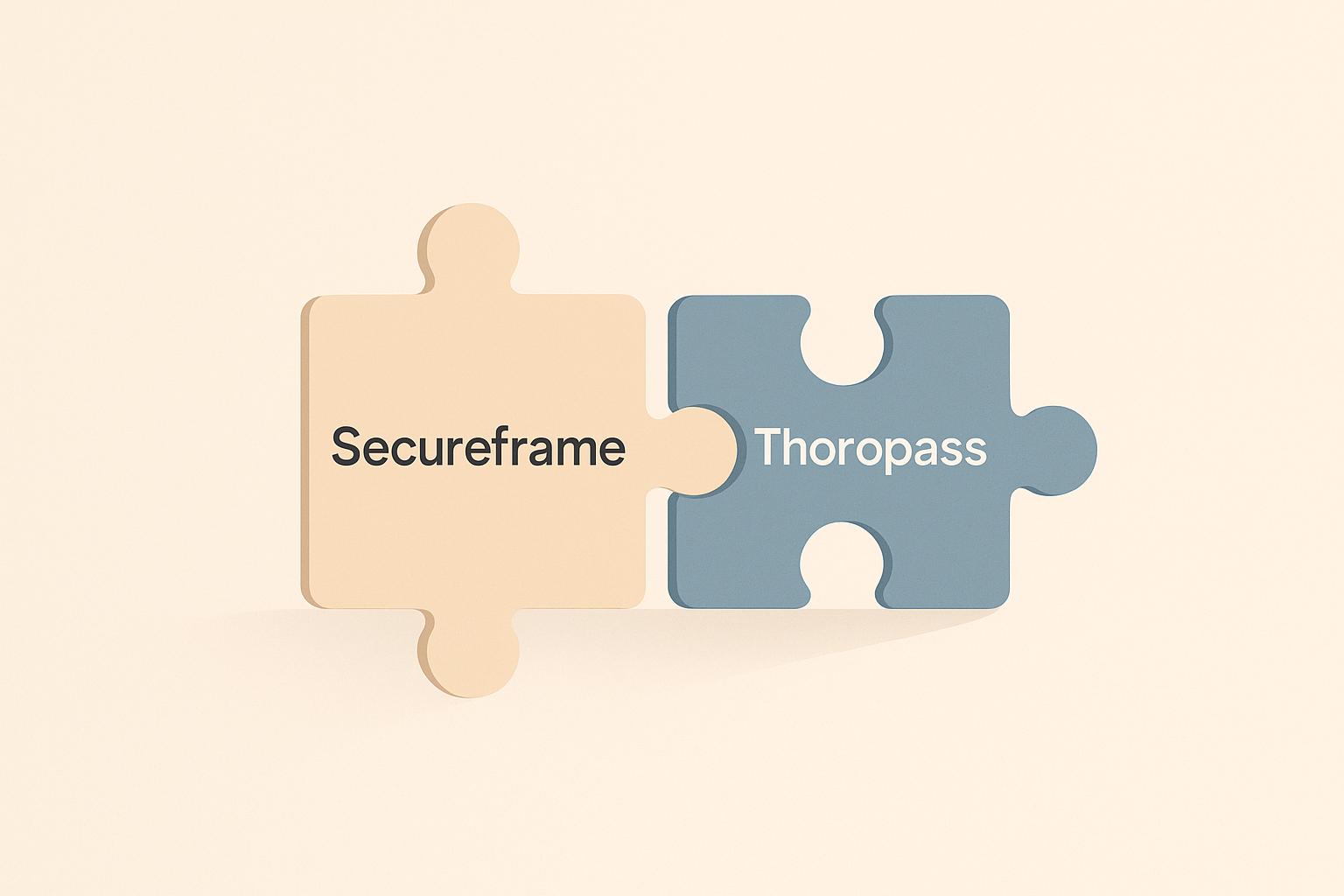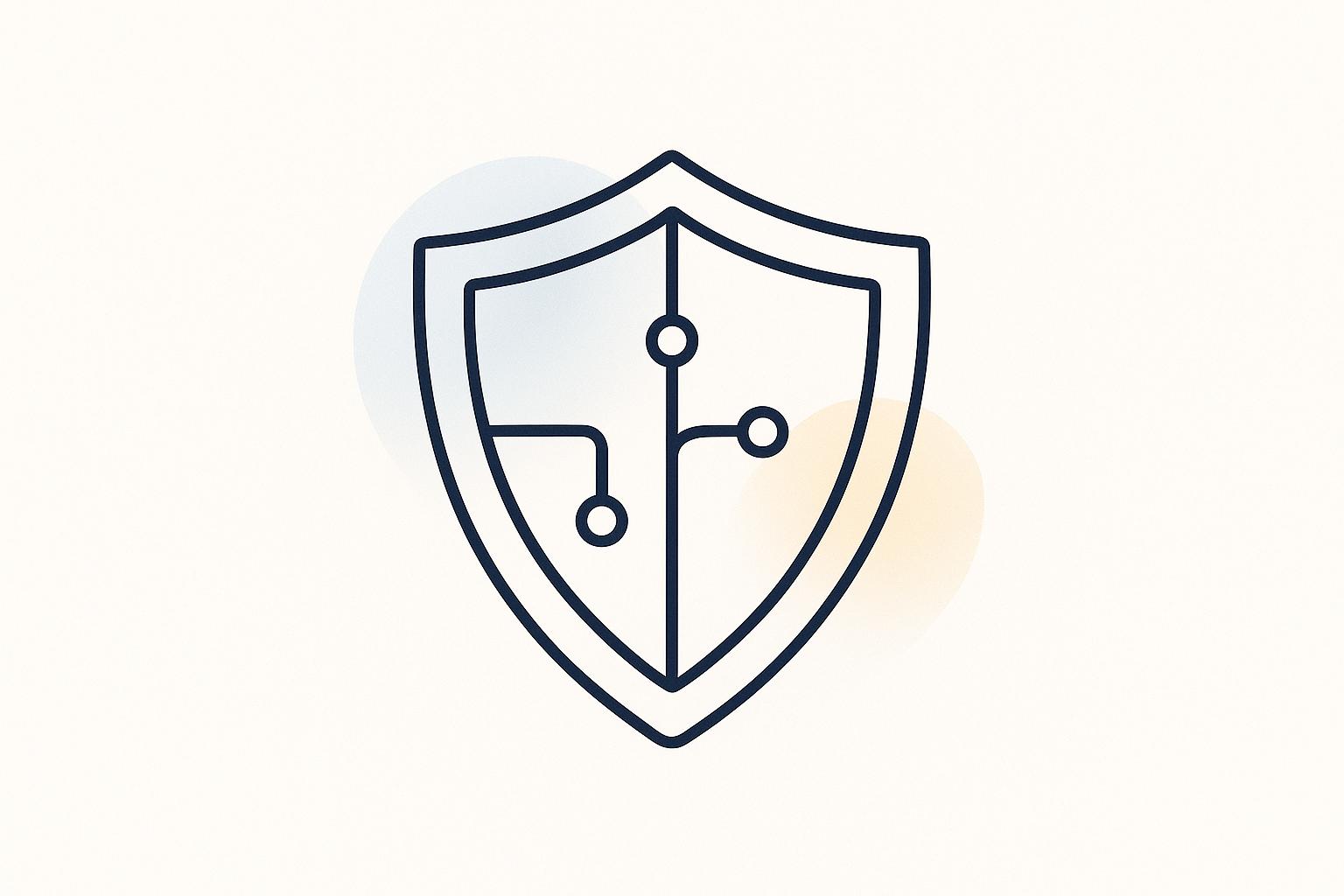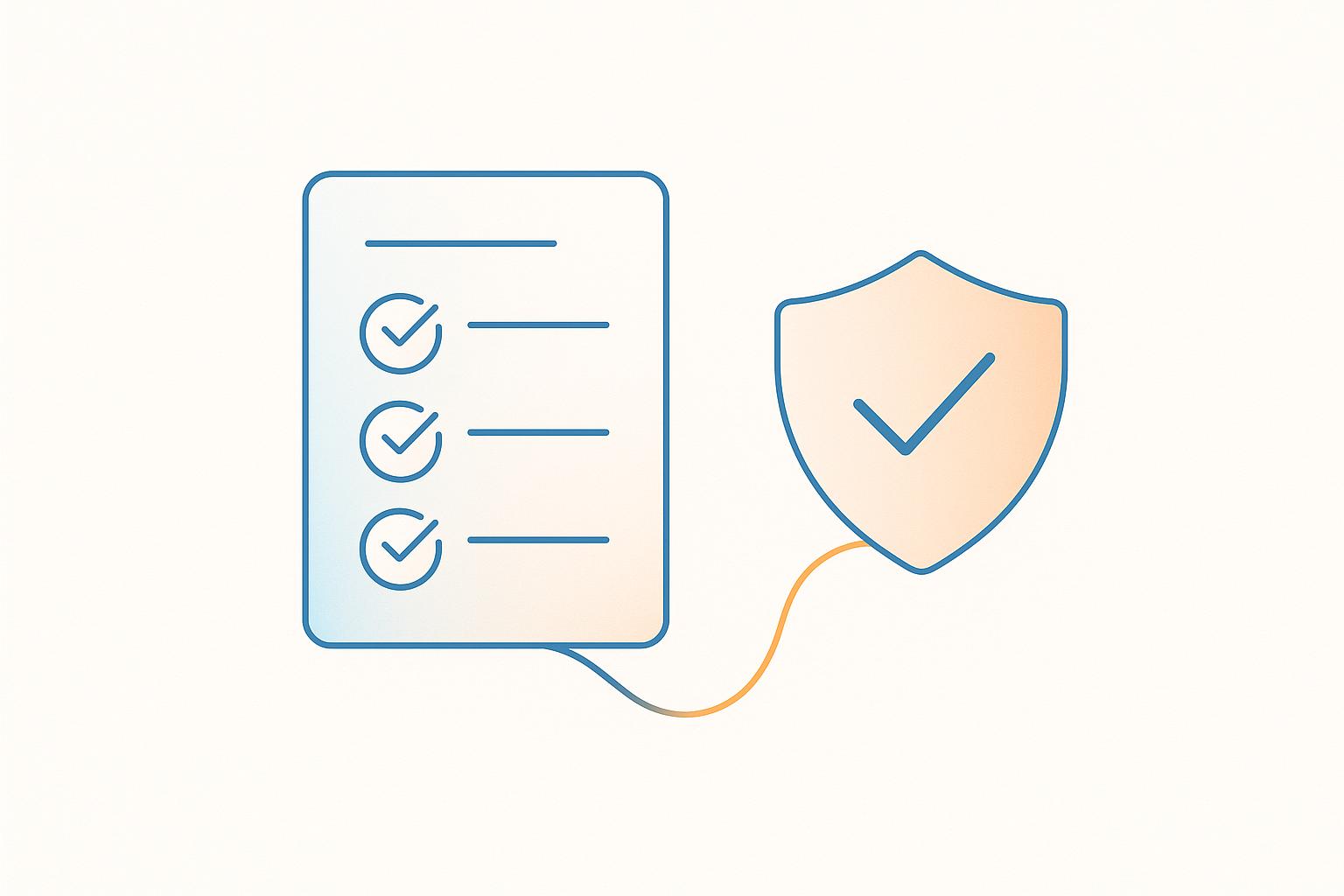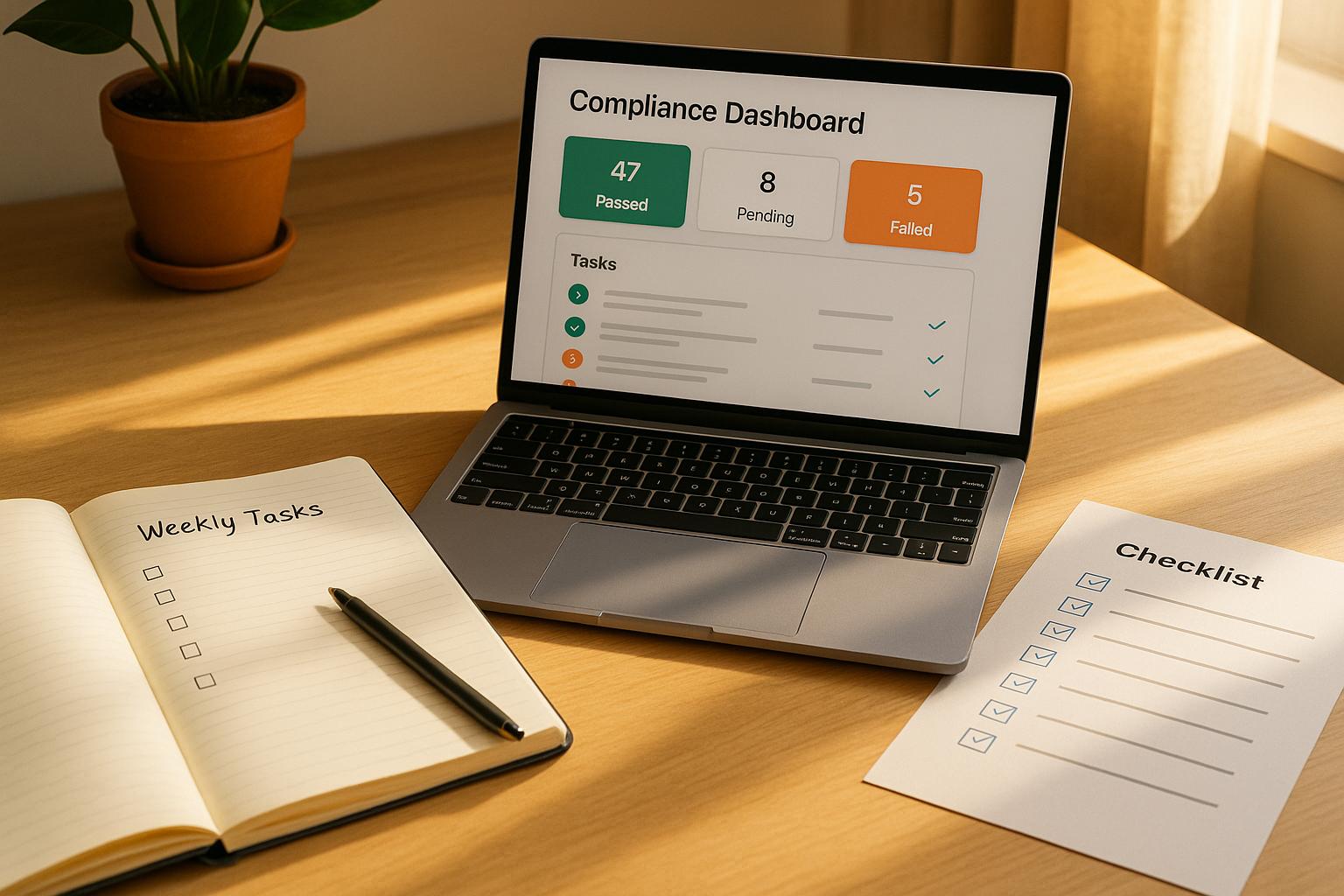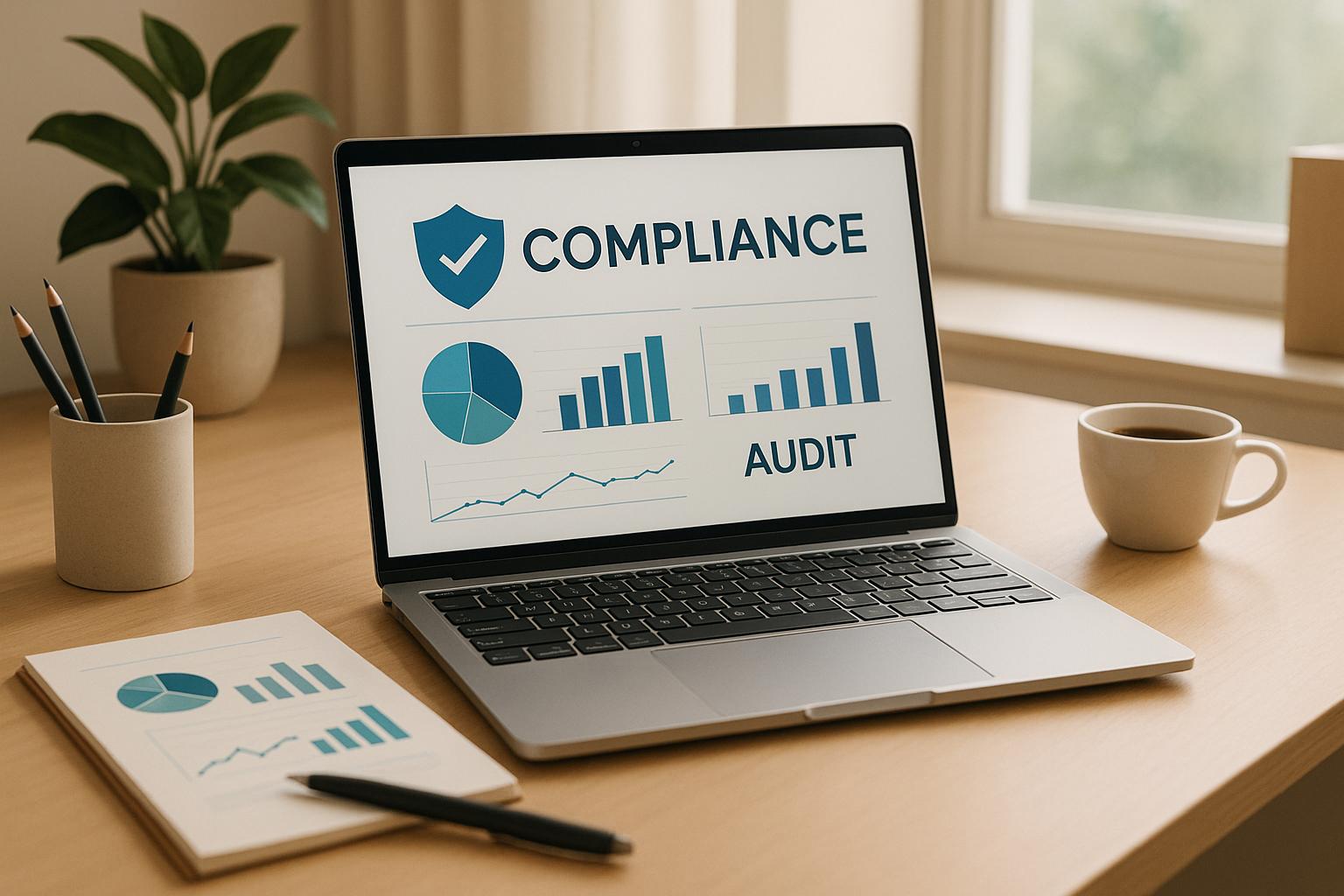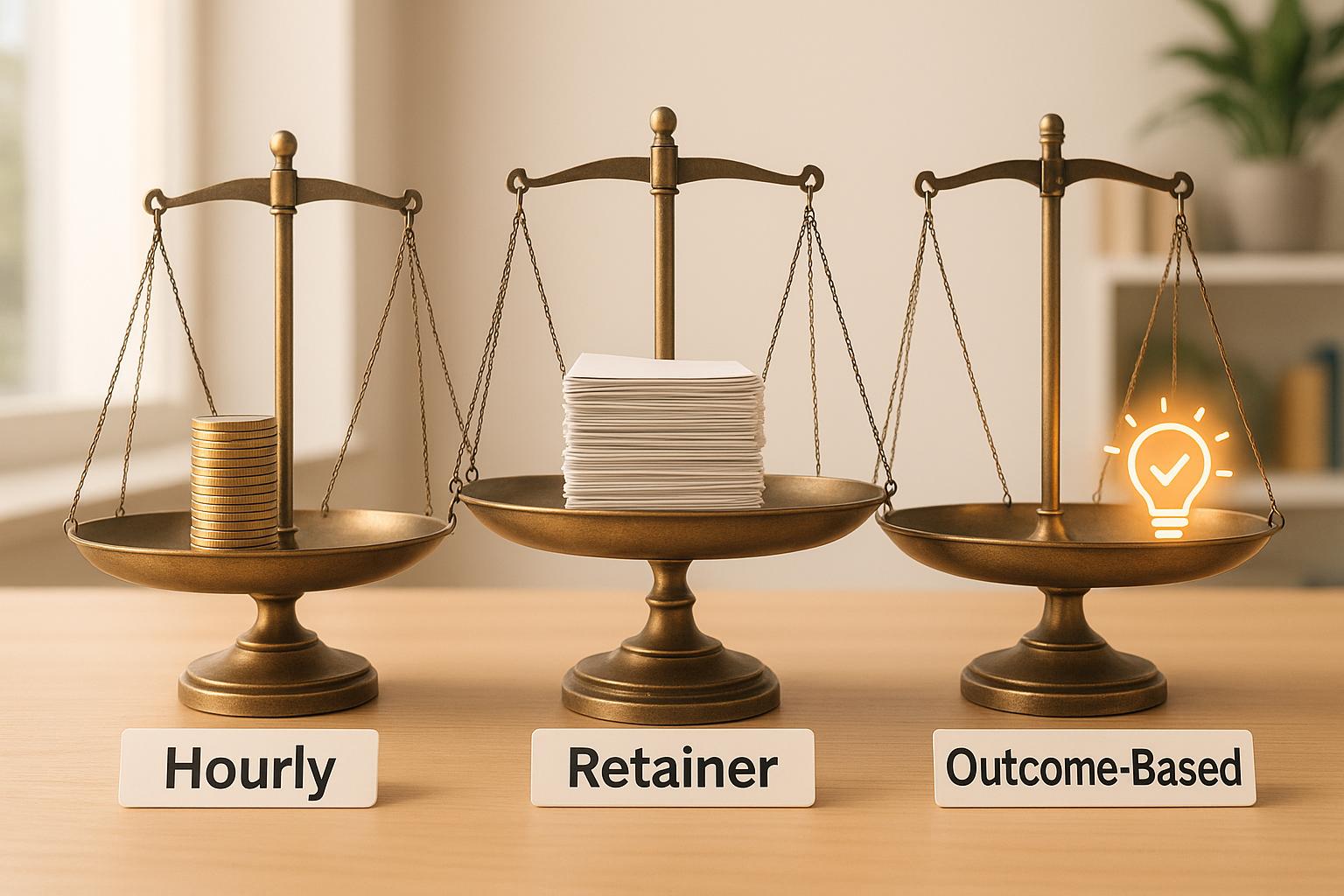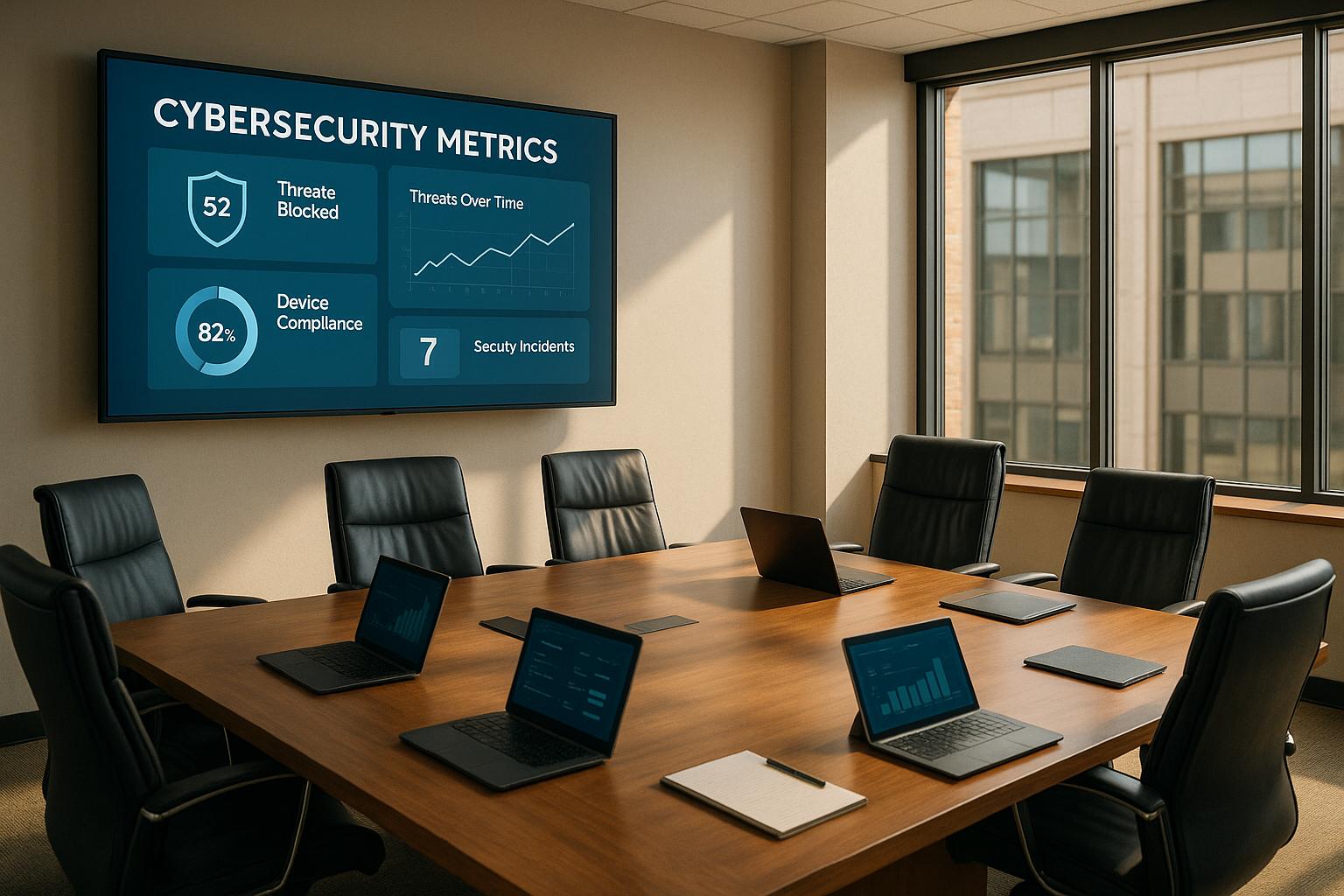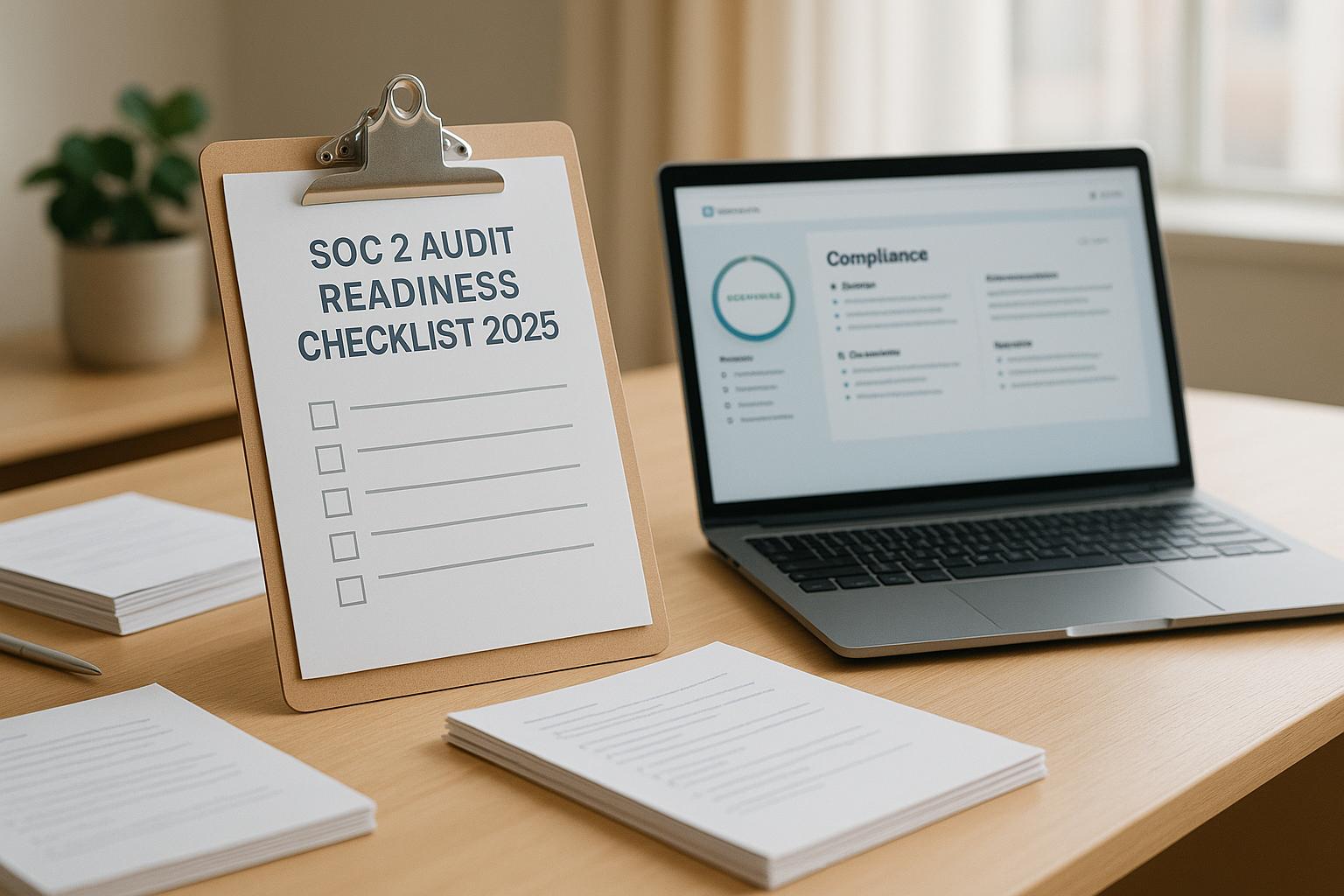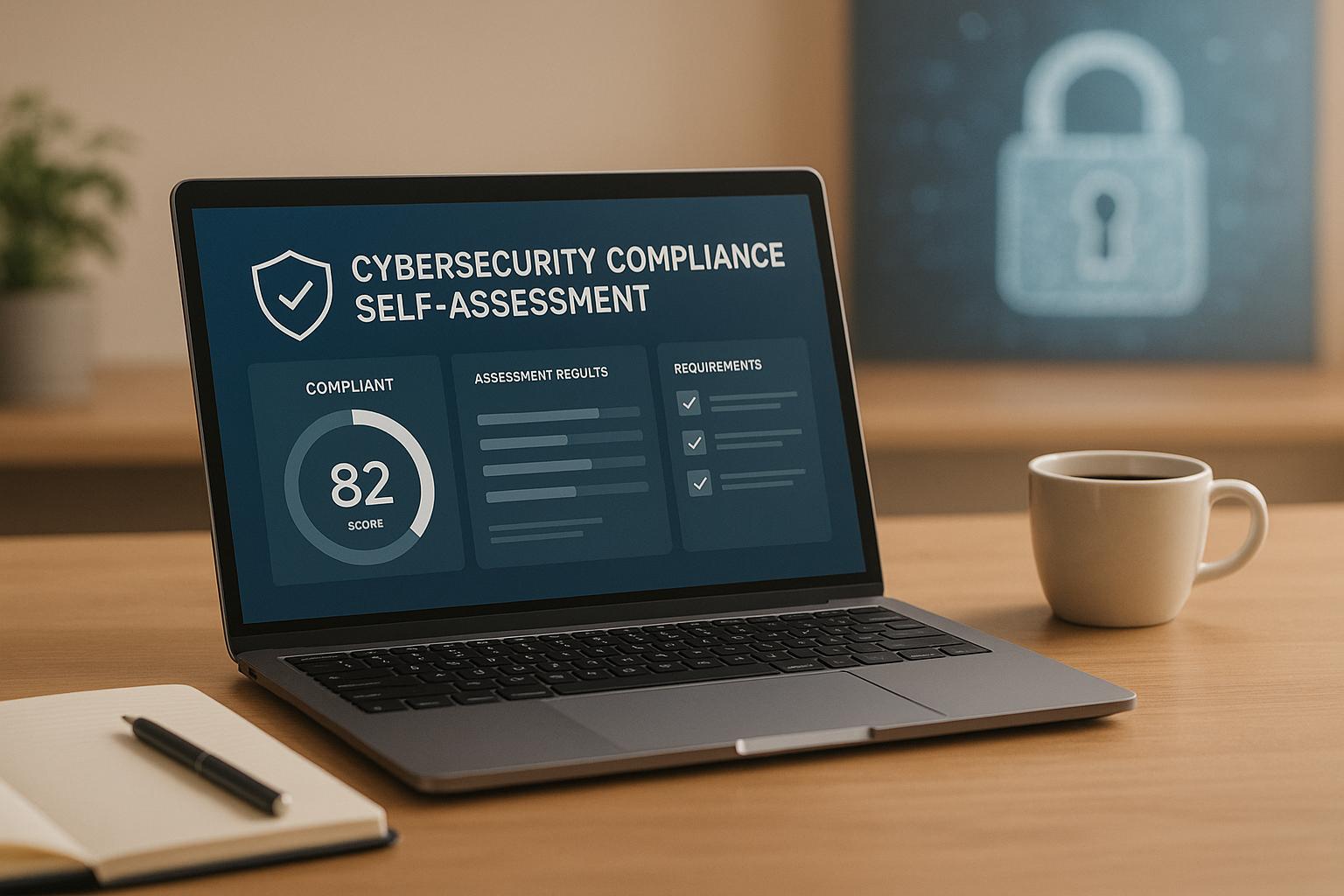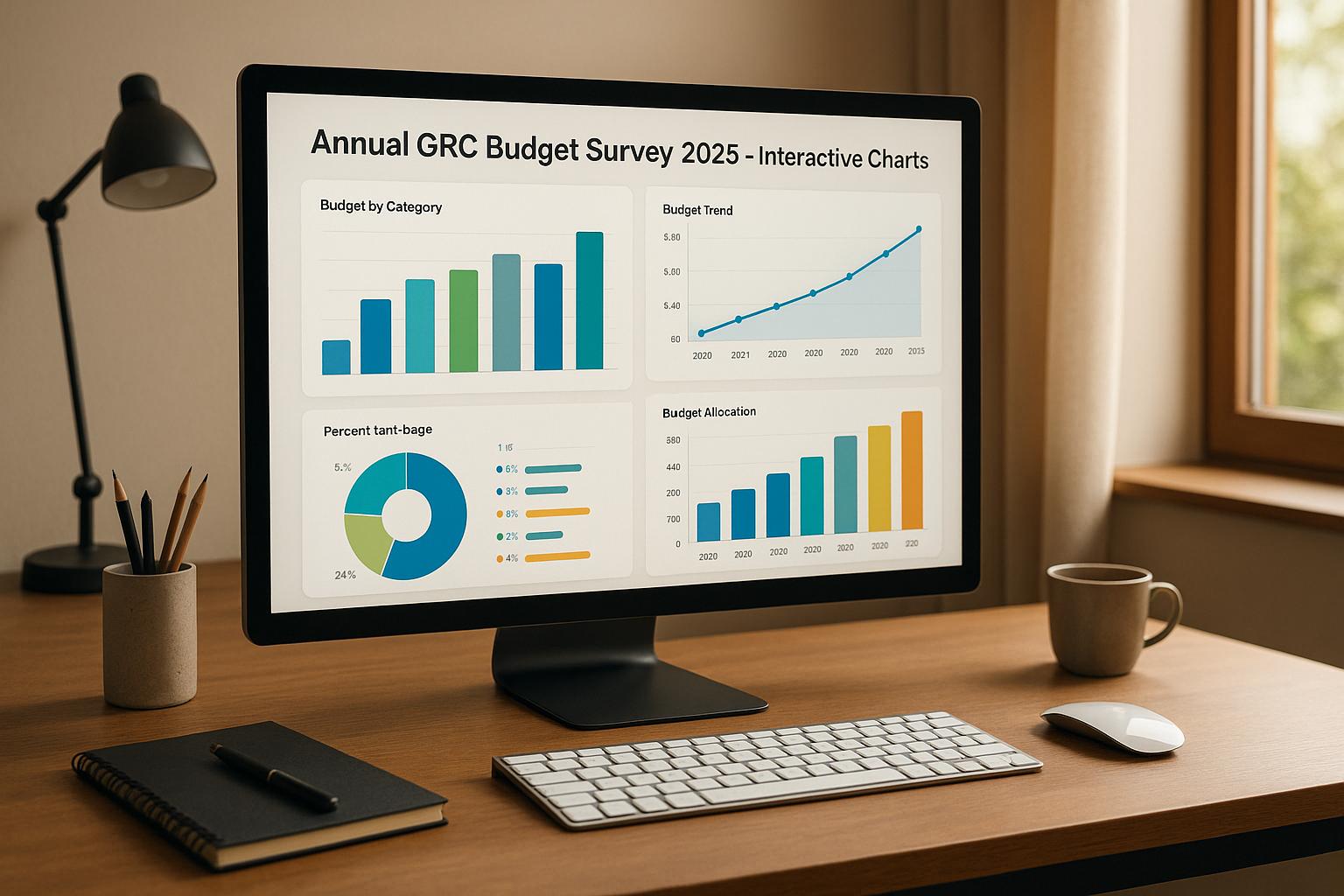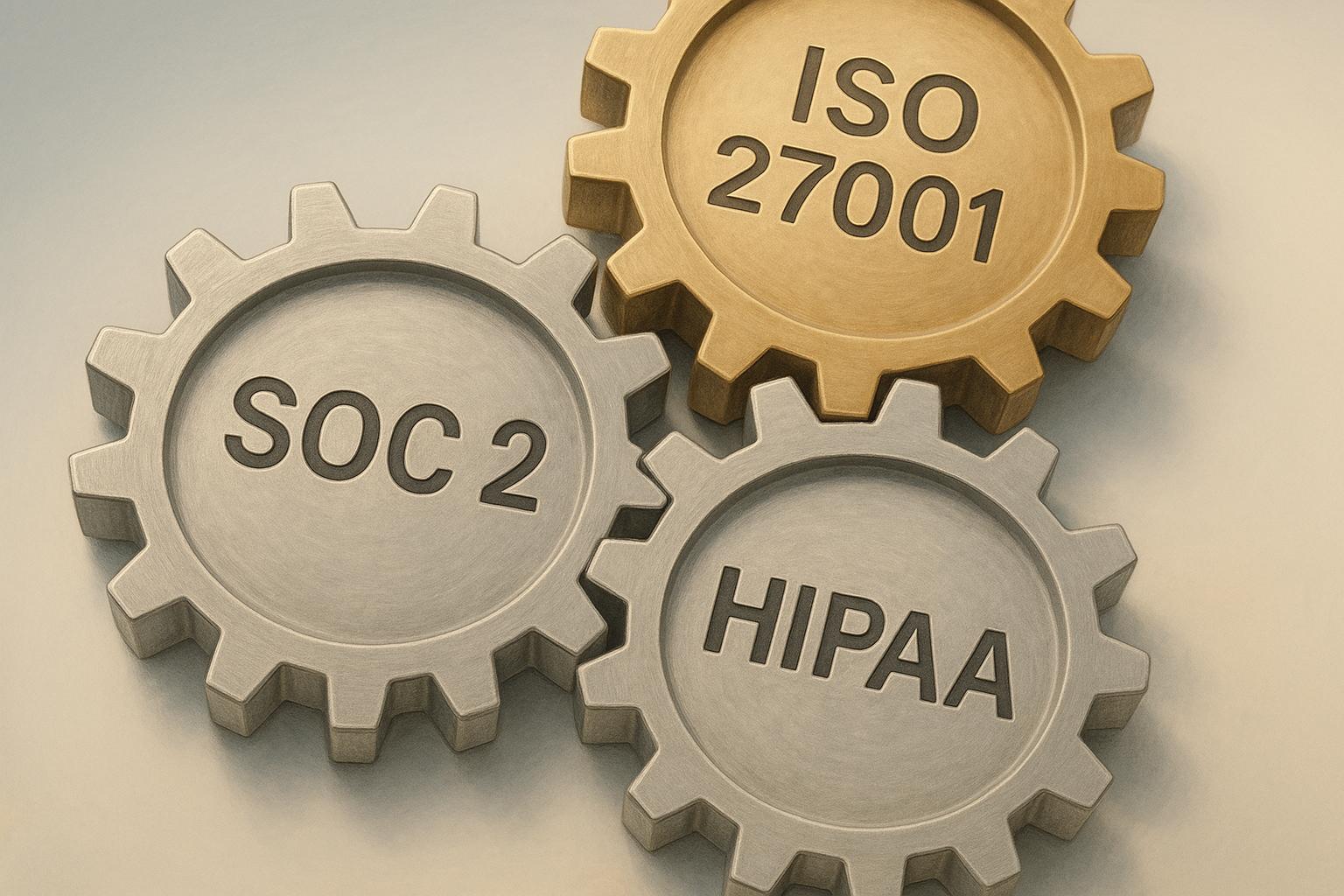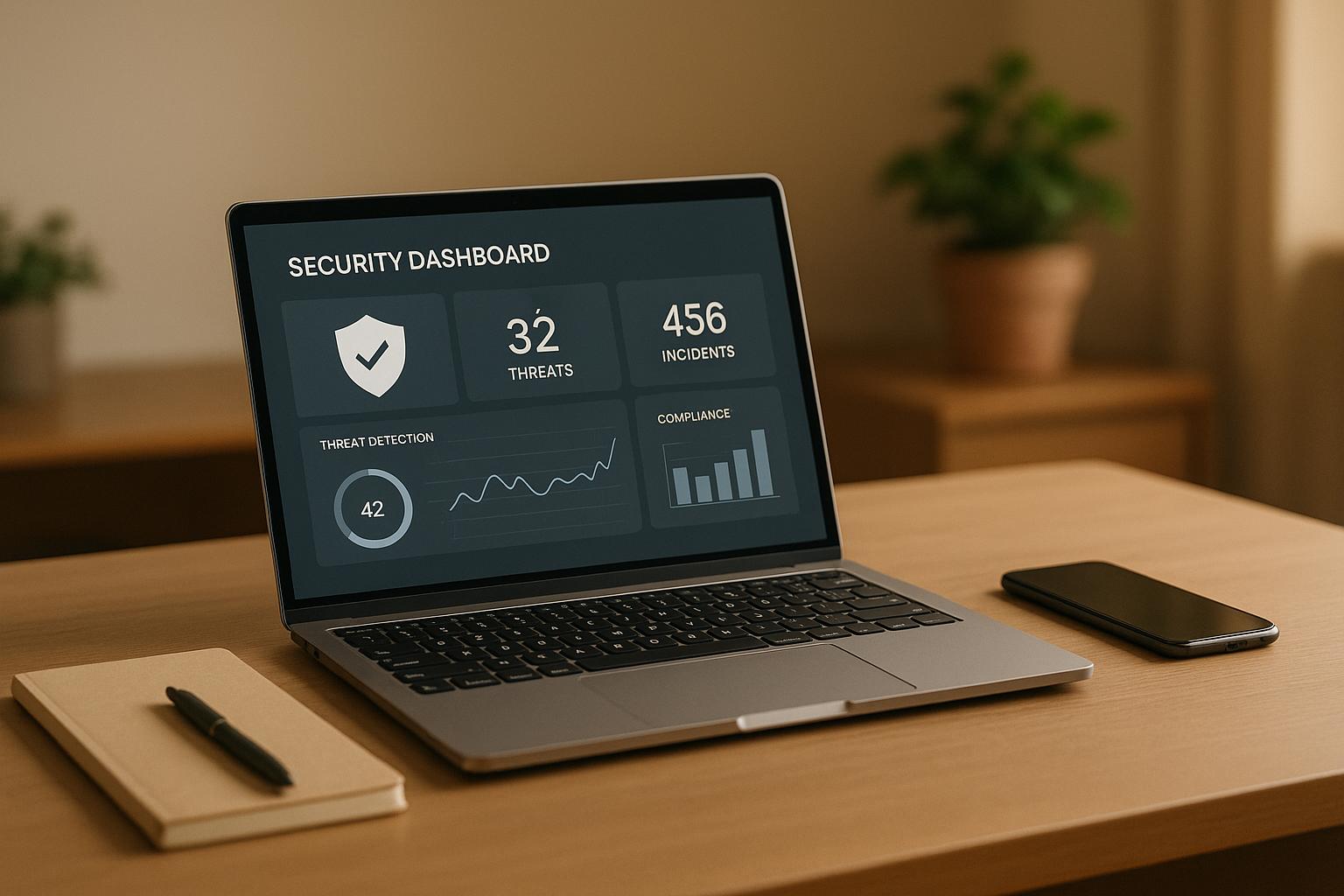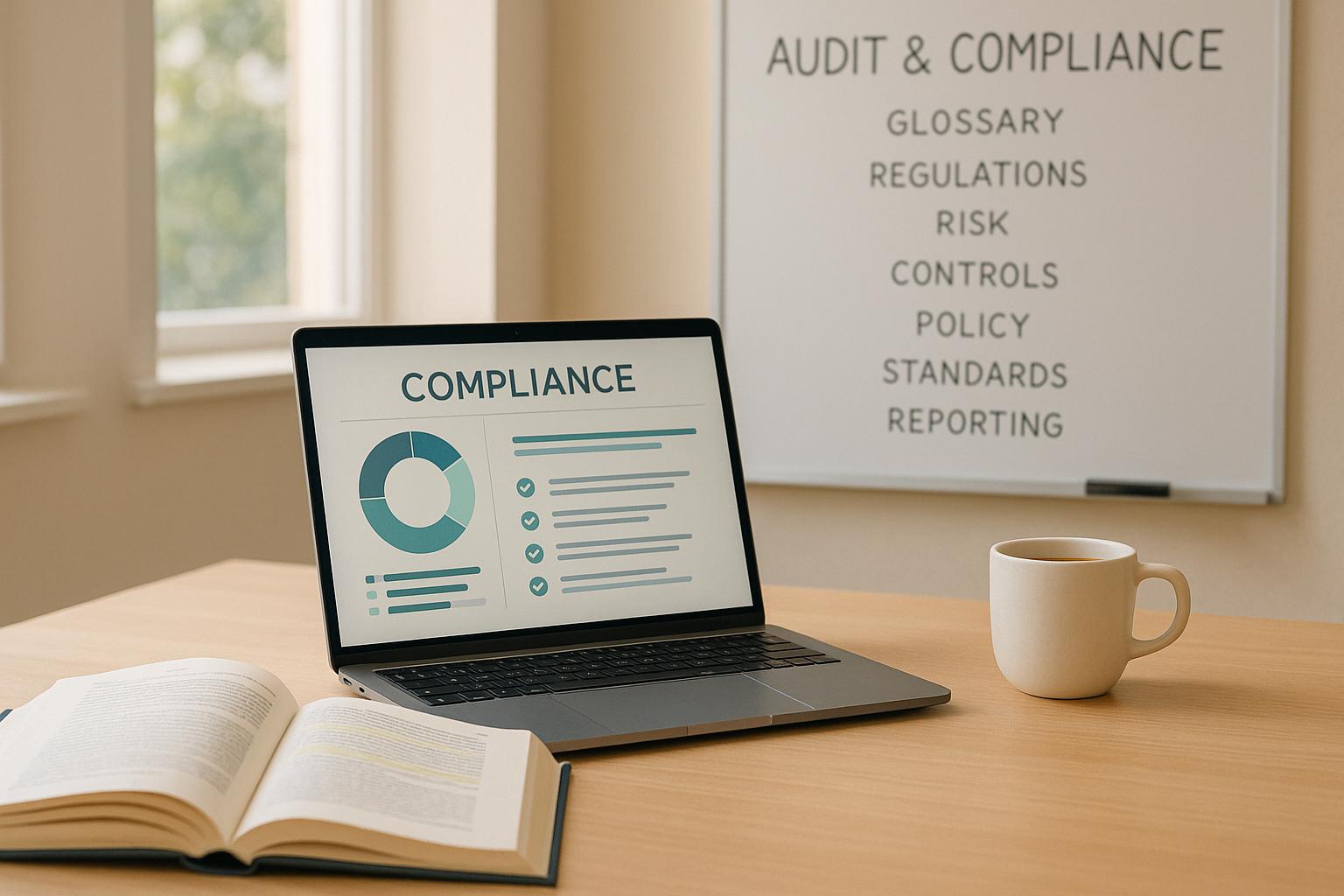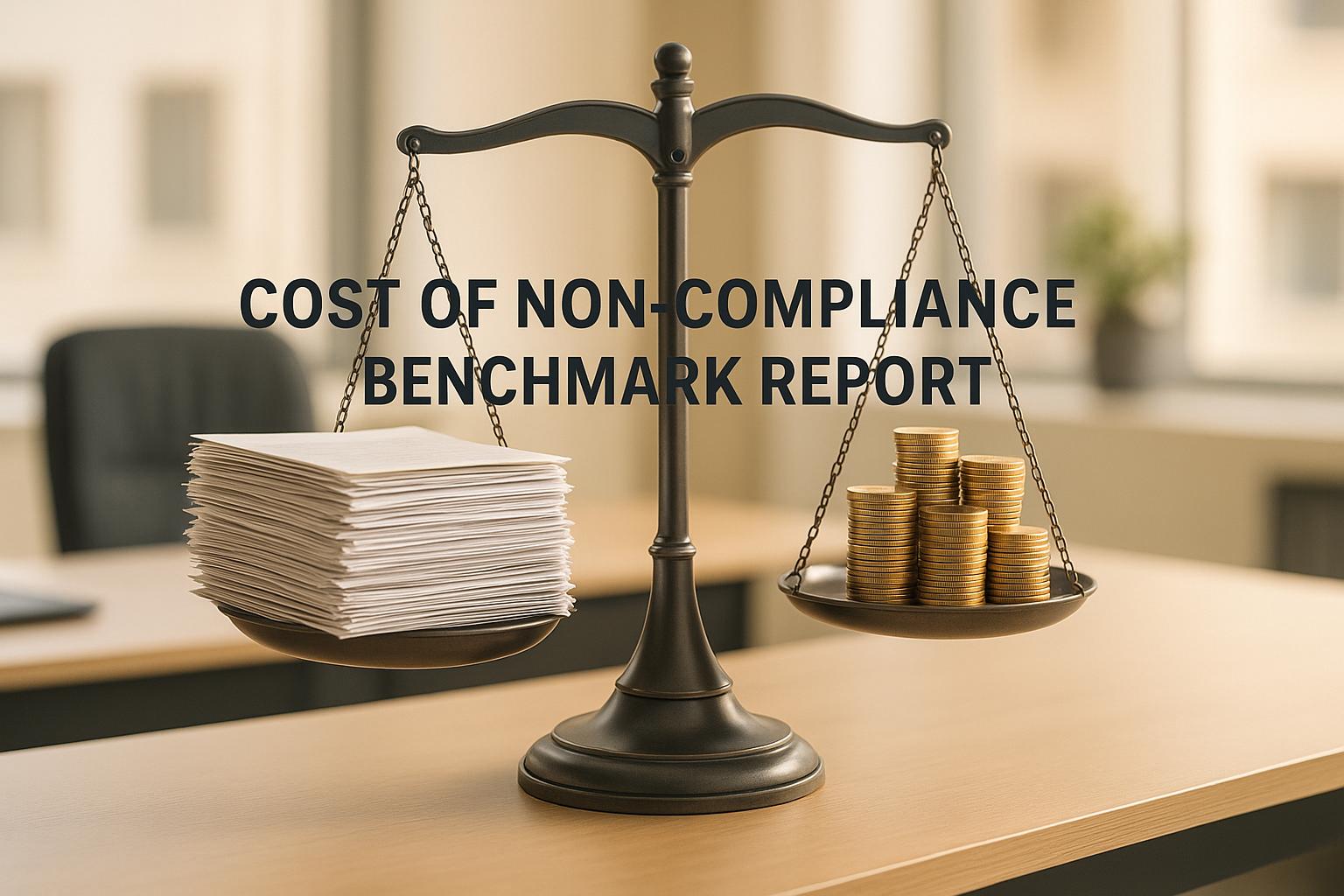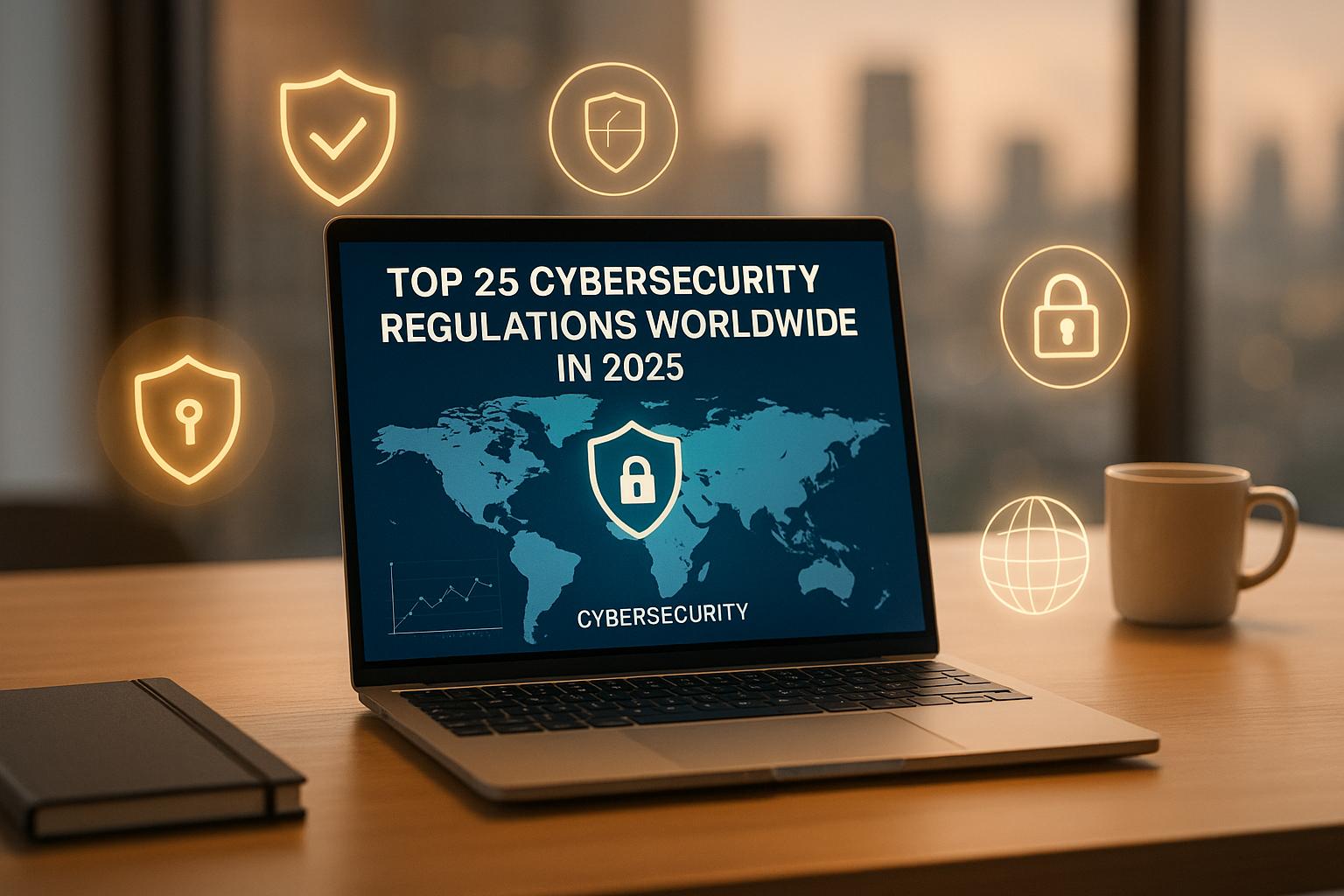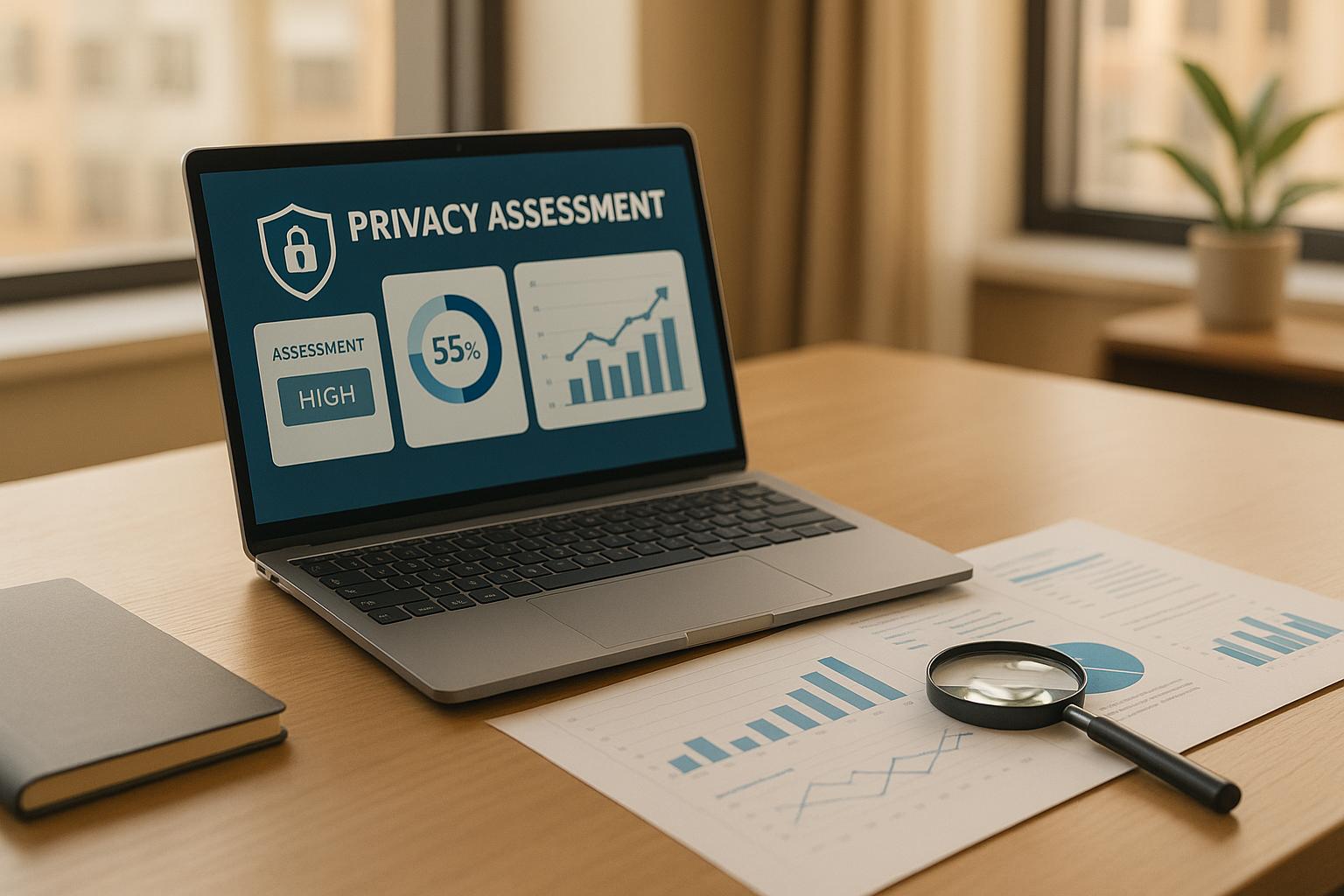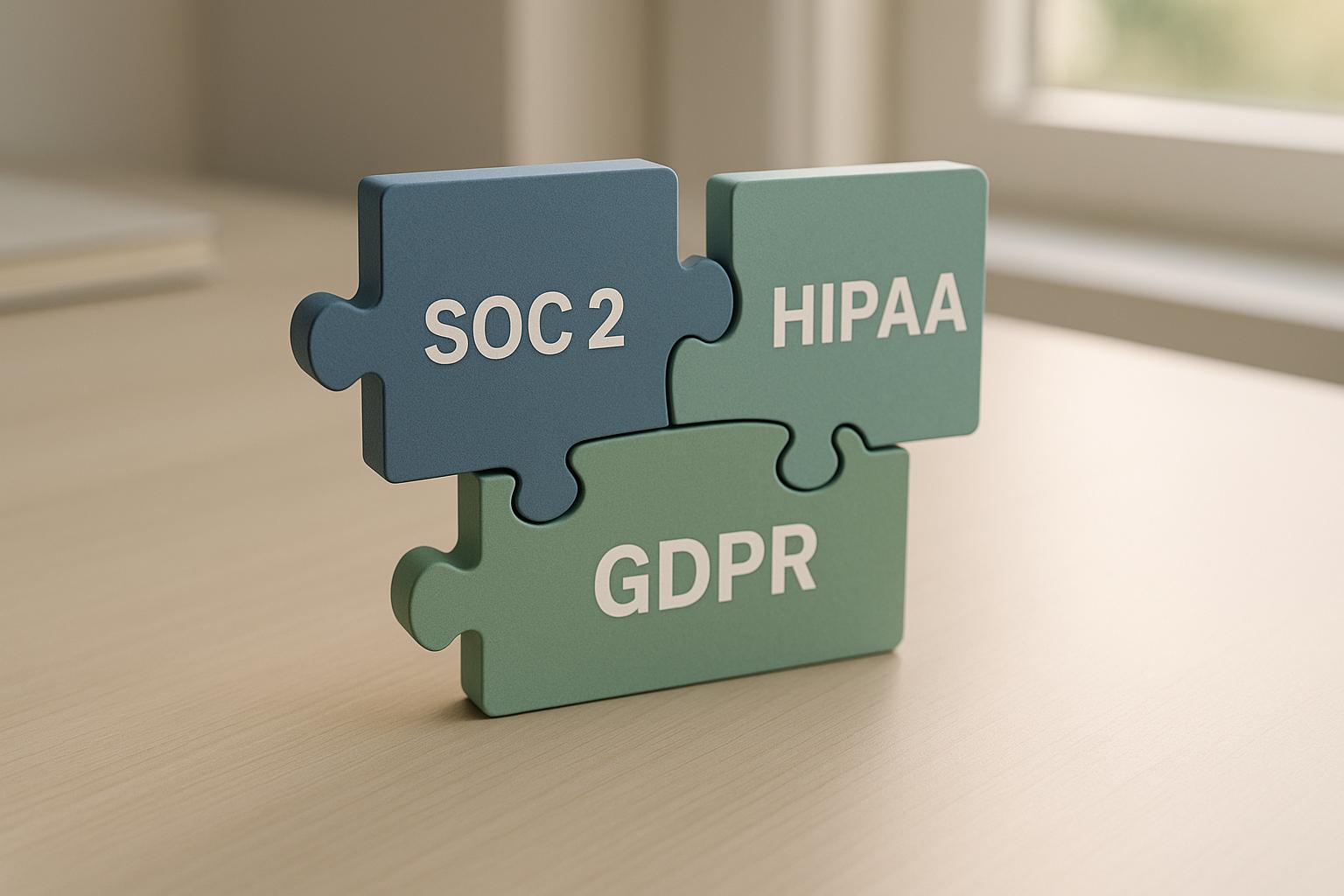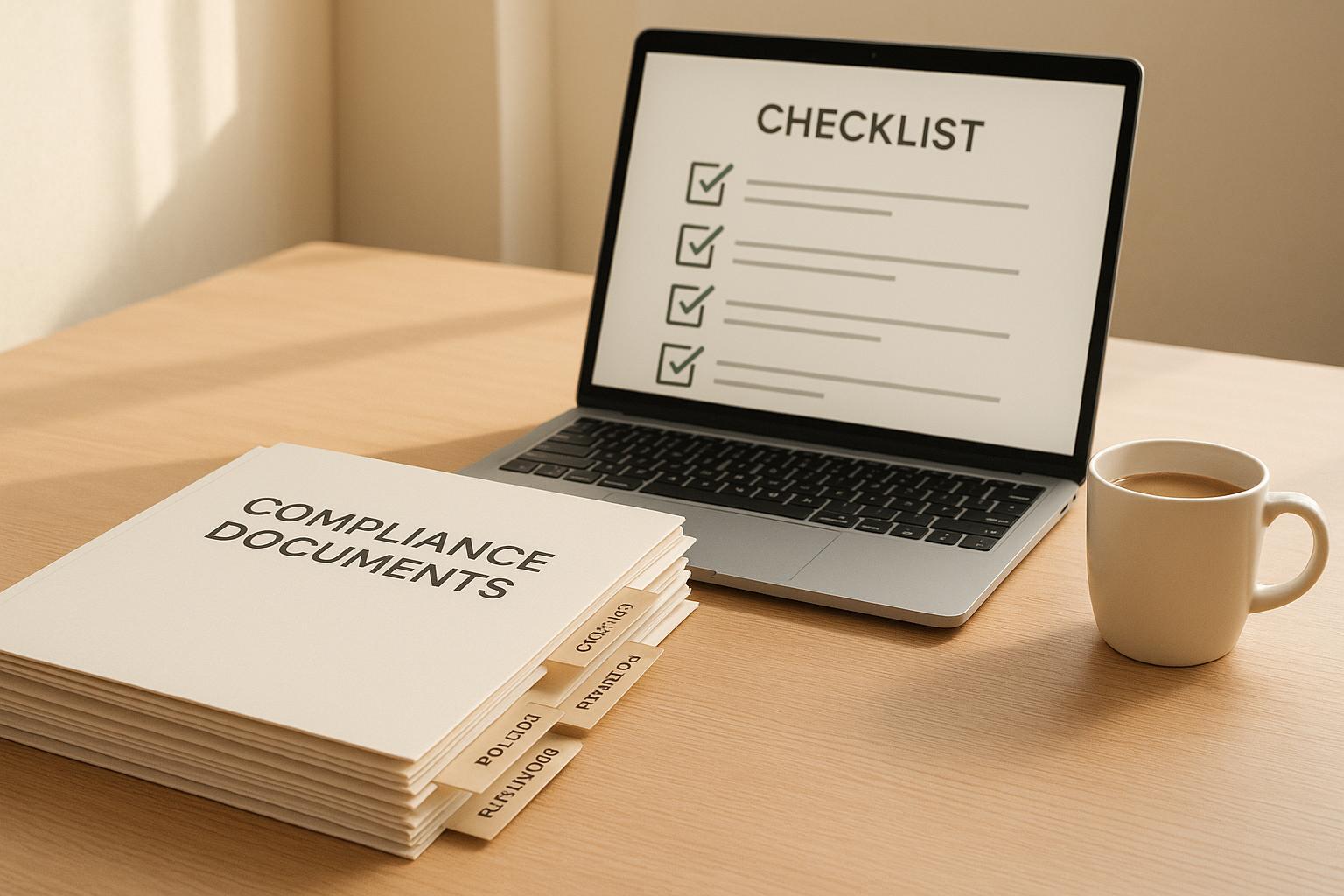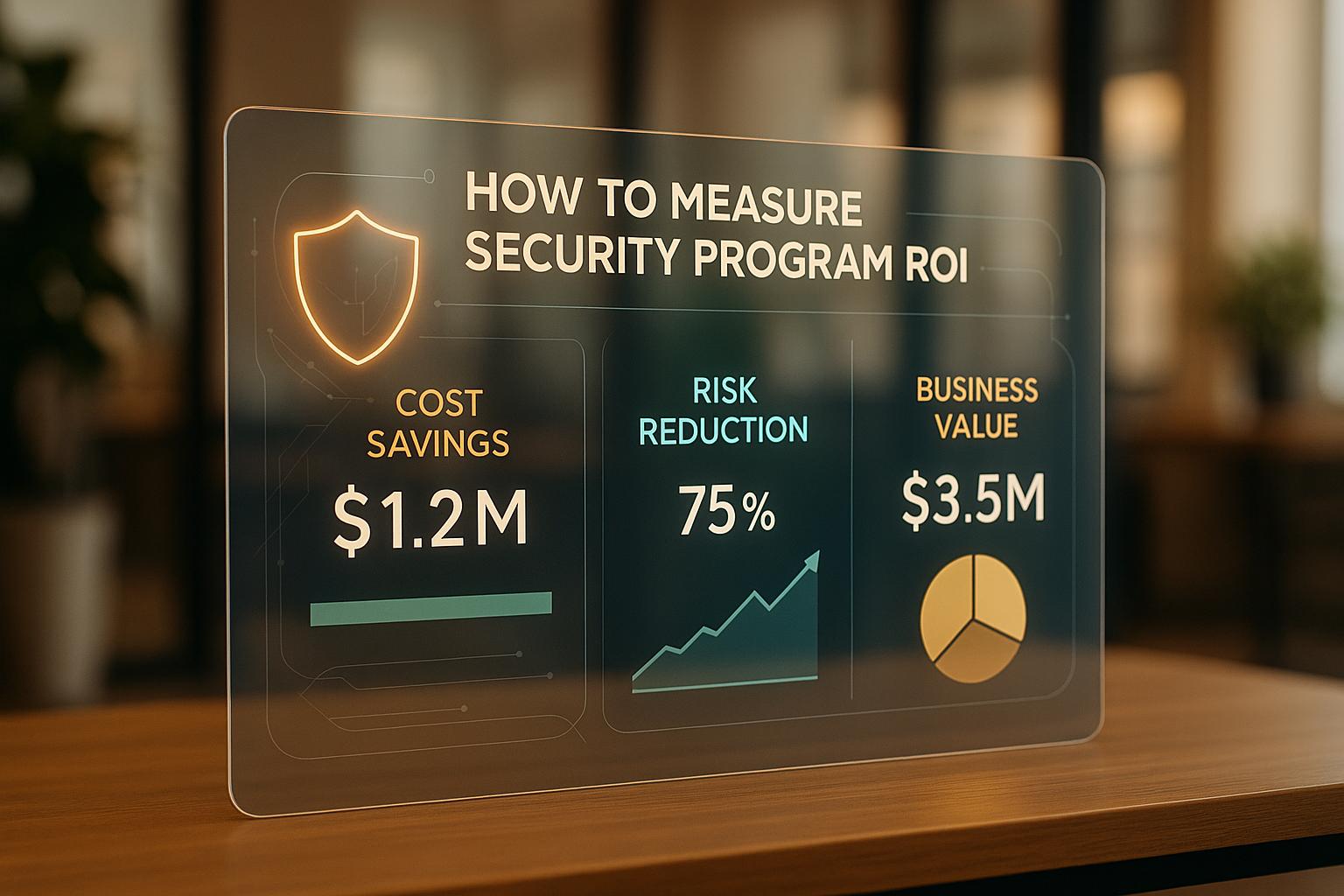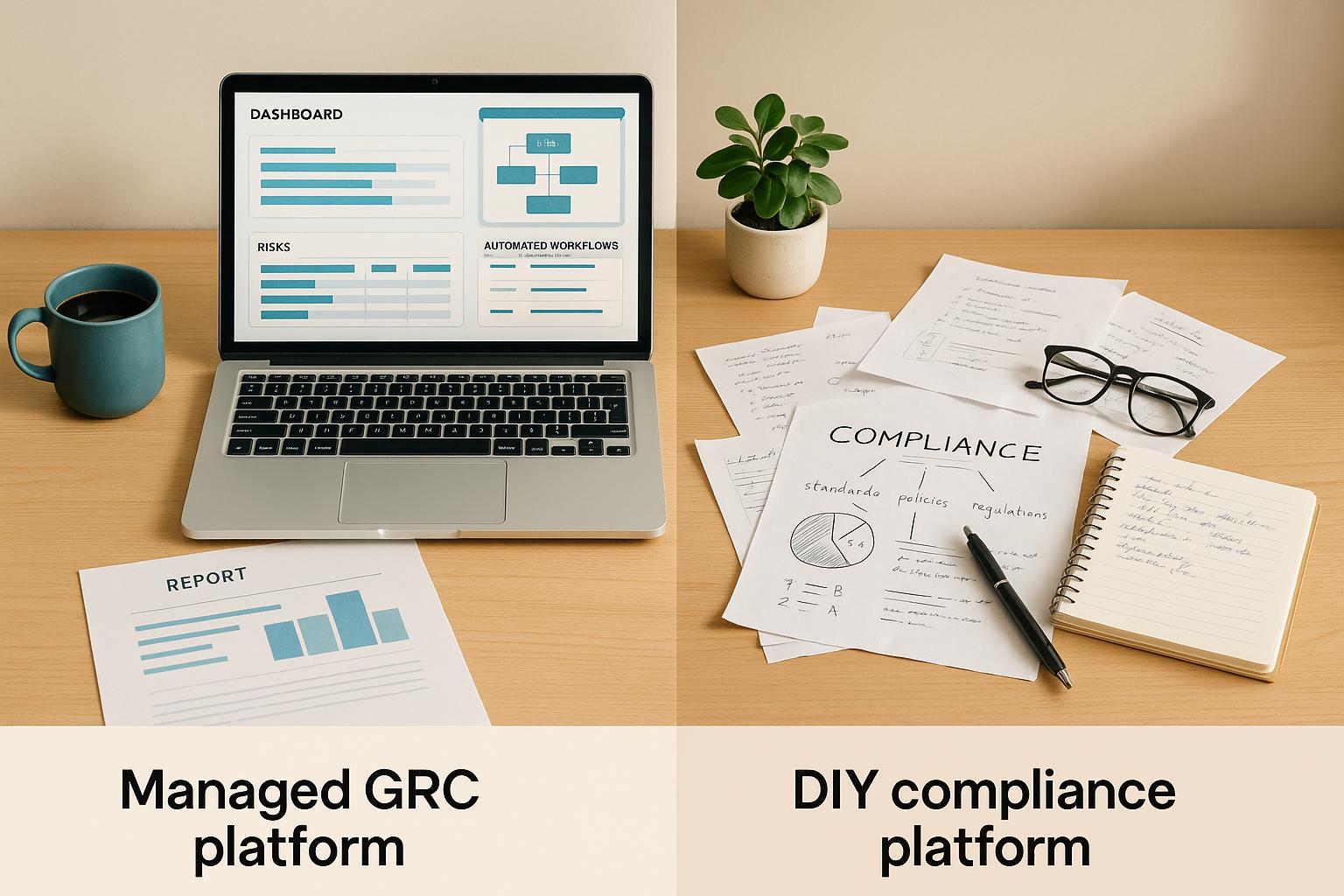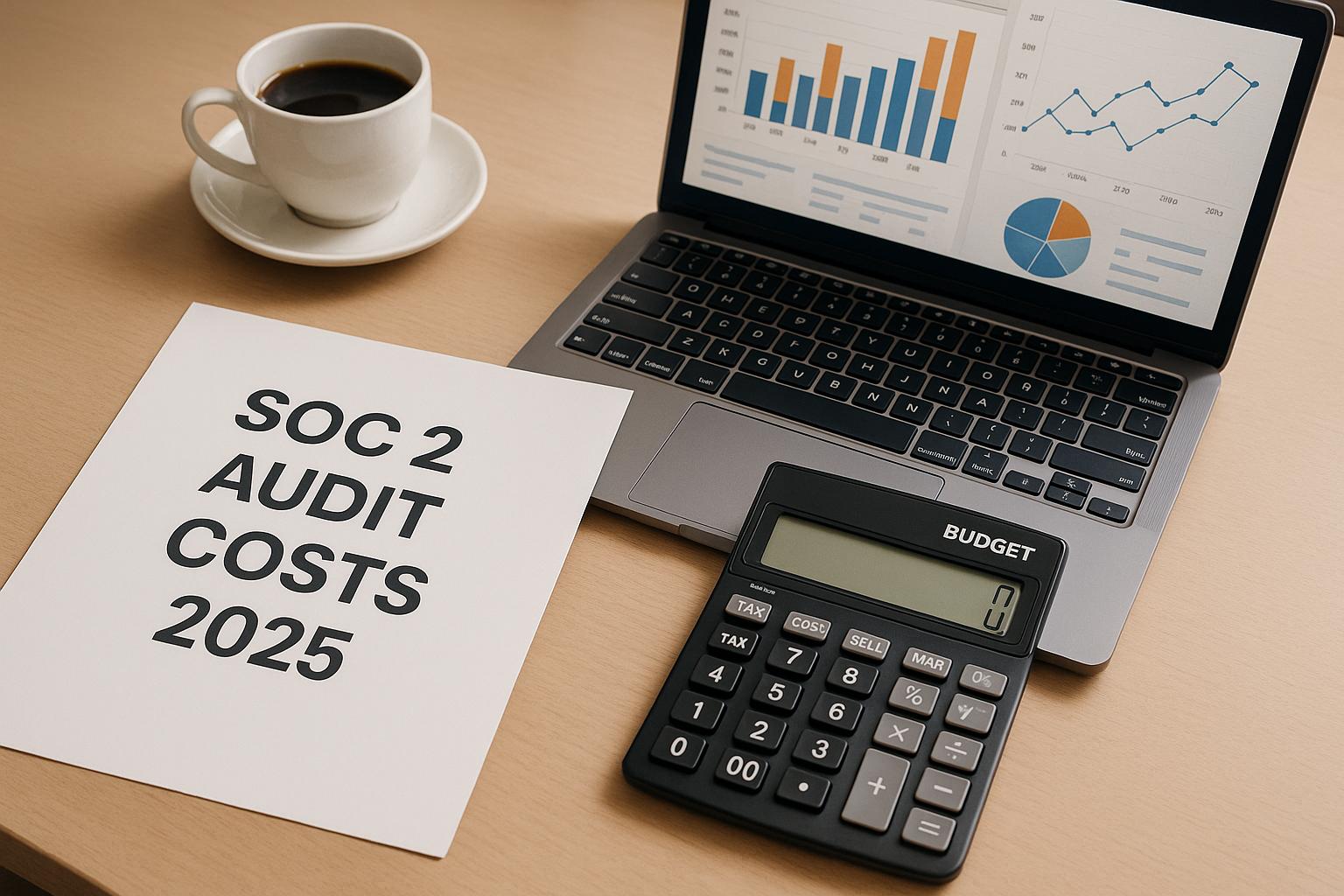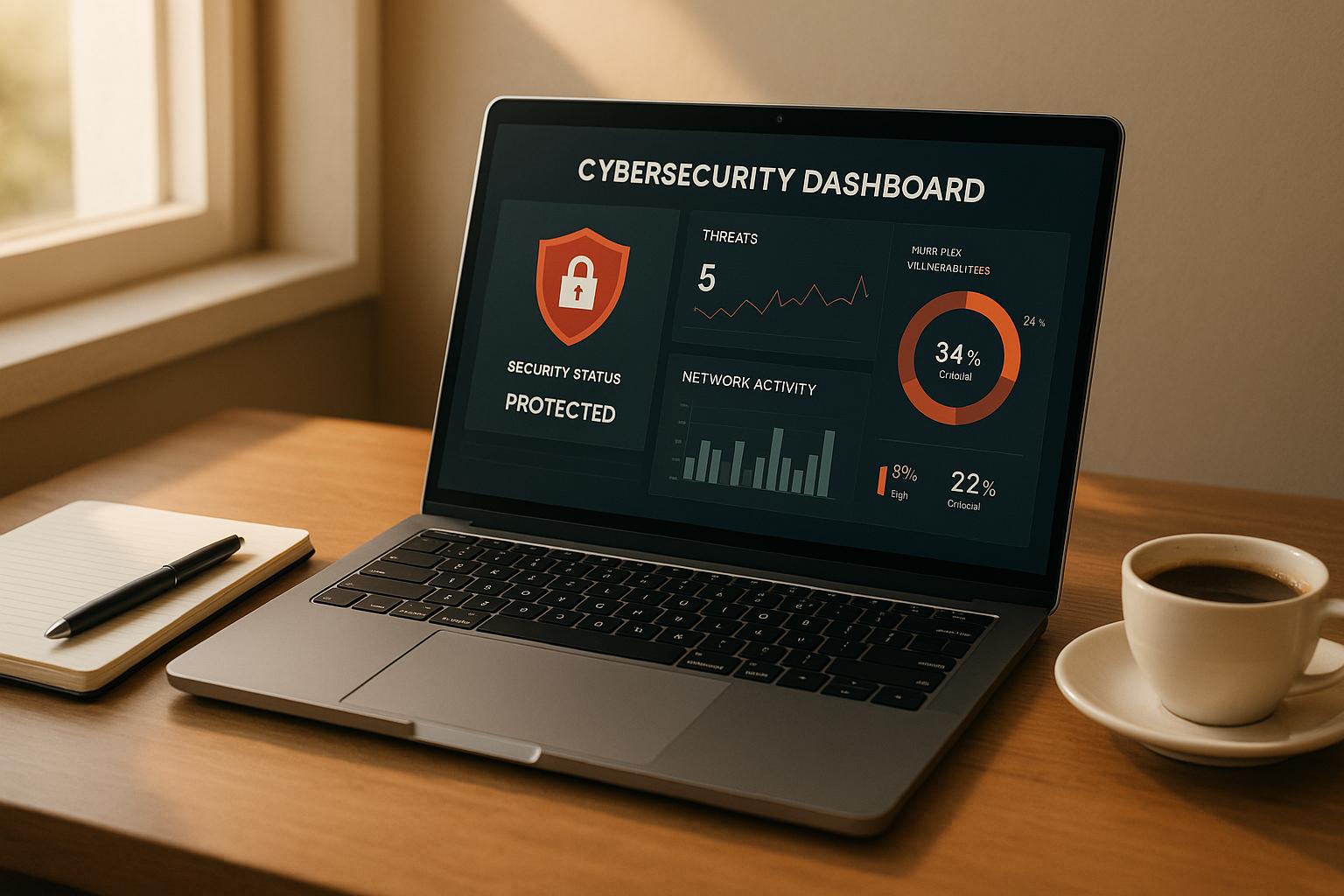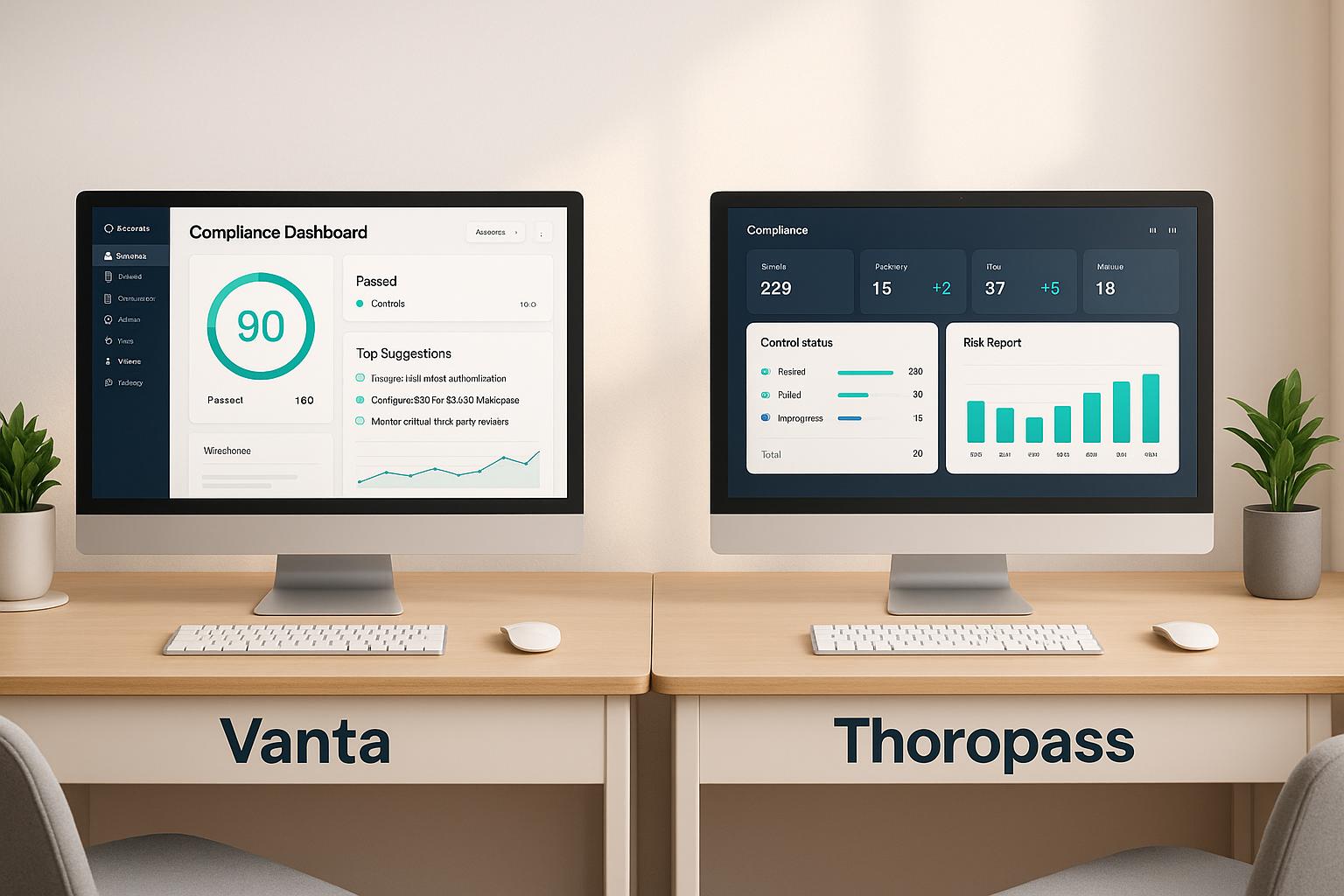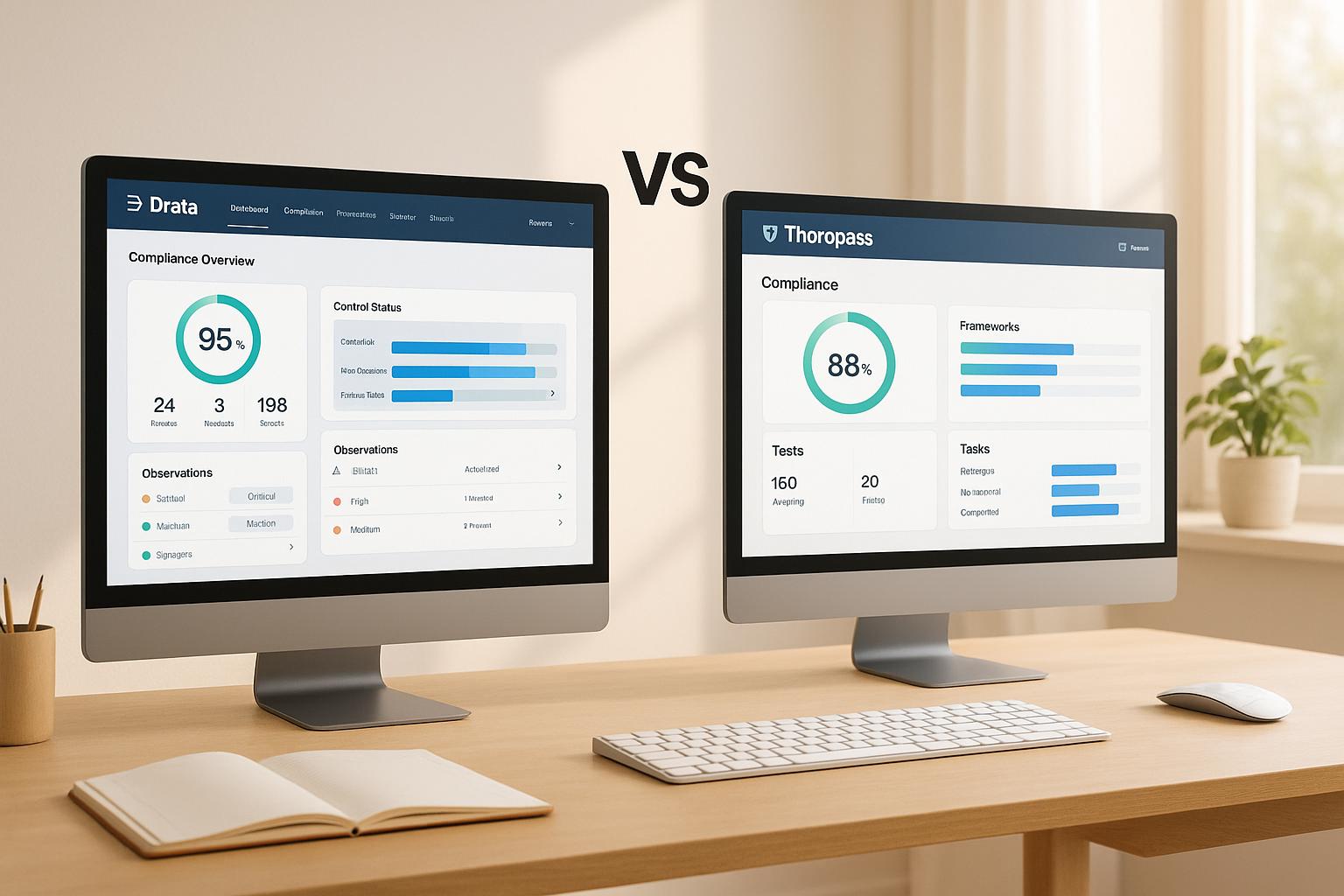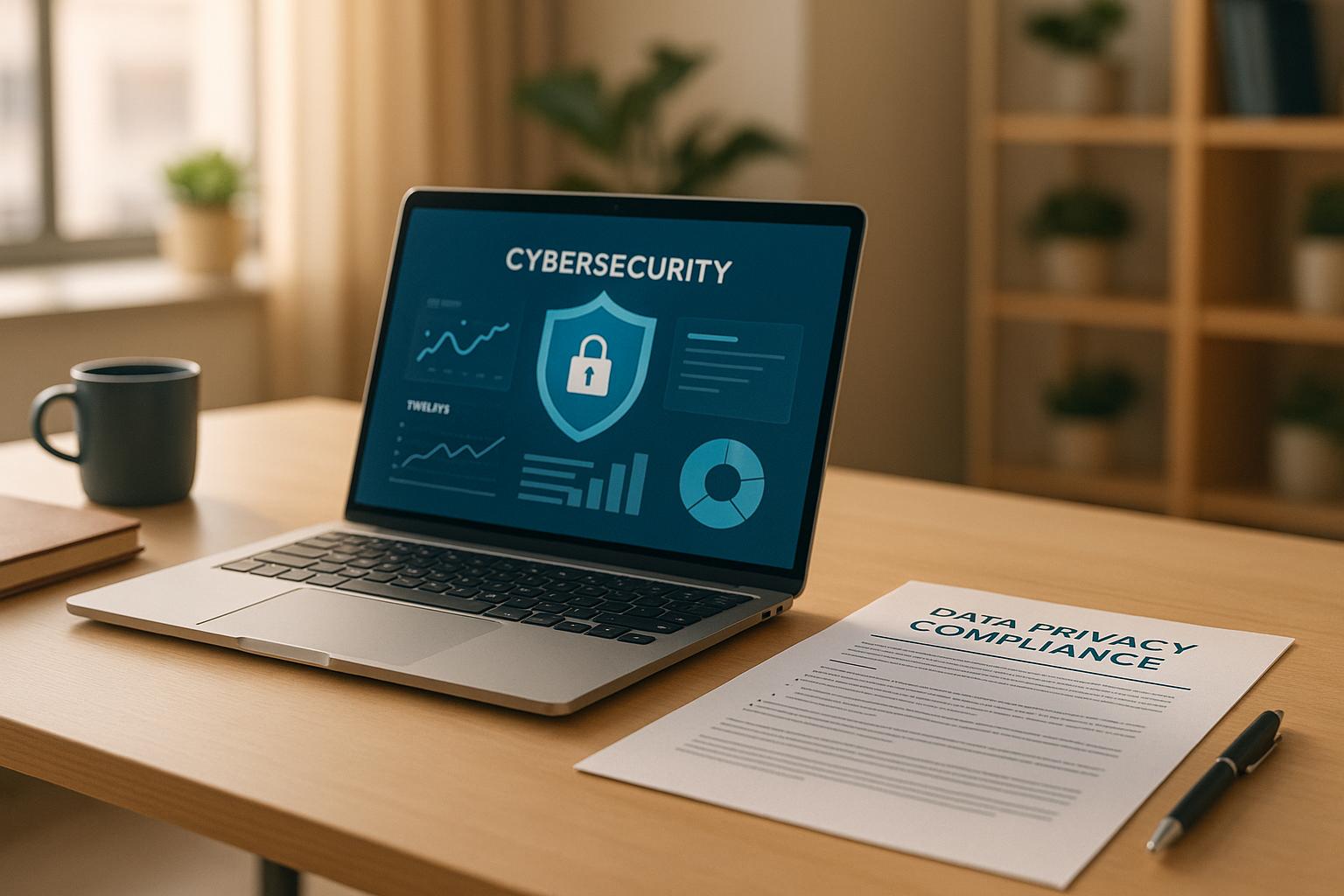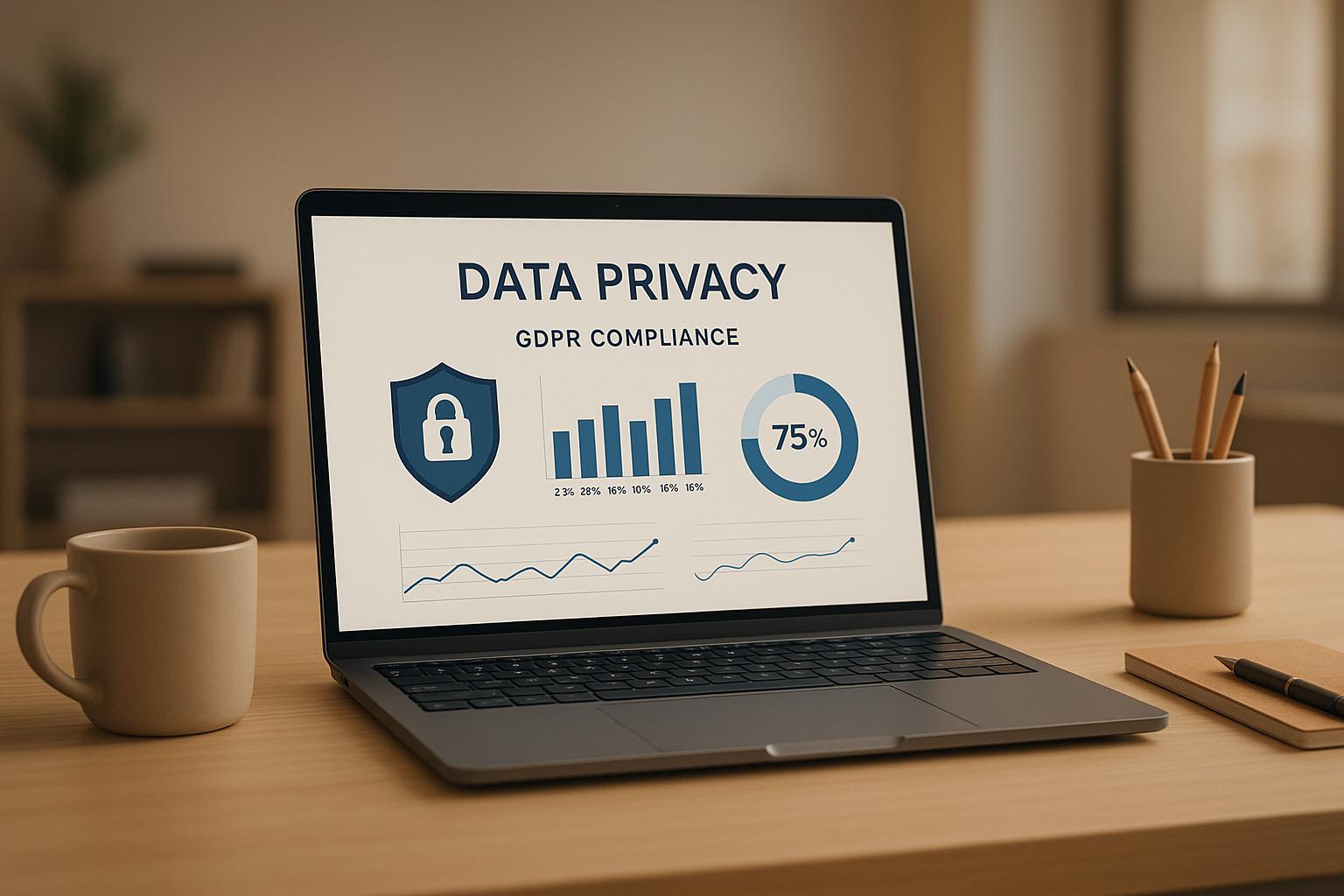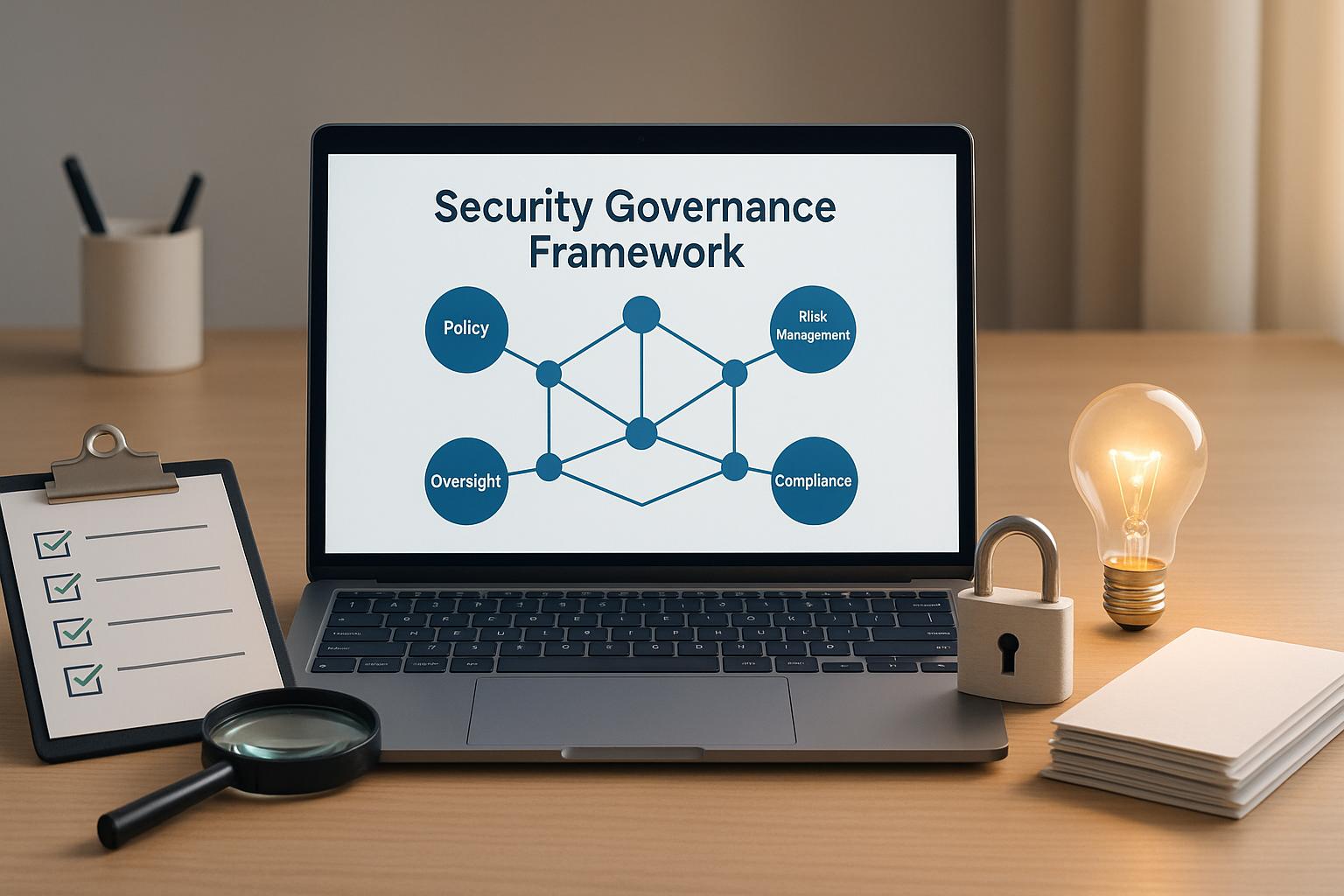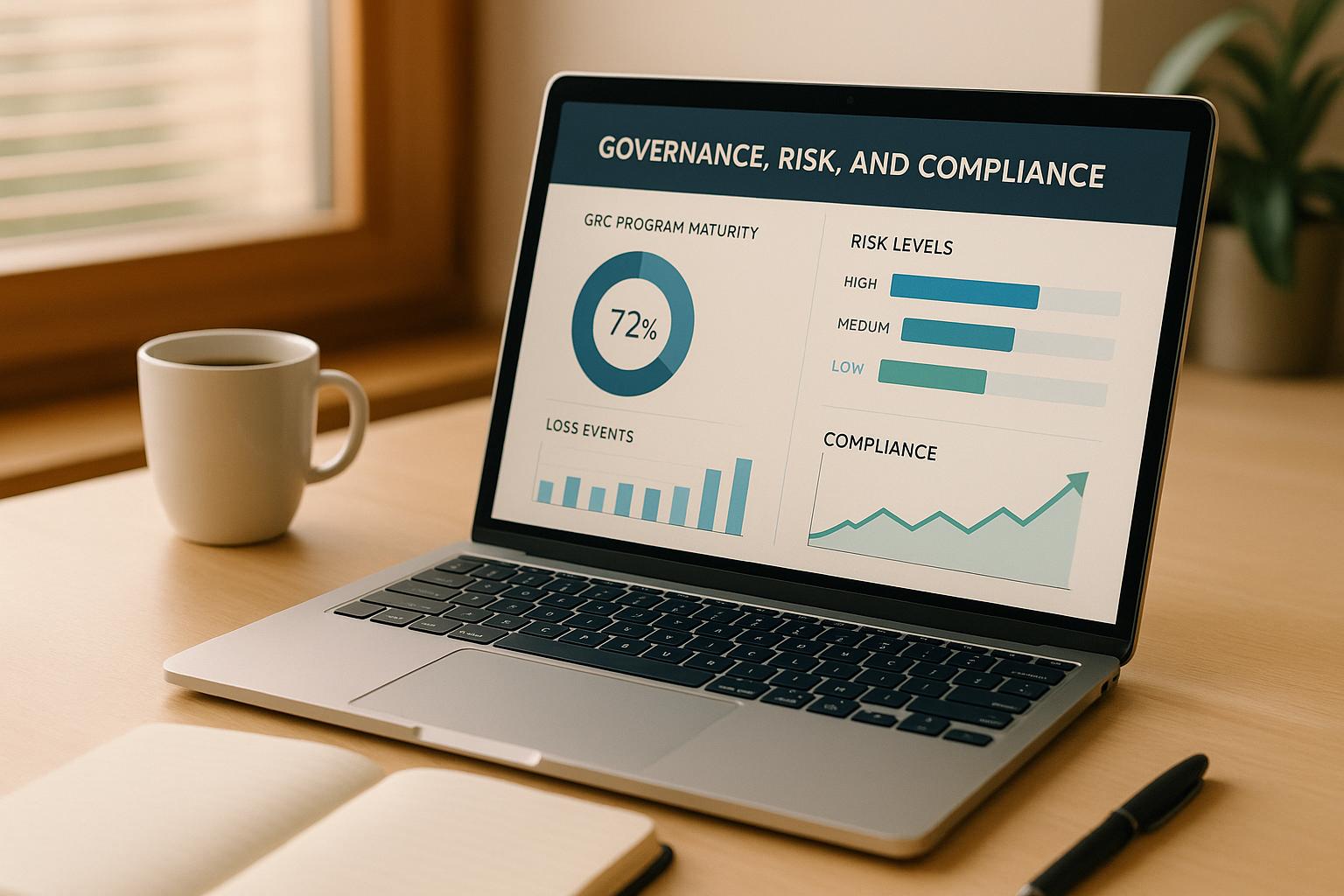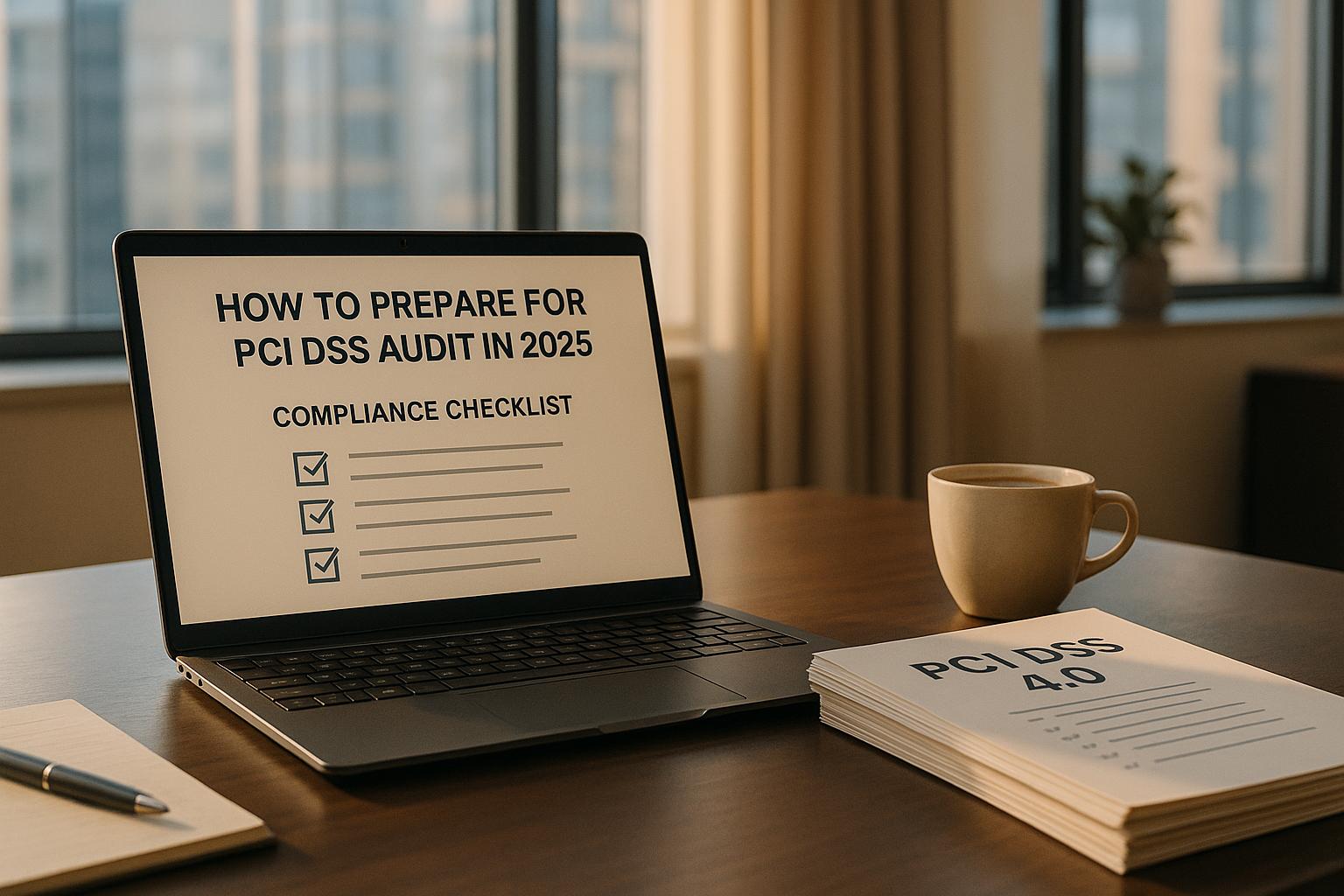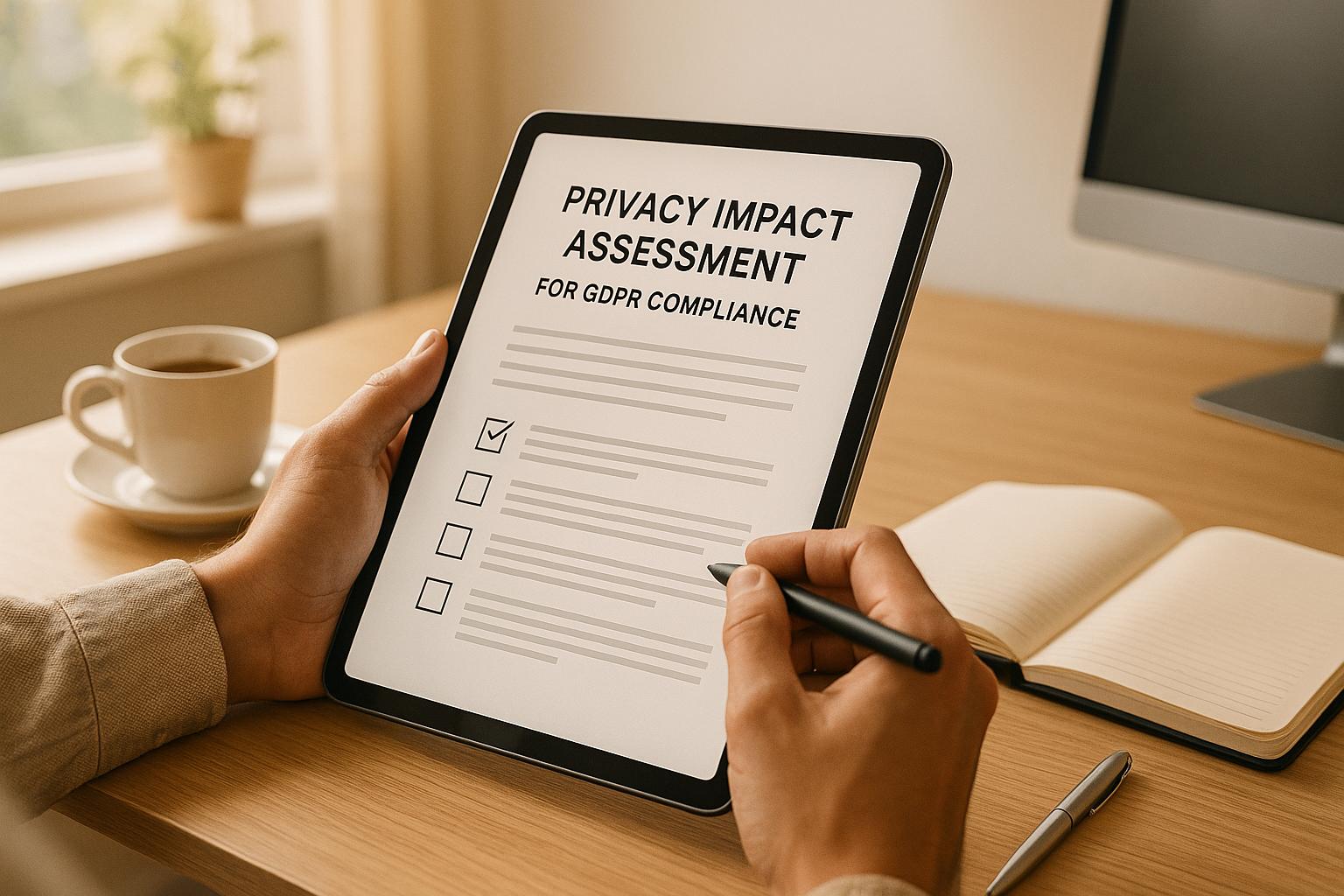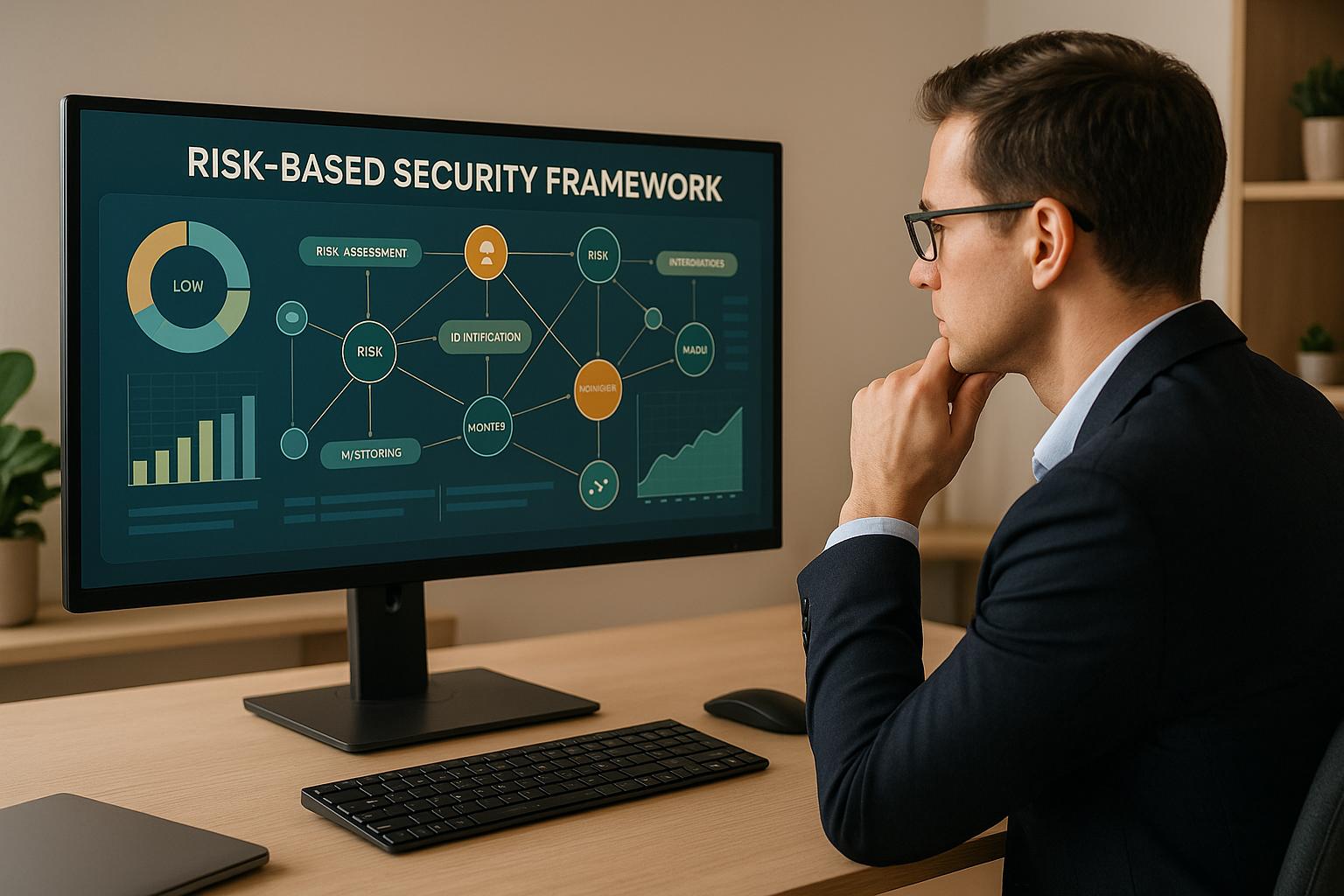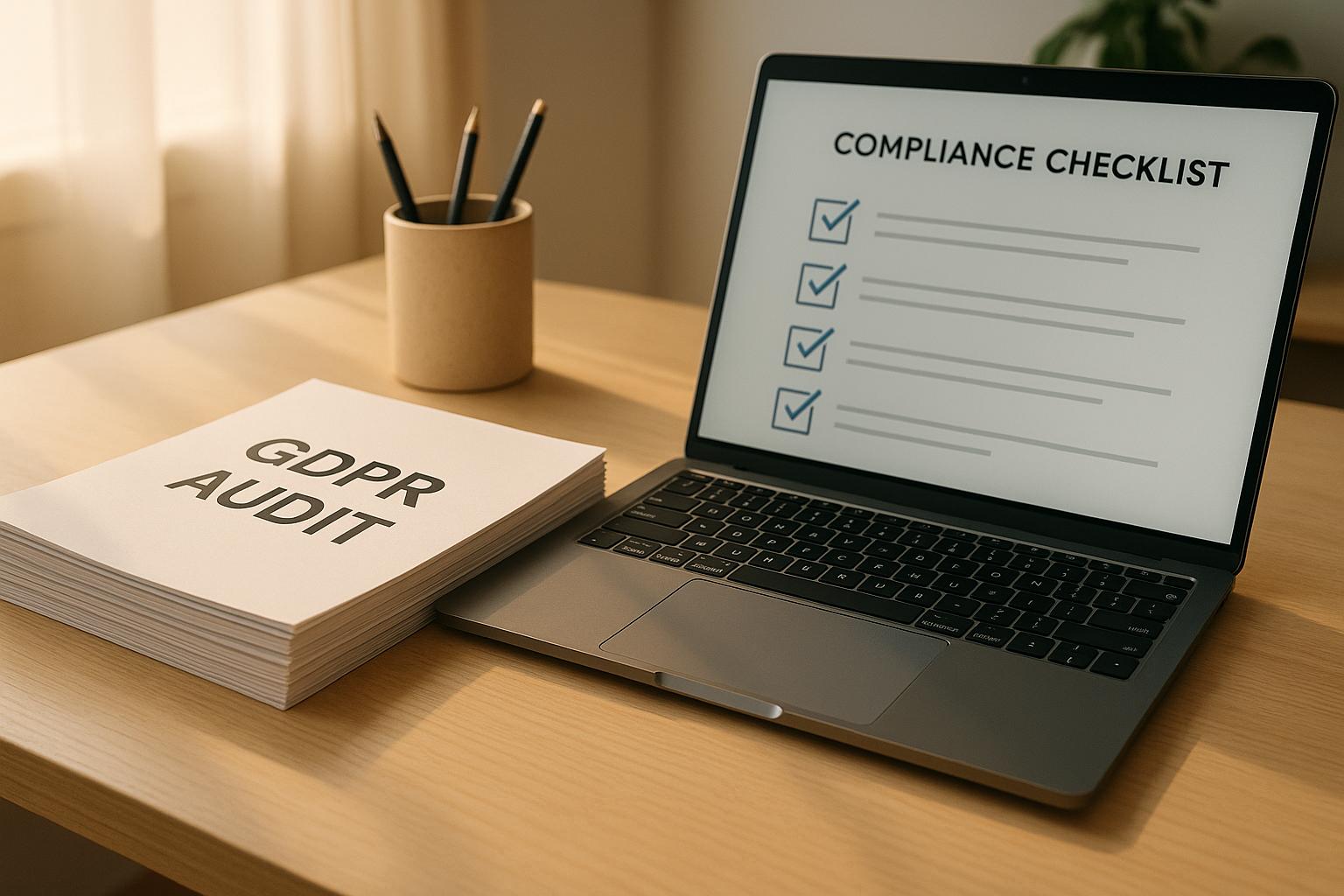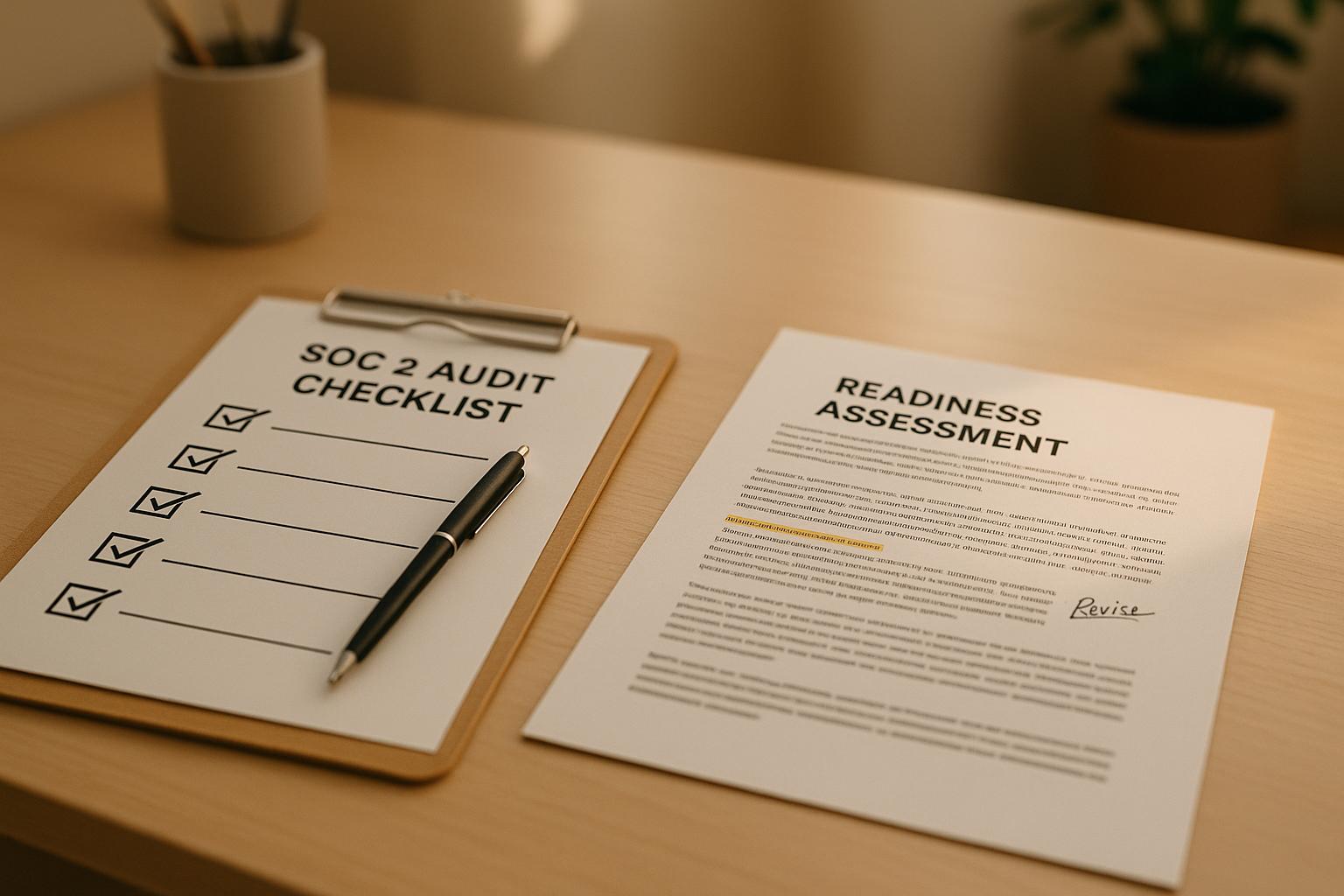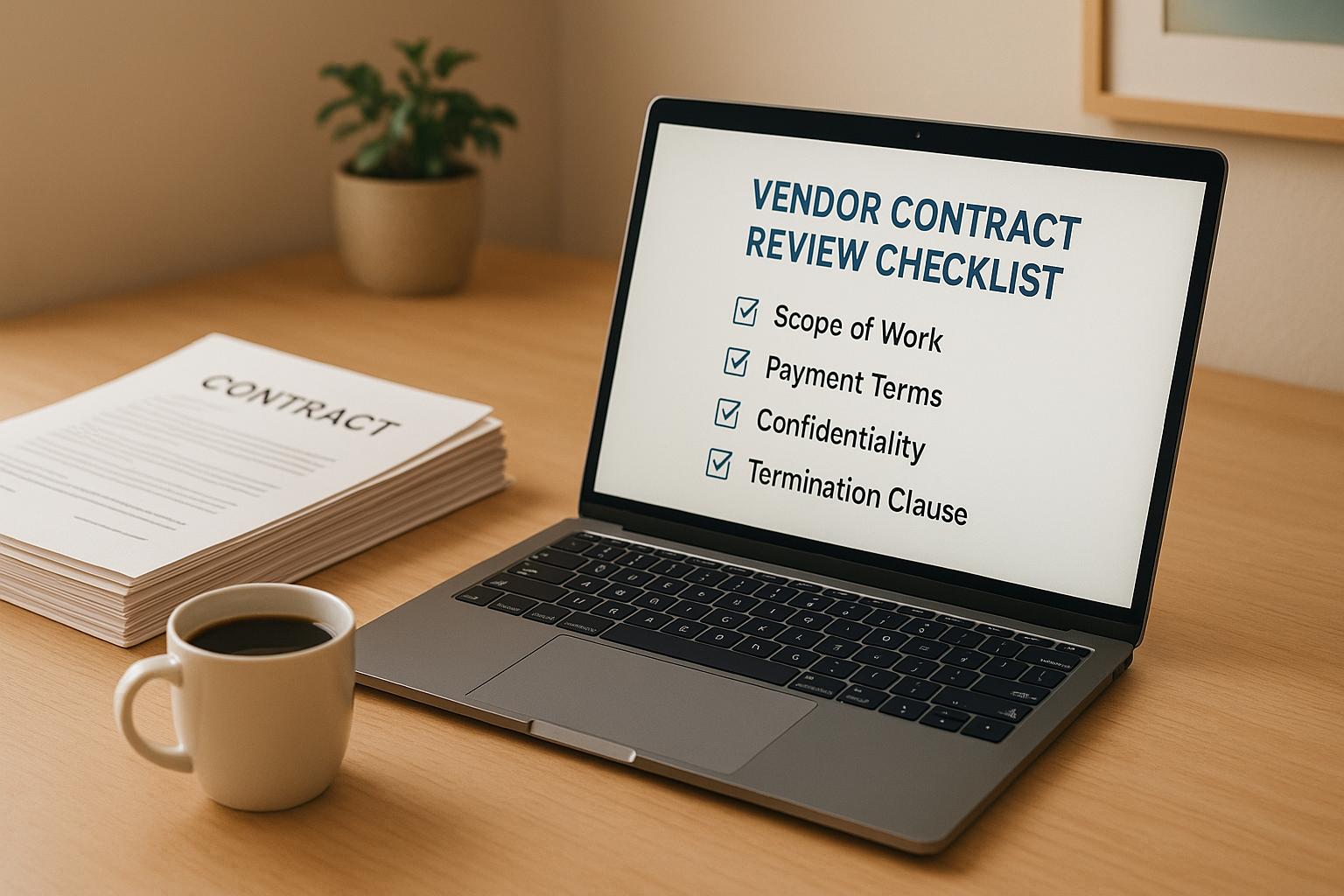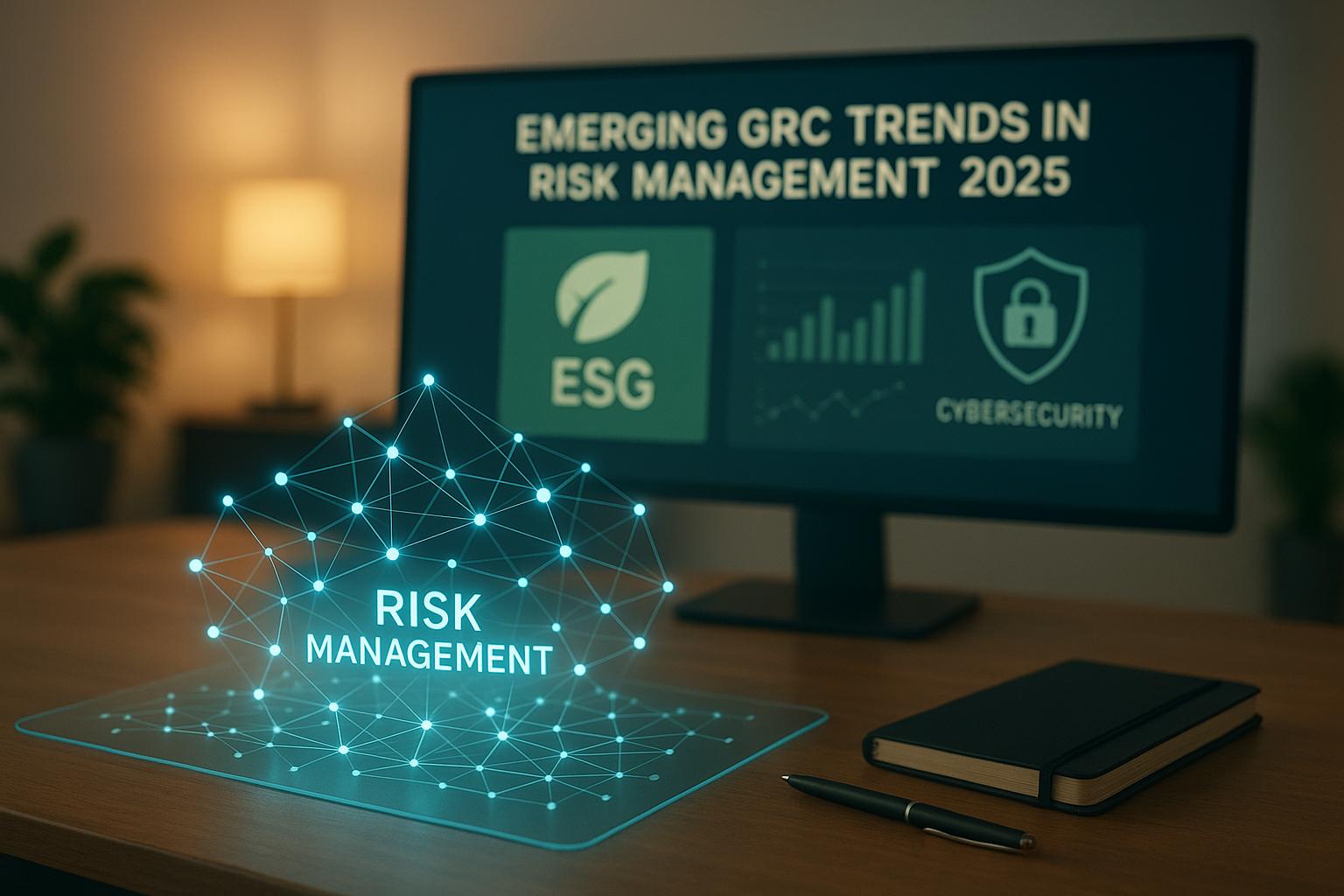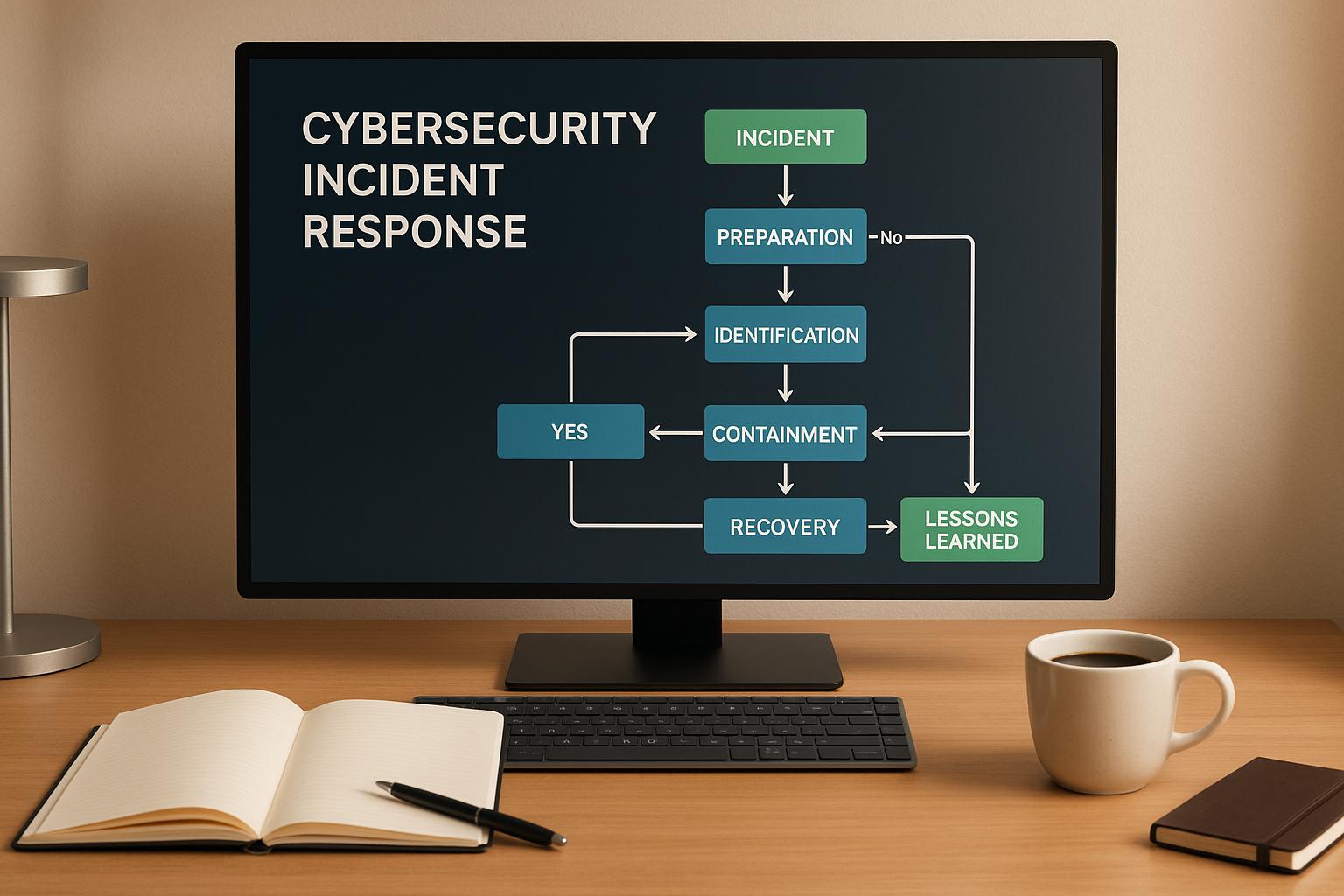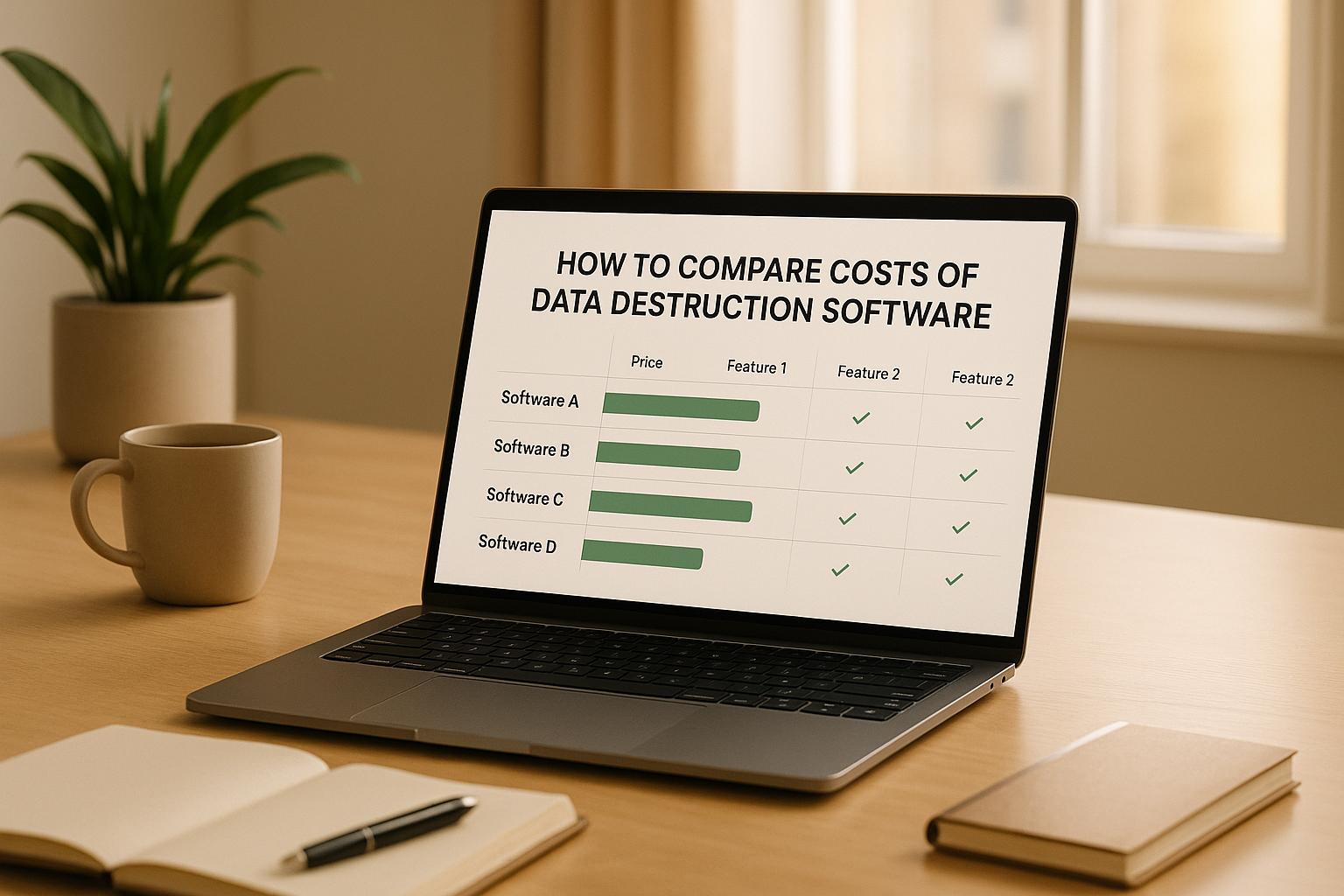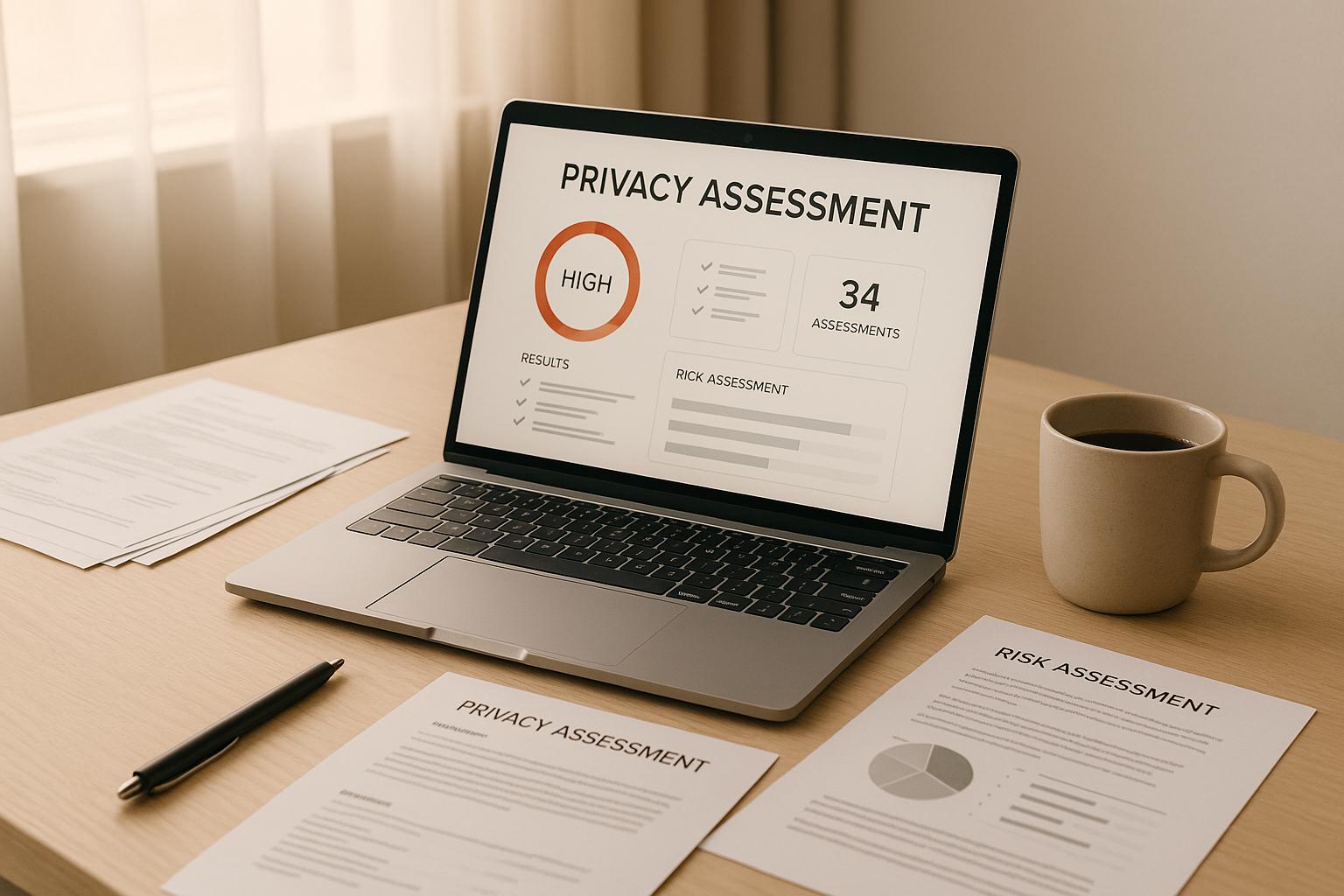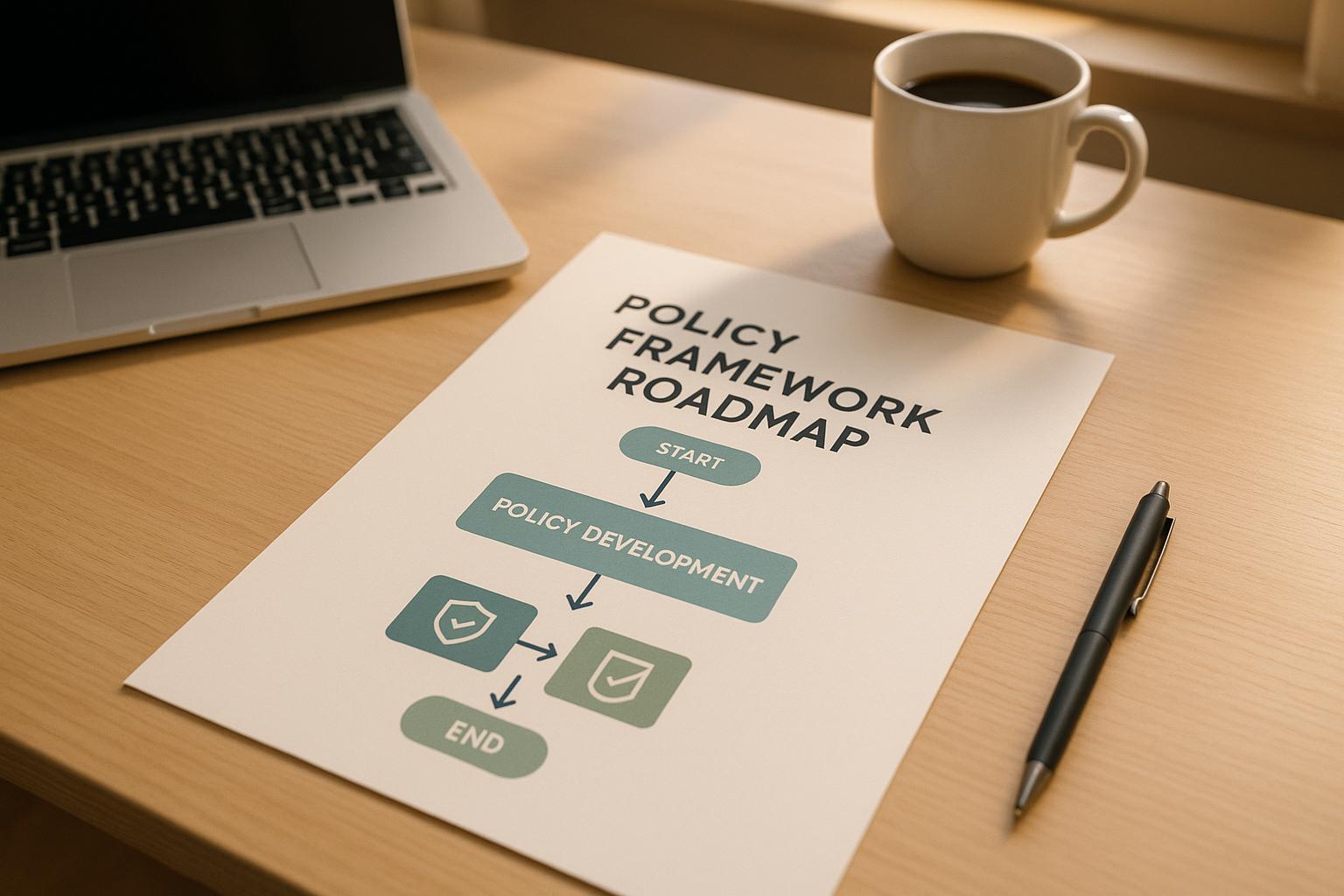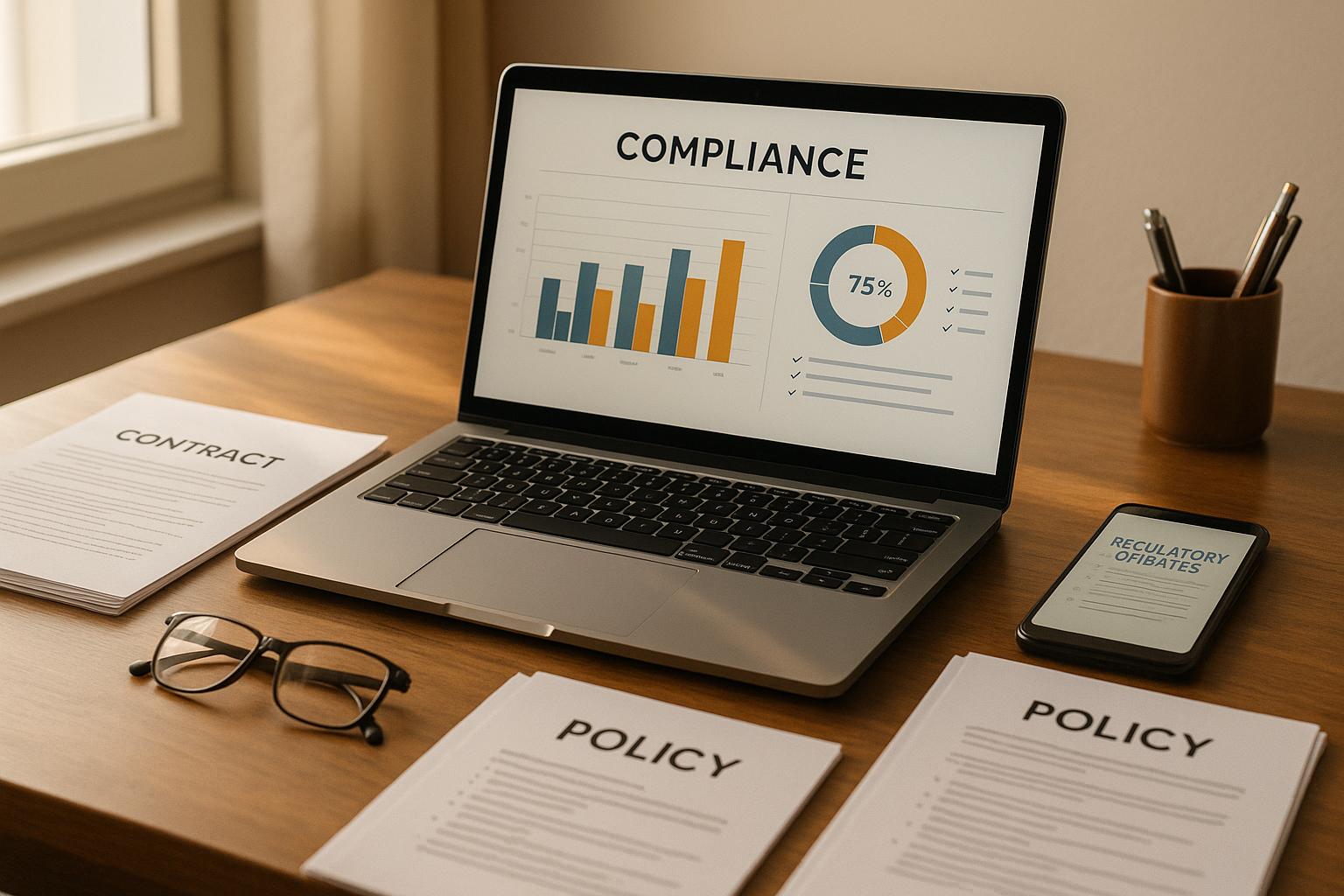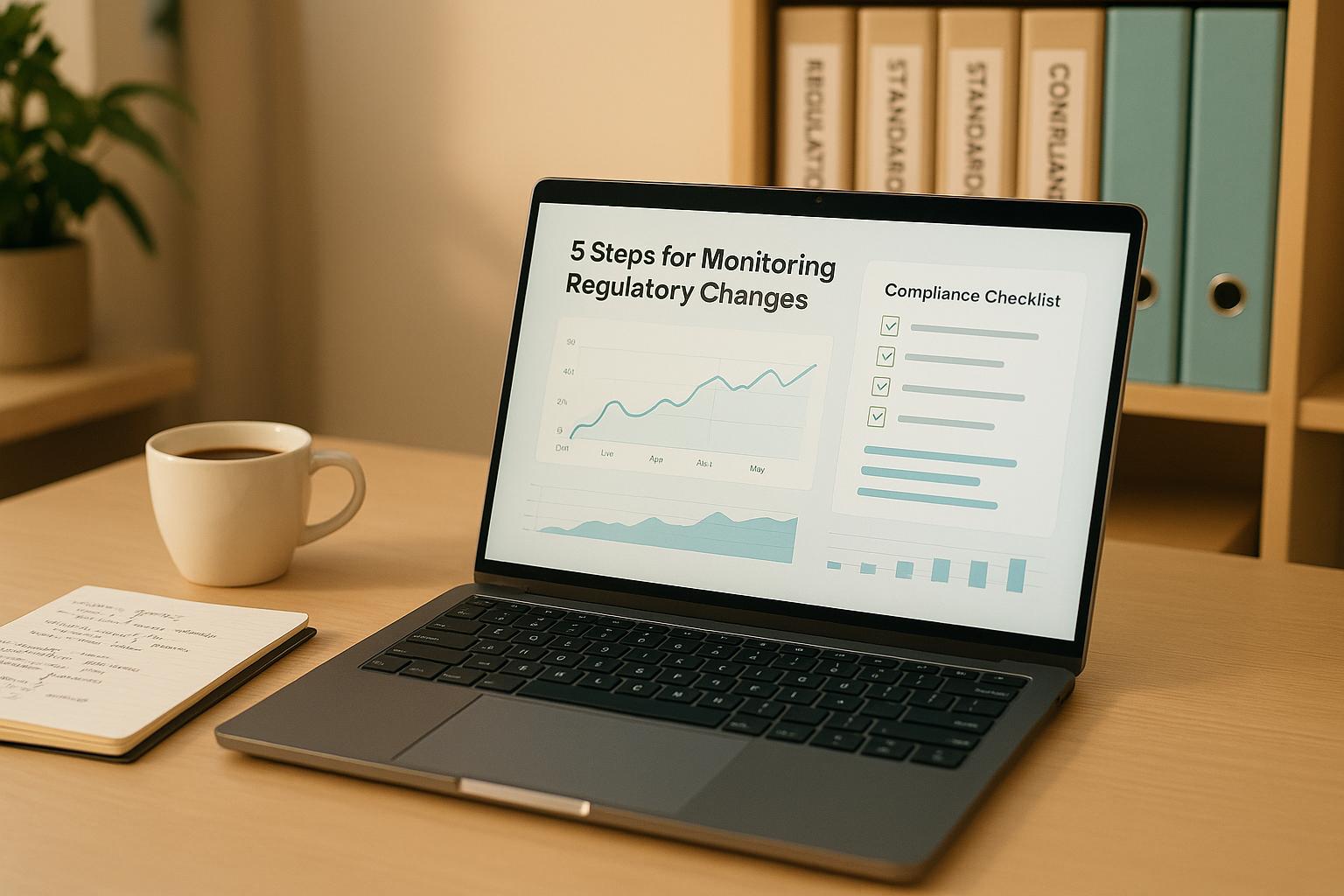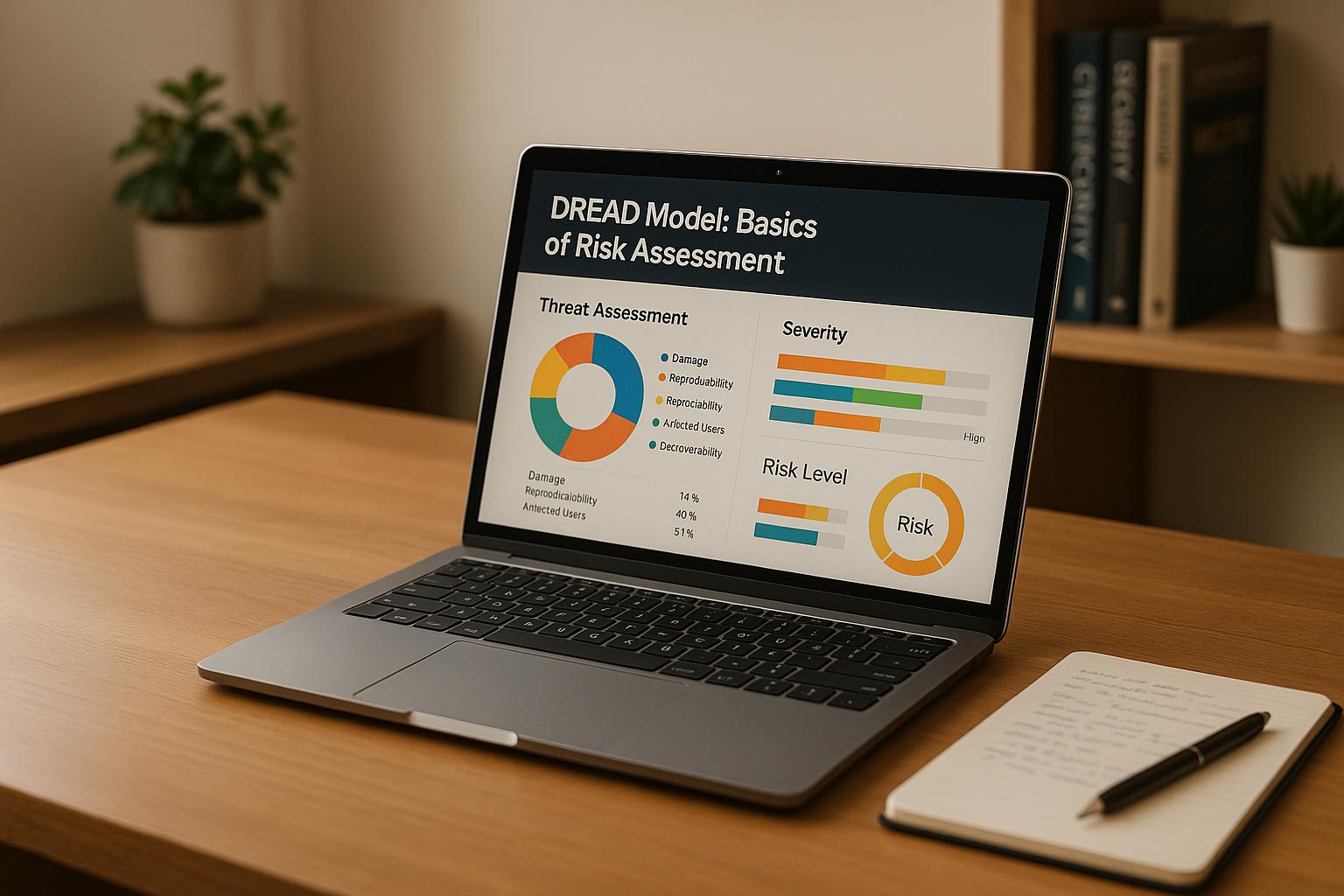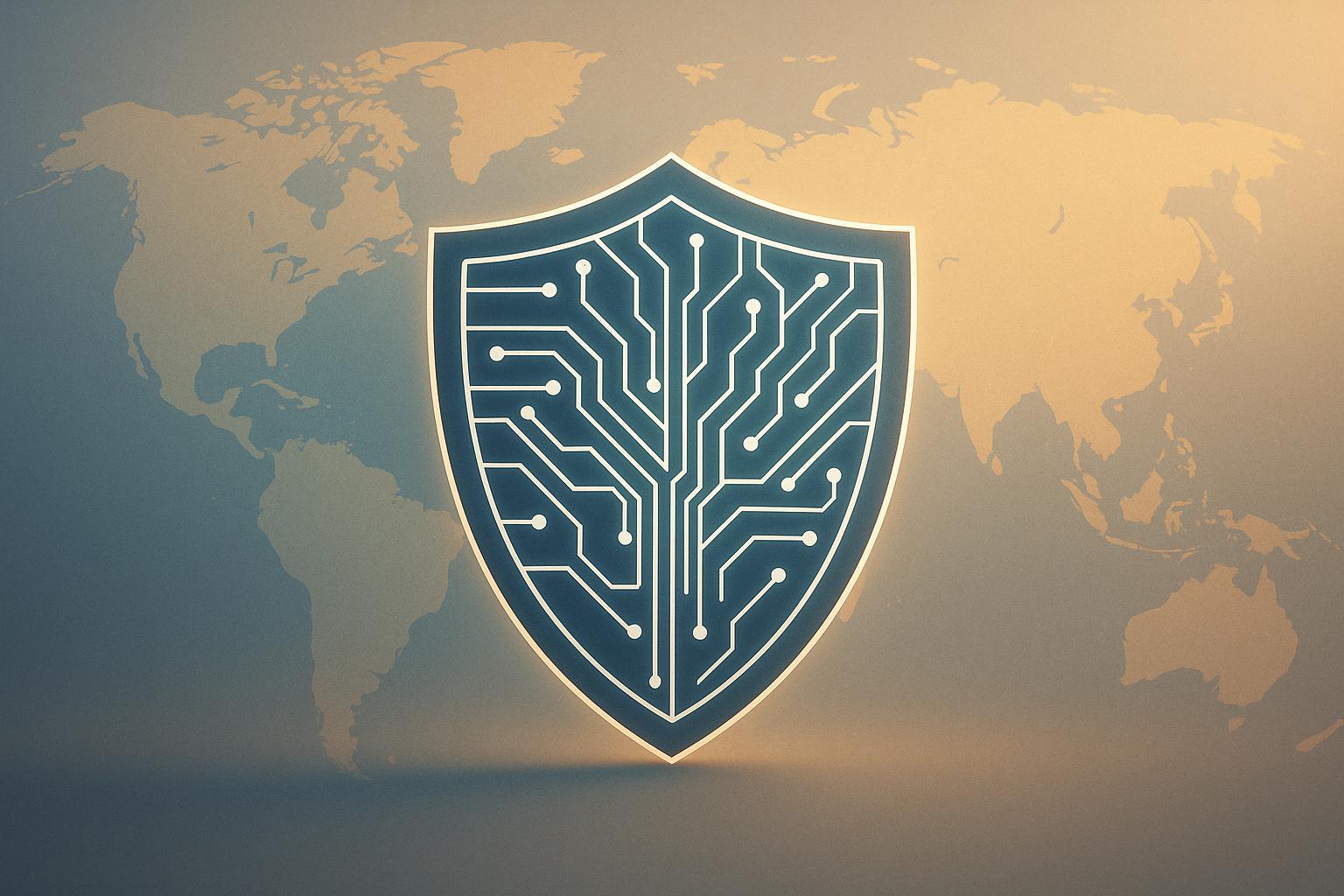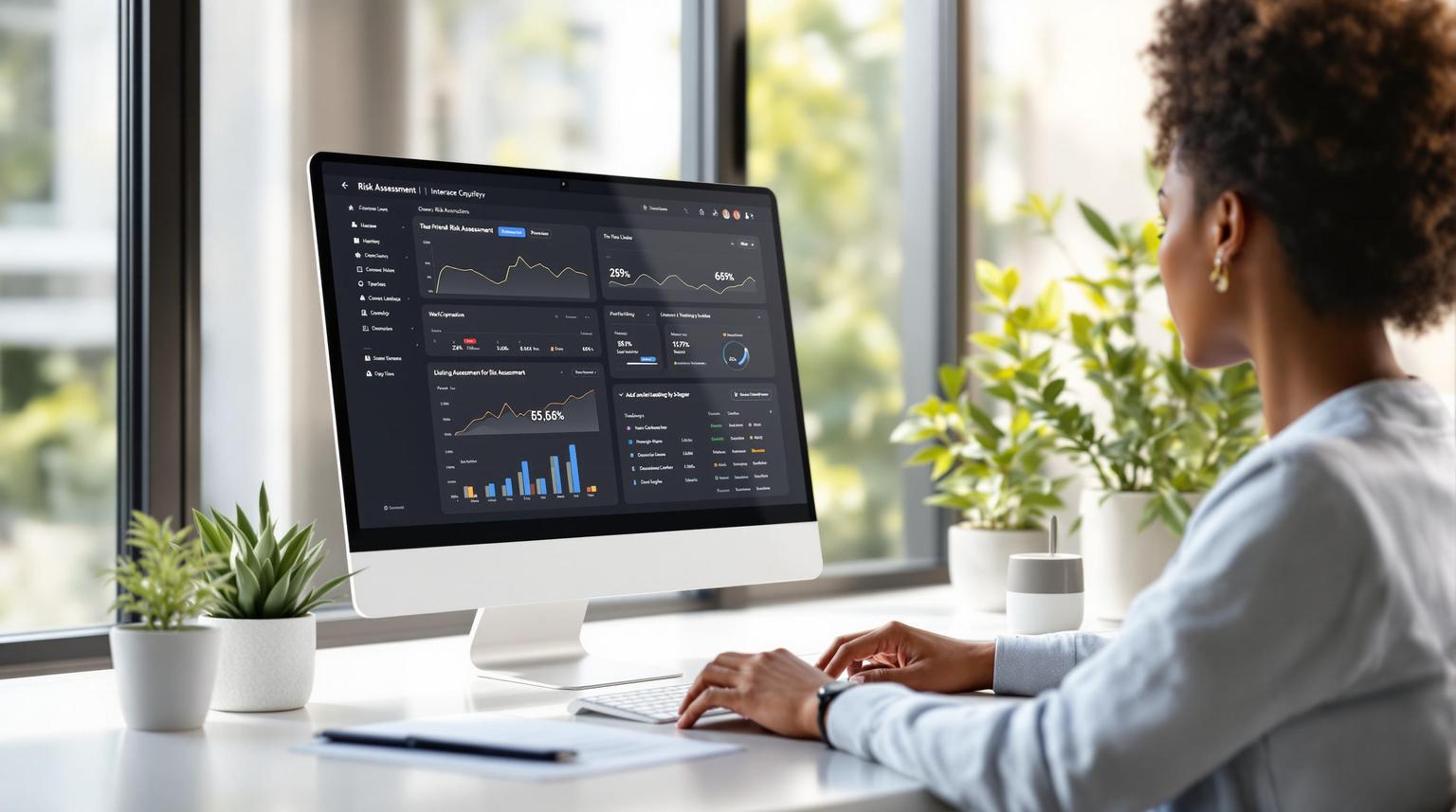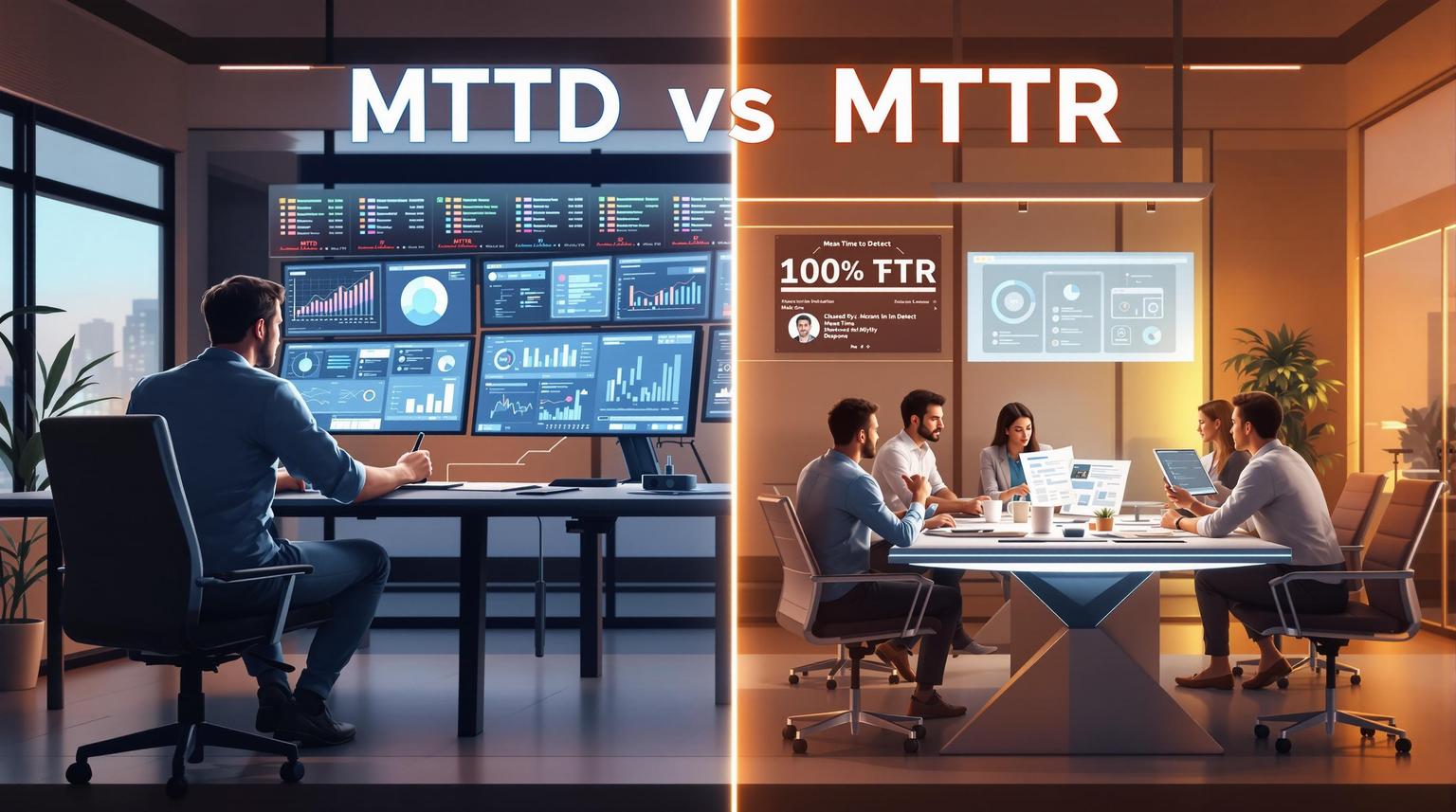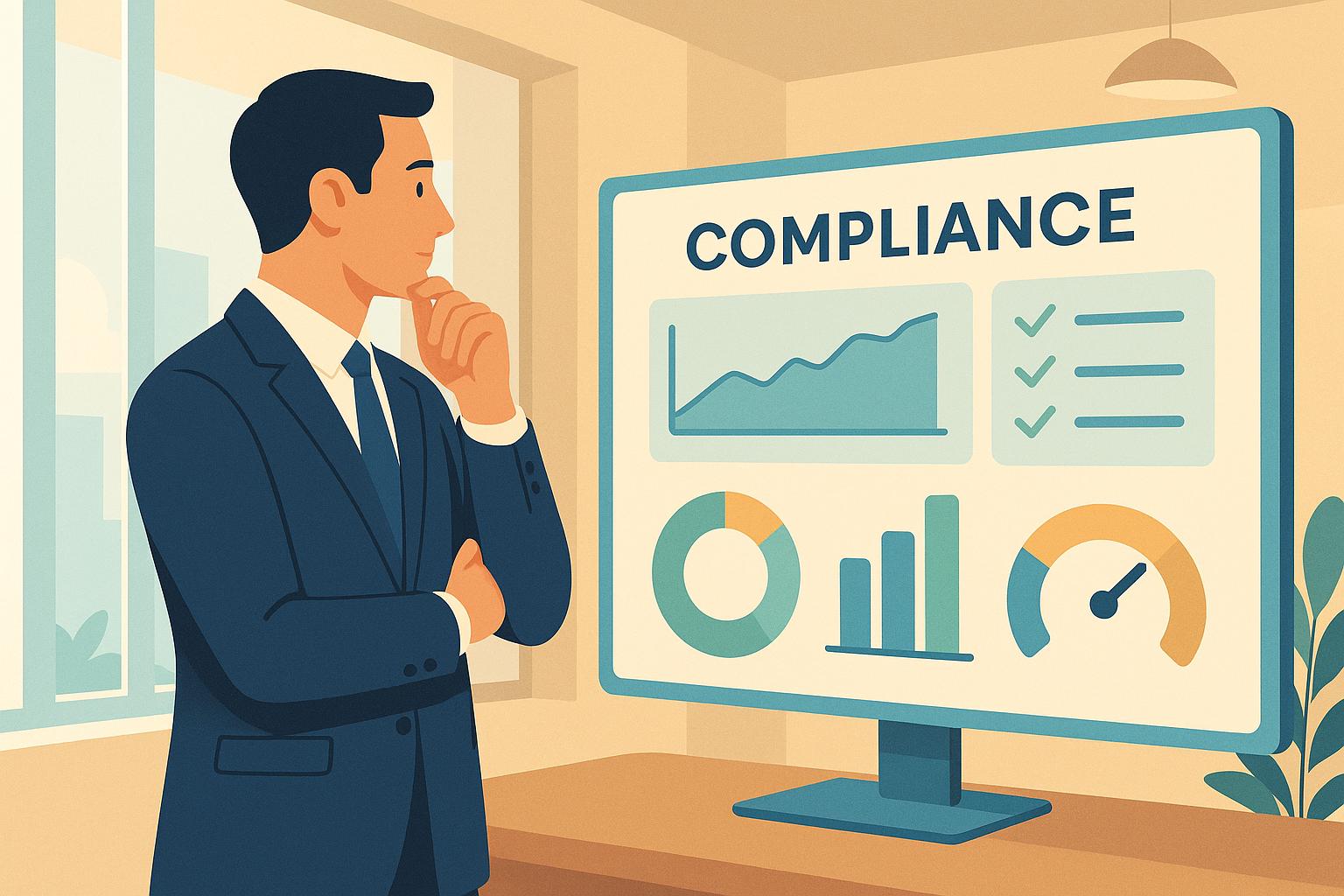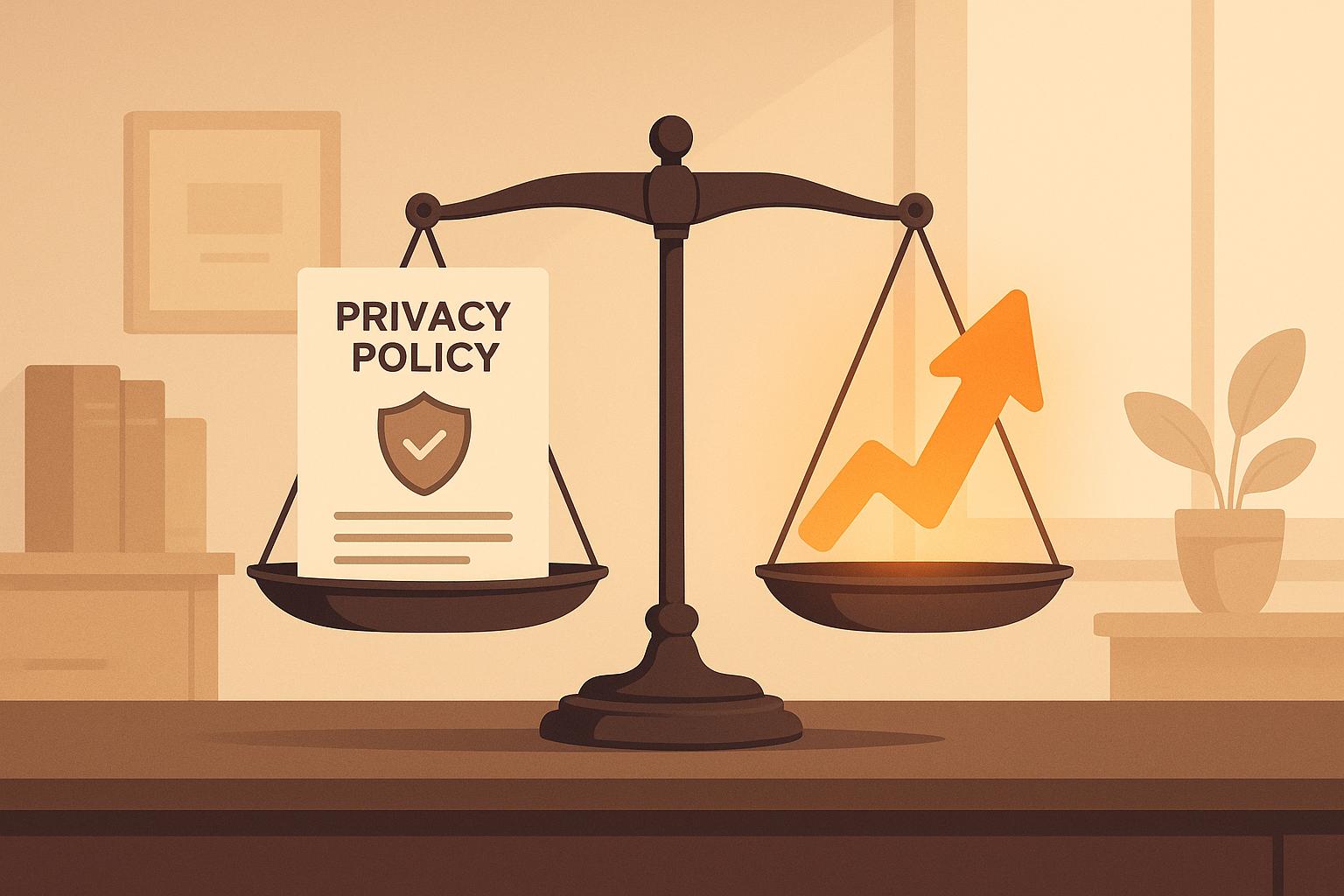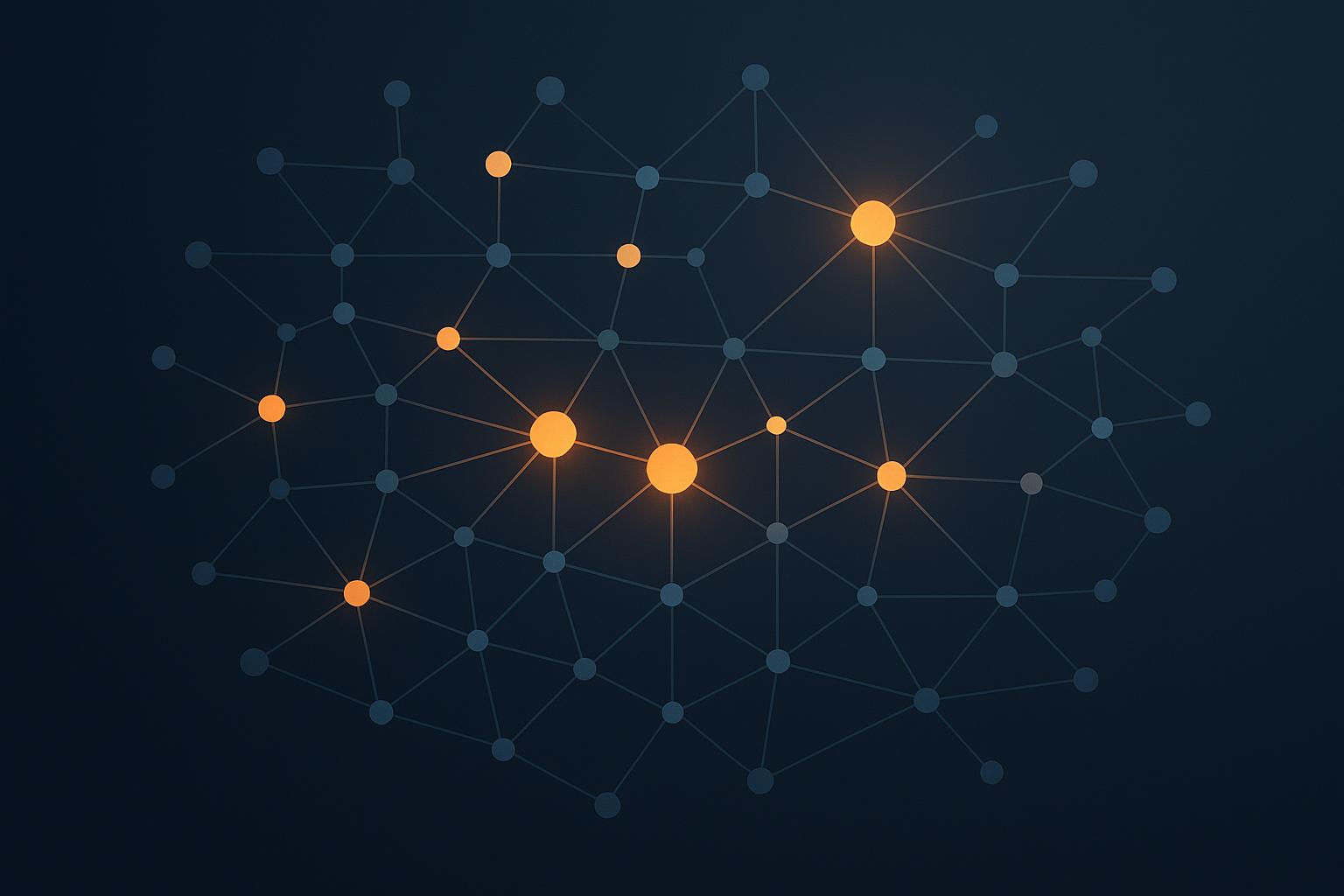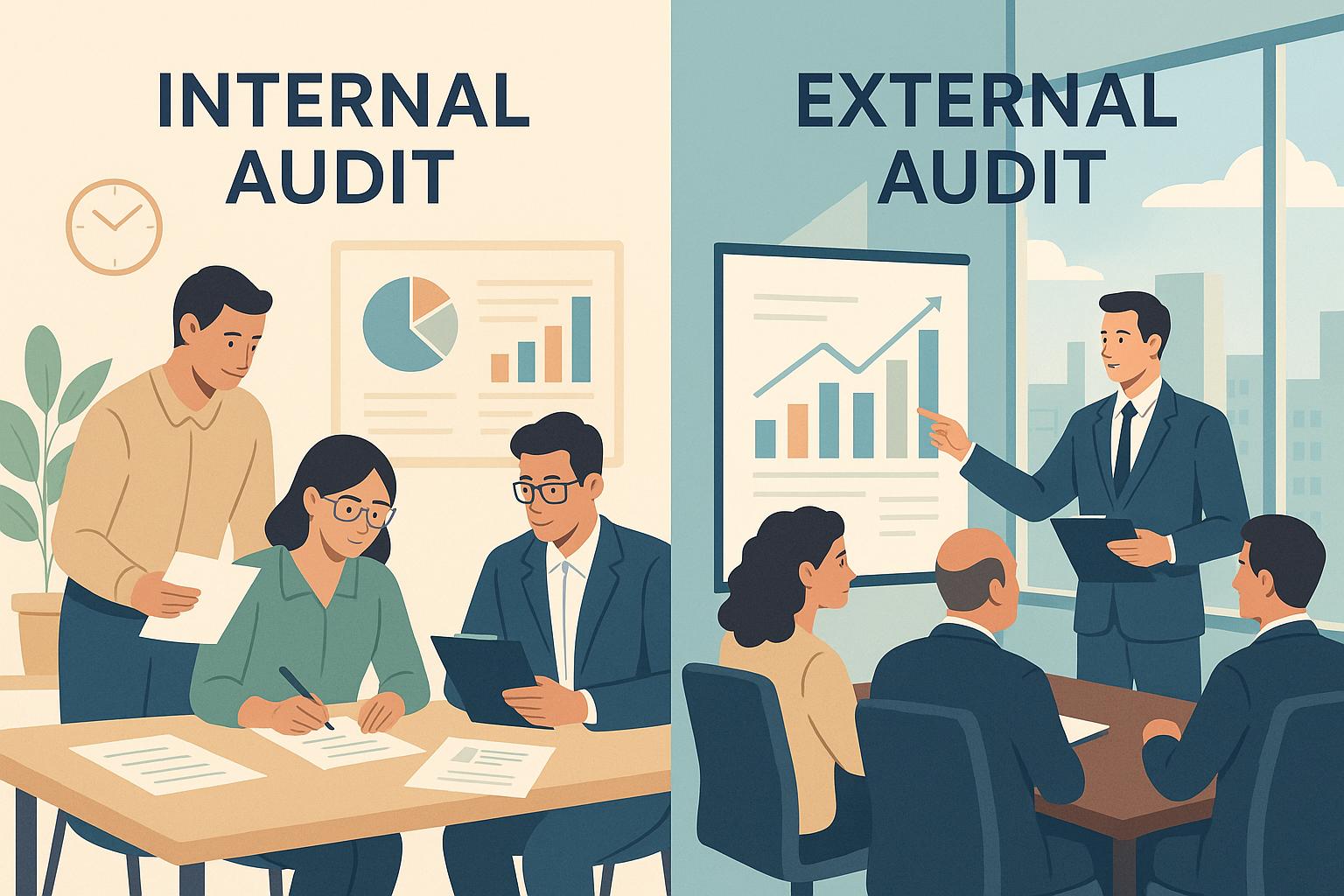
AI is transforming compliance automation by addressing the challenges of managing complex regulations and reducing operational inefficiencies. Here's what you need to know:
- Regulatory Overload: Companies face an average of 234 daily regulatory alerts, a 25× increase compared to a decade ago.
- Cost & Time Savings: AI can cut compliance costs by up to 40% and reduce audit preparation times by 80%.
- Efficiency Gains: 62% of organizations report improved compliance processes, with some reducing costs by 50%.
- Real-Time Monitoring: AI tools identify risks, reduce false positives, and prevent violations before they escalate.
- 2025 Trends: Over 50% of large enterprises are expected to use AI for continuous compliance monitoring this year.
AI-powered compliance tools simplify processes like audits, risk assessments, and regulatory monitoring. They also enhance accuracy, detect risks earlier, and streamline third-party vendor oversight. As regulatory demands grow, AI is becoming indispensable for businesses aiming to stay compliant while reducing costs and improving operational effectiveness.
This is the Compliance Automation Revolution | CSA AI Summit Q1 2025
Key Trends in AI-Driven Compliance Automation
AI is reshaping compliance automation, revolutionizing how organizations manage regulatory requirements. Three key trends are driving this transformation, offering faster, more accurate, and cost-effective solutions compared to traditional manual processes.
Automation and Speed
Compliance operations today demand speed, and AI-powered systems are delivering. These tools streamline regulatory processes, audits, and compliance alerts with advanced technologies like natural language processing (NLP), machine learning, and robotic process automation (RPA). For instance, generative AI can process cases up to 70% faster by categorizing alerts and offering risk-based recommendations. Real-time monitoring ensures continuous evaluation of transactions, security controls, and regulations, catching violations before they escalate.
AI is also automating complex tasks like risk assessments, transaction monitoring, and the creation of Suspicious Activity Reports (SARs). Automating SARs alone can cut documentation time by as much as 70%. This efficiency allows compliance teams to shift their focus to strategic decision-making. Additionally, AI tools dynamically format reports, risk assessments, and compliance findings to meet jurisdiction-specific requirements.
Beyond speed, these systems enhance risk detection and improve overall accuracy.
Better Accuracy and Risk Detection
AI significantly improves compliance accuracy by identifying patterns and anomalies that traditional methods often miss. For example, false positives account for 95% of transaction monitoring alerts, a challenge AI addresses with continuous learning models that refine fraud detection over time.
Machine learning algorithms analyze historical data to fine-tune risk models, reducing false positives and improving the detection of genuine violations. Predictive analytics further enhance this by identifying early warning signs of financial crime, enabling faster responses to suspicious activities.
AI systems also ensure fair and accurate compliance decisions by evaluating risk models for inconsistencies and biases. Explainable AI (XAI) frameworks provide transparency, creating clear audit trails that demonstrate regulatory adherence.
Companies like Centraleyes and Compliance.ai are leveraging AI to improve risk management and regulatory monitoring. Centraleyes uses AI-powered risk registers to map risks to controls efficiently, while Compliance.ai tracks regulatory updates and aligns them with internal policies. Kount applies advanced AI to enhance fraud detection and compliance across industries.
These accuracy improvements also translate into financial savings and scalable solutions.
Cost Efficiency and Scalability
AI-driven compliance automation offers significant financial benefits. Organizations using AI report 25% faster processing times, a 30% reduction in compliance costs, and a 50% boost in operational efficiency. Considering financial institutions spend an average of $61 billion annually on compliance, the ability to cut costs by 30% and reduce time spent on regulatory tasks by up to 80% is a game changer.
AI enables businesses to scale operations without a proportional increase in compliance costs. Automated reporting generates accurate, up-to-date compliance documents faster than manual methods. Meanwhile, AI continuously monitors regulatory environments, adjusting practices as needed to reduce the costs associated with regulatory changes.
How AI Affects Regulatory and Third-Party Compliance
AI is reshaping how organizations handle regulatory compliance and manage third-party vendor oversight by automating processes and reducing the need for manual effort. As regulations grow more intricate and vendor networks expand, AI provides the tools to stay compliant while easing operational burdens.
Streamlining Regulatory Compliance
AI helps organizations keep up with ever-changing regulatory standards by automating compliance monitoring and maintaining accurate records across frameworks like SOC2, HIPAA, and GDPR. This automation simplifies the challenge of navigating complex regulations.
"AI compliance refers to companies' adherence to legal, ethical, and technical standards that govern the design, deployment, and use of artificial intelligence. These standards are designed to ensure that AI systems are fair, transparent, explainable, secure, and privacy-preserving."
The regulatory environment is becoming more stringent. For instance, the EU AI Act, effective August 1, 2024, imposes penalties of up to €35 million or 7% of global turnover for violations. Globally, regulatory bodies are introducing stricter laws to ensure AI is used responsibly. AI plays a critical role here by monitoring transactions in real time, identifying risks, and suggesting preventive measures. Whether it’s trade surveillance, risk assessments, or marketing compliance, AI offers continuous oversight that surpasses manual processes.
Recent developments highlight AI’s growing role in compliance. In January 2025, the FDA issued draft guidance to enhance transparency and trust in AI models used for drug and biological product development. Similarly, in April 2024, the Department of Health and Human Services (HHS) clarified that nondiscrimination principles under Section 1557 of the Affordable Care Act apply to AI tools, including clinical algorithms and predictive analytics.
To navigate these complexities, organizations should adopt AI governance frameworks. These frameworks define roles, responsibilities, and accountability throughout the AI lifecycle. Key practices include ensuring model explainability, testing for biases, documenting data sources and model decisions, and conducting regular reviews to update or retrain models as needed.
AI’s capabilities in regulatory compliance naturally extend to managing risks associated with third-party vendors.
Improving Third-Party Risk Management
AI builds on its compliance strengths by automating vendor risk assessments. Through continuous monitoring, it ensures that critical issues in third-party relationships are identified promptly. Traditional manual tracking of hundreds - or even thousands - of vendors often leaves gaps, but AI addresses this challenge.
"AI automates this process by scanning a wide range of data sources, such as financial reports, news articles, social media, and regulatory filings, delivering real-time third-party risk insights. Through Natural Language Processing (NLP), AI uncovers risks like reputational damage or hidden compliance issues that would otherwise go unnoticed, enabling businesses to act proactively instead of reactively." – Michael Rasmussen, GRC Analyst & Pundit at GRC 20/20 Research, LLC
The use of automated third-party risk management is growing rapidly. According to PWC's Global Compliance Survey 2025, 61% of respondents already employ automation or third-party risk management (TPRM) solutions to assess vendor risks. Additionally, Moody’s research indicates that 68% of organizations expect AI to significantly transform compliance management within the next three years.
AI can extract critical details, identify gaps, and assign risk scores from security questionnaires, audit reports, certifications, and public disclosures. This speeds up vendor onboarding while improving accuracy compared to manual reviews. AI-powered assessments also help organizations stay aligned with standards like ISO 27005 and NIST 800-30.
By continuously scanning diverse data sources, AI can detect control lapses and potential compliance gaps. It evaluates control performance, vulnerability data, vendor risk profiles, and regulatory updates to generate real-time risk scores. These insights allow organizations to monitor third-party compliance on issues ranging from data privacy to environmental practices.
"AI has proven to be a game changer in this arena." – Kapish Vanvaria, EY Global Risk Consulting Leader
To strengthen third-party compliance, organizations should refine their risk-tiering frameworks and increase AI-specific evaluations during assessments. It’s also essential to review data usage policies and conduct thorough AI-focused due diligence with ongoing monitoring. As regulations evolve, maintaining effective oversight of third-party compliance becomes even more critical.
A recent example of enforcement risks came with the FTC's Operation AI Comply in late 2024. This initiative targeted deceptive AI marketing practices, including actions against companies like DoNotPay for false claims about AI-powered legal services. This underscores the importance of ensuring accurate and thorough compliance oversight in all third-party relationships involving AI technologies.
sbb-itb-ec1727d
Using AI for Cybersecurity and Compliance Integration
The integration of AI into compliance and cybersecurity is reshaping how organizations approach operational resilience. By combining AI-driven tools with strong governance practices, businesses can enhance their cybersecurity defenses while streamlining compliance efforts. As AI becomes a cornerstone of modern operations, aligning cybersecurity measures with automated compliance solutions is essential to meet regulatory demands and counter evolving threats.
AI-Powered Tools for Compliance
AI-based platforms are revolutionizing compliance management by automating complex processes and delivering real-time insights. These tools leverage machine learning to identify anomalies, predict risks, and simplify compliance tasks, reducing manual work while improving accuracy.
Modern AI solutions continuously monitor data across critical systems, providing organizations with up-to-the-minute compliance insights. This real-time visibility not only keeps businesses informed about their compliance status but also automates evidence collection, speeding up remediation efforts.
For instance, Calendly's information security team has dramatically reduced audit preparation time - from 60–70 hours to just three - by using Drata's platform. Such examples highlight how AI tools can transform compliance processes.
Platforms like Cycore Secure offer advanced GRC (Governance, Risk, and Compliance) tool administration services, utilizing AI to manage compliance tasks across multiple frameworks. Their software supports tools like Drata, Vanta, Secureframe, and Thoropass, helping organizations prepare for audits while reducing the workload on internal teams.
AI tools also handle documentation, update regulations in real-time, and interpret policies through natural language processing. These features ensure organizations stay aligned with changing regulations while maintaining compliance with standards like SOC 2, HIPAA, and ISO 27001. Beyond monitoring, these platforms detect model drift, verify compliance, and alert teams to emerging risks, enabling proactive issue resolution before they escalate into violations.
Active Monitoring and AI Governance
Proactive monitoring, powered by AI, is redefining risk management by providing continuous oversight of compliance and cybersecurity. Unlike traditional periodic assessments, active monitoring delivers ongoing visibility into compliance status and security posture.
Organizations that adopt comprehensive AI and automation save an average of $3.05 million per data breach. Additionally, those extensively using AI and automation reduce the duration of breaches by over 40%. These numbers underscore the financial and operational benefits of integrating AI into compliance and security strategies.
Formal AI governance programs are becoming increasingly critical. Gartner predicts that by 2026, 60% of organizations will have established such programs to address challenges like model drift, data privacy concerns, ethical issues, and regulatory compliance.
"The evolution of AI requires compliance leaders to be forward-thinking and proactively engage with the growing regulatory landscape to mitigate risks and maximize opportunities for innovation."
- Jan Stappers LLM
Effective governance involves automated monitoring of AI performance metrics, setting thresholds for model drift to trigger interventions, and using dashboards for ongoing visibility into AI risks. This ensures AI systems remain compliant and functional over time.
| Aspect | Traditional GRC | AI GRC |
|---|---|---|
| Learning Capability | Static systems with predictable behavior | Adaptive systems that learn and evolve |
| Transparency | Clear decision paths and logic | "Black box" algorithms with limited explainability |
| Data Dependencies | Moderate data requirements | Large-scale data needs with quality dependencies |
| Change Management | Periodic updates with testing | Continuous learning requiring ongoing monitoring |
| Risk Profile | Well-understood risks | New, emergent, and unpredictable risks |
To navigate these challenges, organizations can adopt AI incrementally. Starting with non-critical systems allows teams to develop expertise and refine governance processes before scaling AI to mission-critical compliance functions. This phased approach minimizes risks while building a foundation for broader AI integration.
Regulators around the world are rapidly developing frameworks to address AI governance, focusing on areas like data privacy, ethical use, and risk management. To keep pace, businesses should establish centralized AI governance boards to oversee security, ethics, and compliance. Additionally, creating AI incident response plans ensures quick action in the event of security breaches. This structured approach balances the benefits of AI with responsible governance and adherence to regulatory standards.
Conclusion: The Future of Compliance Automation with AI
By 2025, AI has reshaped compliance automation, moving beyond traditional rule-based systems to fully autonomous platforms that integrate seamlessly into business operations. This evolution is far more than a technical upgrade - it’s a reimagining of how companies tackle regulatory compliance, manage risks, and boost operational efficiency.
Consider this: financial institutions collectively spend an estimated $61 billion annually on compliance operations. Yet, a staggering 95% of transaction monitoring alerts are false positives. These statistics highlight the inefficiencies AI is poised to address, making compliance not only faster but also smarter.
Generative AI has leveled the playing field, offering powerful compliance tools to businesses of all sizes. Platforms like Secureframe's Comply AI suite have revolutionized processes by accelerating remediation, streamlining risk assessments, and simplifying policy creation with AI-assisted drafting and editing. Similarly, Lucinity’s AI tools help compliance teams cut investigation times, reduce false positives, and lighten manual workloads.
The shift toward proactive compliance is game-changing. According to Moody’s, 68% of organizations expect AI to have a transformational effect on compliance management within three years. Meanwhile, 72% of businesses have already integrated AI into at least one area of their operations, up from 50% in 2022. This proactive approach is redefining how businesses operate, making compliance a strategic advantage rather than a regulatory burden.
However, challenges remain. McKinsey highlights that 40% of organizations struggle with AI explainability and summarization, but only 17% are actively addressing these issues. Similarly, the Financial Stability Board reports that just 27% of financial institutions have fully implemented AI governance frameworks. These hurdles underscore the importance of transparency and accountability in AI adoption.
"This year it's all about the customer. We're on the precipice of an entirely new technology foundation, where the best of the best is available to any business. The way companies will win is by bringing that to their customers holistically." - Kate Claassen, Head of Global Internet Investment Banking at Morgan Stanley
Organizations that prioritize transparency and explainability will lead the way. Relying on opaque "black box" AI models risks backlash from regulators, customers, and even internal teams. The focus should be on seamlessly embedding AI-driven automation into existing workflows to enhance efficiency without causing disruption.
Looking ahead, success will belong to those who balance innovation with responsibility. Gartner predicts that by 2026, 60% of organizations will implement formal AI governance programs to address risks like model drift, data privacy breaches, ethical dilemmas, and regulatory violations. But this evolution is about more than compliance - it’s about building sustainable, competitive advantages through intelligent automation.
FAQs
How does AI enhance compliance accuracy and reduce false positives in monitoring transactions?
AI improves compliance accuracy by analyzing large volumes of data to differentiate between legitimate and suspicious transactions more effectively. Using machine learning, it identifies patterns and detects anomalies with greater precision, cutting down on false positives that often waste time and resources.
With this capability, compliance teams can concentrate on addressing real risks, streamlining transaction monitoring processes. This not only boosts efficiency but also helps organizations stay aligned with ever-changing regulatory demands more confidently.
What are the key advantages of using AI for compliance automation, especially in reducing costs and improving efficiency?
AI-driven compliance automation brings a host of advantages, from cutting down on tedious manual tasks to improving accuracy and speeding up regulatory processes. In fact, these tools can slash compliance costs by around 30%, all while helping businesses stay aligned with evolving standards like SOC 2, HIPAA, and GDPR.
By simplifying workflows and automating repetitive duties, AI doesn’t just save time - it boosts operational efficiency. This means teams can redirect their efforts toward more strategic, high-impact activities. The result? Quicker audits, stronger oversight of third-party vendors, and more dependable compliance outcomes.
How can organizations maintain transparency and accountability when using AI for compliance, especially regarding governance and explainability?
To ensure transparency and accountability in AI-driven compliance, organizations need to create strong AI governance frameworks. These frameworks should focus on explainability, ethical practices, and meeting regulatory standards. This involves steps like documenting how AI systems make decisions, setting up continuous monitoring processes, and maintaining human oversight. All of these efforts help build trust and promote fairness.
Equally important is designing AI systems that prioritize transparency and fairness from the start. By addressing potential biases and clearly communicating how AI produces its outputs, companies can develop solutions that meet changing compliance needs while maintaining the confidence of their stakeholders.


